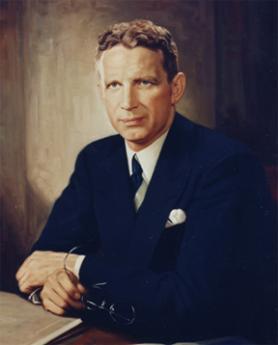5 Volumes
Culture: The Flavors of Philadelphia Life
Philadelphia began as a religious colony, a utopia if you will. But all religions were welcome, so Quakerism mainly persists in its effects on others, both locally and in America, in Art, clubs, and the way of life.
History: Philadelphia and the Quaker Colonies
Philadelphia and the Quaker Colonies
Religion
New volume 2012-07-04 13:22:31 description
Quaker Philadelphia 1683-1776
New volume 2012-11-21 17:33:18 description
Surviving Strands of Quakerism
Of the original thirteen, there were three Quaker colonies, all founded by William Penn: New Jersey first, Pennsylvania biggest, and Delaware so small Quakerism was overcome by indigenous Dutch and Swedes.
Quakers: All Alike, All Different
Quaker doctrines emerge from the stories they tell about each other.
Most groups of Quakers look like other nondescript people. Flambouyant behavior is neither encouraged nor very common. And yet, Quaker discussions are often salted with anecdotes about members who once behaved in notable or highly individualistic ways. Sometimes, the adjective would be "outrageous". A few such stories follow.
The likely dynamic is that these epics stake out the implied borders of approved behavior. The religion has no fixed dogma; behavior no prescribed form. Prescribed behavior was once very notable, and without rejecting, Quakers are in retreat from it. To some extent it is necessary for such a group to assemble its pantheon, or its epic poem.
Quakers can give even those ancient ceremonial forms a unique twist of their own. Extremely reluctant to offend by criticising others, the group uses historic examples to praise, other history to deplore, still other stories as building blocks in a debate by indirection. As Samuel Johnson said, allusions are useful to "adorn a tale".
Rufus Jones, Quaker
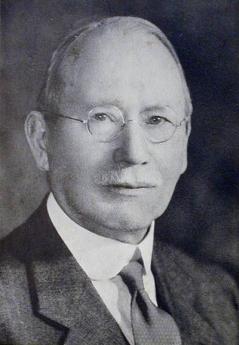
|
| Rufus Jones |
Rufus Jones (1863-1948) dominated the Quaker religion for two generations, causing a transformation which deserves to rank with that of George Fox, William Penn and Elias Hicks. A few elderly Quakers still remember him in person, mostly as an old gentleman who tended to lean back while he spoke, usually hooking his thumbs in the sides of his vest. He was a prodigious writer, having once made a promise to himself that he would read a new book every week, and write a new book, every year. He kept that up for thirty years.
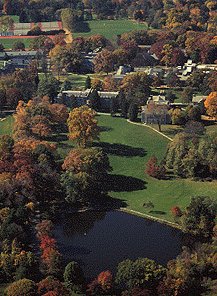
|
| Haverford College |
As a matter of fact, that understates his output. His published works were collected by Clarence Tobias at Haverford College, and run to 168 volumes, plus 8 boxes of pamphlets and articles. His family also donated his personal papers to the College, and they require 75 linear feet of shelf space.
His stated occupation would have been Professor at Haverford College, where his personal influence on the undergraduates was as profound as their influence was to be on the rest of the world. He is regarded as one of the founders of the American Friends Service Committee and the single greatest influence in reuniting the two divisions of Quakerism, although some of the formalities were not completed until after his death.
One other index of his remarkable energy was that he crossed the oceans more than two hundred times during his lifetime.
Perhaps the arrival of mass communication has made it possible to have equal impact with less effort. But Rufus Jones stands for the principle in life, that it never hurts to work just a little harder. If high school students are thinking of applying for admission to Haverford, they better understand what is going to be expected of them.
The Quaker Who Would Be King
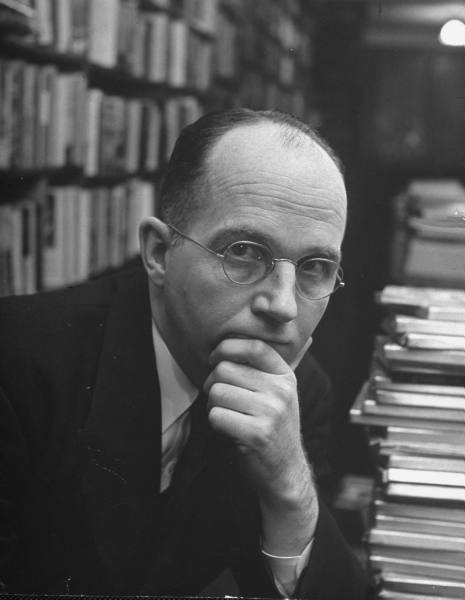
|
| James A. Michener |
James Michener seemed headed for a recognizably Quaker life until show business rearranged his moorings. He was raised as a foundling by Mabel Michener of Doylestown, Pennsylvania, under circumstances that were very plain and poor. Many of his biographers have referred to his boyhood poverty as a defining influence, but they seem to have very little familiarity with Quakers. When the time came, this obviously very bright lad was offered a full scholarship to Swarthmore College, graduated summa cum laude, went on to teach at the George School and Hill Schools after fellowships at the British Museum. And then World War II came along, where he was almost but not exactly a conscientious objector; he enlisted in the Navy with the understanding he would not fight.
While in the Pacific, he had unusual opportunities to see the War from different angles, and wrote little short stories about it. Putting them together, he came back after the War with Tales of the South Pacific. Much of the emphasis was on racial relationships, the Naval Nurse who married a French planter, the upper-class Lieutenant (shades of the Hill School) who had a hopeless affair with a local native girl that was engineered by her ambitious mother, as central characters. Michener himself married a Japanese American, Mari Yoriko Sabusawa, whose family had been interned during the War. There are distinctly Quaker themes running through this story.
And then his book won a Pulitzer Prize, Richard Rodgers and Oscar Hammerstein made it into a Broadway musical hit, then a movie emerged. The simple Quaker life was then struck by the Tsunami of Broadway, Hollywood, show biz and enormous unexpected wealth. Just to imagine this simple Bucks County schoolteacher in the same room with Josh Logan the play doctor is to see the immovable object being tested by the irresistible force. Michener retreated into an impregnable fortress of work. He produced forty books, traveled incessantly, ran for Congress unsuccessfully, and was a member of many national commissions on a remarkably diverse range of topics. Although he lived his life in a simple Doylestown tract house, he gave away more than $100 million to various charities and educational institutions.
In his 91st year, he was on chronic renal dialysis. He finally told the doctors to turn it off.
Slaveowning Quaker Steps Up To The Plate
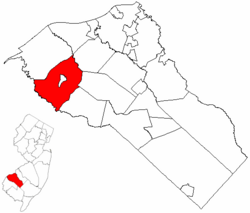
|
| County of Gloucester |
I, Joseph Nicholson of the Township of Woolwich and County of Gloucester, do hereby set free from bondage my Negro Tenor, aged about twenty-two years, and do, for myself, my Executors and Administrators, release unto the said Tenor, all my Right, and all claim whatsoever as to her person or to any Estate that may acquire, hereby declaring the said Tenor, absolutely free, without any interruption from me, or any person claiming under me.
In Witness whereof I have hereunto set my Hand and Seal this twenty-seventh day of the Twelfth Month, in the Year of our Lord One Thousand Seven Hundred and Seventy-nine. 1779.
. . . Joseph Nicholson (Seal)
. . Sealed and Delivered in the presence of Joseph Allen
Differences of Quaker Opinion
A reader of Philadelphia Reflections feels that a balanced appraisal of the slavery issue should include mention of the Quakers who were determined in their opposition to abolition. After all, it took eighty years for the original concern of the Germantown meeting to be fully adopted by the Philadelphia Yearly meeting as a formal minute under the prodding of John Woolman. Since the minute gives permission for particularly concerned Friends to go speak with slave-holding Quakers, it is clear that even some Philadelphia Quakers held slaves and were reluctant to release them.
| ||
| Abraham Redwood 1709-1788 |
Newport, Rhode Island, was an even more awkward case. In colonial times, and even today to some degree, individual Yearly meetings were cordial, but under no formal obligation to respond to each other's decisions. The English seaport of Bristol had developed a sugar trade with the West Indies, and a number of Bristol Quakers moved to Newport. Acquiring very large sugar plantations in the Indies, they shipped molasses to rum distilleries in Newport or else directly back to Bristol where a candy industry had been established. The next step was the shipment of rum and/or trading trinkets to Africa, to be exchanged for slaves, who were taken to the Caribbean and exchanged for a cargo of molasses. Molasses then went to Newport, in a triangular trade pattern which admittedly avoided bringing slave cargo to Rhode Island, but whose principal purpose was taking advantage of the prevailing Atlantic trade winds while maintaining a full cargo over the whole distance. The largest partnership in this trade belonged to four Newport Quakers, one of whom was Abraham Redwood.
Redwood owned 230 slaves in Antigua and was among the richest men in America at the time. It is rather troubling to learn that the average "turnover" of slaves on Antigua was seven years, and that slave rebellions were fairly common. Redwood donated five hundred pounds to the Newport Philosophical Society for the purchase of 1300 books, thereby establishing the Redwood Library in 1747, one of the oldest in the country, although the Library Company of Philadelphia was established in 1731. By almost any standard, Redwood was nevertheless a "weighty" Quaker. When he resolutely refused to sell his slaves, he was "read out" of the meeting.
Details of the discussions which were conducted are no longer readily available, but it is obvious that collision of these two equally stubborn viewpoints was particularly awkward when it led to the banishment of the main employer of the town, and its most important local benefactor. Furthermore, those who worked harmlessly in the rum industry in Newport, or the candy industry in England, were called upon to reflect deeply on the unfortunate slave dealings in which they were, perhaps unknowingly, implicated.
Somehow all of this was accomplished without a total rupture, because thirteen years later Abraham Redwood donated another five hundred pounds to the Quaker Meeting, for the establishment of a school.
Edward Hicks: Peaceable Kingdoms
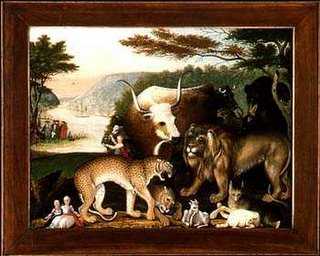
|
| Peaceable Kingdoms |
Edward Hicks (1780-1849), the most important folk artist of American art, was born and lived all his life in Bucks County, Pennsylvania. About a hundred of his paintings survive, 62 of which are versions of "The Peaceable Kingdom". Recently, his Peaceable Kingdoms have been selling for more than $4 million apiece, and the other works at more than a million. As is so often the case, he was born in poverty and spent his life in poverty, so the financial benefits have all gone to middle-men.
Hicks had to overcome an additional handicap. Quakers disapproved of painting things up just for show, and they strongly disapproved of the vanity underlying the act of having a portrait painted of yourself. In fact, the early Quakers would not even permit their names to be placed on their tombstones.
Hicks was apprenticed into the wagon business and showed a talent for painting them. From that, entirely self-taught, he migrated into the business of painting business signs in an age of limited literacy. The Blue Anchor Tavern, the King of Prussia Inn, the Crossed Keys Tavern and the signs of various tradesmen were an essential part of conducting business. It is easy to see these tradesmen signs in the easel paintings of Hicks' later career, which reduce themselves to rearrangements of such individual sign paintings to make a coherent canvas.
If you have seen one "Peaceable Kingdom" you haven't seen them all, but you only need to see one to be able to recognize the others at sight. They generally form a group of wild animals and an occasional child in the right foreground, with a grouping of Quakers and Indians in the left background, taken from Benjamin West's famous portrayal of Penn signing the treaty of peace with the Delaware Indians. The scene is taken from Chapter 11 of Isaiah, in which the lion lies down with the lamb.
Hicks was not a successful farmer, and he had to overcome Quaker resistance even to sell religious paintings with a Quaker moral. No doubt the resistance was strengthened by the fact that his cousin Elias Hicks had split the Quaker church into two (Conservatives and Hicksites) in 1827, and Edward was himself a strong itinerant preacher. Although the plain message of the Peaceable Kingdom is reconciliation between the two branches of Quakerism, he probably encountered a fair amount of coolness among the Conservative opposition.
Hicks was neither an educated nor a sophisticated man. It is forgivable that he made such a strong Old Testament statement when he and his cousin represented a dissenting sect that was gravely doubtful about the wisdom of allowing your life to be ruled by biblical verses.
Victor Rambo, Indian Eye Surgeon

|
| Apostle of Sight |
There have been at least twelve documented generations of the Rambo family in Philadelphia. Historical justification can be found for the idea that this was the first family to settle within what are now the city limits. Victor Clough Rambo MD was an unpaid intern at the Pennsylvania Hospital in 1927; you will find his nameplate on the wall.
Victor early made up his mind that he was going to go where he could do the most good. Considerable thought led him to learn how to extract cataracts, and go to India to extract as many as he could. from time to time, he would return to America to visit family, and to give some speeches to raise money for his project.
The builders of our enormously costly hospital castles might give some thought to the fact that Victor did most of his surgery in tents. His system was to send out teams to the next two villages, whenever he was, with the news, "Bring in your blind people, the eye doctor is coming." When he then arrived, he set about operating on cataracts from dawn to dusk, in a country where the supply of cataracts was essentially unlimited. There was no time to operate on the comparatively minor visual disturbances so commonly treated in America today; he had to concentrate on people who were really blind, and in both eyes.
He wrote a book about his experiences, and perhaps there you could find data to calculate the number of people who were restored to a useful existence by his efforts. Surely, it was thousands. He just kept going at it, and when he died he was a very old man.
Tom Paine: Rabble-Rousing Quaker?
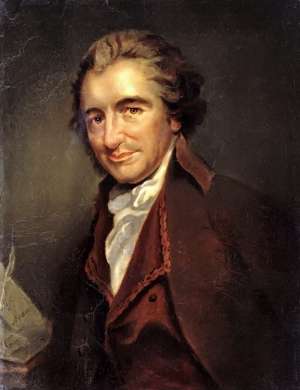
|
| Thomas Paine |
Thomas Paine (1737-1809) was born of Quaker parents, which makes him a "birthright" Quaker. Children born into Quaker families are accustomed to the subtleties of speech and behavior of that religious sect, ultimately growing up to be the main nucleus of tradition. Knowing what they are getting into, however, they are more likely to rebel against it than others who, coming to the religion by choice rather than by birthright, are commonly described as "Convinced Friends."
These stereotypes may or may not explain some of Tom Paine's paradoxes. He certainly was not a pacifist, a quietest, or a plain person. He was an important historical figure; Walter A. McDougall, the famous University of Pennsylvania historian, feels the American colonists might have sputtered and complained about Royal rule for decades, except for Paine. The American Revolution happened when it happened because Tom Paine stirred up a storm.
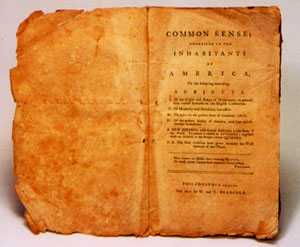 |
| Common Sense |
According to the traditional way of telling his story, Tom Paine was a ne'er do well failure in London. He ran into Benjamin Franklin, who advised him to emigrate to America in 1775, and within a year his pamphlet called ""Common Sense"" had sold 150,000 copies (some even claim 500,000), galvanizing the public and the Continental Congress into action on July 4, 1776. George Washington read Paine's writings to his troops on the eve of the Battle of Trenton. After that, Paine got mixed up with the French Revolution, and apparently became a severe alcoholic, proclaiming atheism all the way. Although Thomas Jefferson remained friendly to the end, Benjamin Franklin essentially told him to go leave him alone, and Washington would cross the street to avoid him. According to the usual line, Tom Paine was a big-mouthed rabble-rouser and a drunk, who traveled the world looking to stir up revolutions.
However, that cannot possibly be a fair recounting of the whole story. Thomas Alva Edison, whose opinion certainly counts for something, regarded Tom Paine as one of the greatest American inventors, creating the first steel bridge, the first hollow candle, and the principle of central drought in heating. Paine early became a close friend of the Hicks family, the central figures in modern Quakerism; it seems a little unclear how much Tom Paine was reflecting the views of Elias Hicks, and how much Hick site Quakerism can be said to have originated in the thinking of Thomas Paine. Paine was very far from being an atheist. In fact, both he and Hicks believed so fervently in the universality of God that both of them scorned the rituals, paraphernalia, and transparent superstitions of -- religion.
Furthermore, Paine was able to reach the rationalists of The Enlightenment with arguments which cut to the heart of Royalist loyalties. America was too big and too remote to be ruled by a king, particularly one who abused his privileges behind a claim of divine right. William the Conqueror, for example, never denied he was a usurper. One way or another, every king must earn his throne. So, as for feudalism and hereditary aristocracy, what was King George doing with all those German mercenaries? After two centuries of democracy, most Americans are too far from feudalism to appreciate the legitimacy of military meritocracy. Whatever King George was up to, he didn't stand for empowerment of the best and the brightest Englishmen, who in fact might well be opposed to him. If you wanted to get to Virginia aristocrats, Boston sea captains, and Kentucky backwoodsmen, that was exactly the line to take in Common Sense.
Unfortunately, Citizen Tom Paine was a freethinker and couldn't be quiet about it in his later books. He didn't like the way the Old Testament Hebrews hungered for a king. He didn't like the way the New Testament sprinkled miracles on top of unassailable moral principles, and he particularly didn't like the claim that God got an unmarried girl pregnant. He antagonized almost every established religion by proclaiming that no one should make a living from religion. He wrote a book called Age of Reason proclaiming all these freethinking ideas, which struck Ben Franklin as such a stupid thing to do that he would not discuss it, beyond saying that even if he should succeed in convincing people to abandon religion, just imagine how much worse they would probably behave without it. George Washington, who hadn't a trace of intellectualism about him, more accurately portrayed the typical American revulsion at anyone who was so unprincipled as to say such unorthodox things in public. Jefferson distanced himself for political reasons rather than intellectual ones. Franklin thought Paine was a fool. Washington and the rest of the country thought he was a viper.
It would have to be conceded -- by anyone -- that Tom Paine was self-destructive, even sassing Robespierre while in a French prison. How is it such a loose cannon could get the American public off dead center and make the Continental Congress grasp the nettle of revolution, in less than a year? Let's go back to how he came to America in the first place. Franklin sent him.
Then he promptly got a job as editor of the Pennsylvania Gazette, which Franklin had owned for thirty years. And then, in an era when the largest city in America had a population of twenty-five thousand, and the printing presses of the day were able to turn out three or four pages a minute, he sold 150,000 copies of the fifty-page "Common Sense." Who but Franklin, in private partnerships with sixty printers, could have possibly authorized, financed, and printed 150,000 copies of a colonial pamphlet? In order to find that much printing capacity in colonial America, a great deal of other printing had to lose its place in the queue.
Even today, a best-seller is defined as a book that sells 50,000 copies, and it generally takes three years to get it done. In the Eighteenth Century, for an unknown alcoholic to get off the boat and find a publisher for a best seller in a few weeks is hard even to imagine. Unless he had important help.
The Origins of Haddonfield
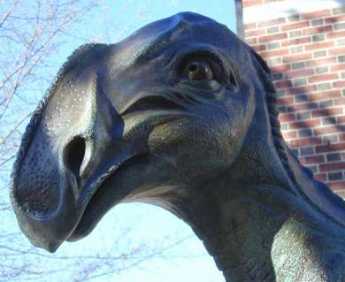
|
| Haddonfield's Dragon |
Haddonfield, New Jersey is named after Elizabeth Haddon, a teenaged Quaker girl who came alone to the proprietorship of West Jersey in 1701 to look after some land which her father had bought from William Penn. Geographically, the land was on what later came to be called the Cooper River, and it must have been a scary place among the woods and Indians for a single girl to set up housekeeping. It was related in the "Tales of a Wayside Inn" that Elizabeth proposed to another young Quaker named John Estaugh. Because no children resulted, she sent to her sister in Ireland to send one of her kids, a girl who proved unsatisfactory. So the kid was sent back, and Ebenezer Hopkins was sent in her place. Thus we have Hopkins pond, and lots of Hopkins in the neighborhood ever since. Eventually, the first dinosaur skeleton was discovered in the blue clay around Hopkins Pond, and now can be seen in the American Museum of Natural History, so you know for sure that Haddonfield is an old place. Eventually, the Kings Highway was built from Philadelphia to New York (actually Salem to Burlington at first) and it crosses the Cooper Creek near the old firehouse in Haddonfield, which claims to house the oldest volunteer fire company in America, but not without some argument about what was first, what is continuous, and therefore what is oldest. Haddonfield is, in short, where the Kings Highway crosses the Cooper, about seven miles east of City Hall in Philadelphia. The presence of the Delaware River in between makes a powerful difference since at exactly the same distance to the west of City Hall, is the crowded shopping and transportation hub at 69th and Market Street. Fifty years ago, Haddonfield was a little country town surrounded by pastures, and seventy years ago the streets were mostly unpaved. The isolation of Haddonfield was created by the river and was ended by the building of the Benjamin Franklin Bridge in 1926. If you go way back to the Revolutionary War, the river created a military barrier, and many famous patriots like Marquis de Lafayette, Dolley Madison, Anthony Wayne and others met in comparative safety from the British in the Indian King Tavern. In a famous escapade, "Mad" Anthony Wayne drove some cattle from South Jersey around Haddonfield to the falls (rapids) at Trenton, and then over the back roads to Washington's encampment at Valley Forge. In retaliation, the British under Col John Simcoe rode into nearby Salem County and massacred the farmers at Hancock's Bridge who had provided the cattle. At another time, the Hessians were dispatched through Haddonfield to come upon the Delaware River fortifications at Red Bluff from the rear. Unfortunately for them, they encamped in Haddonfield overnight, and a runner took off through the woods to warn the rebels at Red Bank to turn their cannons around to ambush the attackers from the rear, who were therefore repulsed with great losses. These stories are told with great relish, but my mother in law found out some background truths. Seeking to join the Daughters of the Revolution in Haddonfield, she was privately told that the really preferable ladies' the club was the Colonial Dames. Quaker Haddonfield, you see, had been mostly Tory.
|
||
| Alfred Driscoll |
A local boy named Alfred Driscoll became Governor of New Jersey, but before he did that he was mayor of Haddonfield. He had gone to Princeton and wanted to know why Haddonfield couldn't look like Princeton. All it seemed to take was a few zoning ordinances, and today it might fairly be claimed that Haddonfield is at least as charming and beautiful as Princeton, maybe nicer. At the very least, it has less auto traffic. Al Driscoll went on to be CEO of a Fortune 500 pharmaceutical corporation, and everyone agrees he was the world's nicest guy. The other necessary component of beautiful colonial Haddonfield was a fierce old lady who was married to a lawyer. Any infraction of Al's zoning ordinances was met with an instant attack, legal, verbal, and physical. A street-side hot dog vendor set up his cart on Kings Highway at one time, and the lady came out and kicked it over. If you didn't think she meant business, there was always her lawyer husband to explain things to you. She probably carried things a little too far, and one resident was driven to the point of painting his whole house a brilliant lavender, just to demonstrate the concept of freedom. Now that she and her husband are gone, the town continues to be authentic and pretty, probably because dozens of other citizens stand quietly ready to employ some of her techniques if the need arises.
The Empire Visits Haddonfield, Briefly
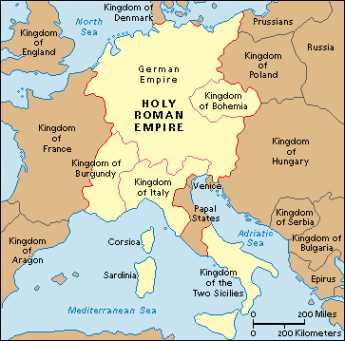
|
| The Holy Roman Empire |
When William Penn extended an invitation to all religions to come to a place of religious freedom, he really meant it. All religions were welcomed and tolerated, but the English government was deathly fearful of French Catholics in Canada, and Spanish Catholics in Florida. The Stuart kings were Catholic, sort of, but the important issue was protecting colonial real estate more than protecting doctrinal purity. When they picked up immigrants at European ports, the ships had to make a stop in England, and any Catholics aboard were removed.
So one very large and important cultural group never had much influence in America, particularly in Philadelphia. The Holy Roman Empire, that large loyally powerful European Catholic group in central Europe and southern Germany, just never got here in any great number. Americans eventually came to hear there was an important culture of some sort centered in Vienna, full of fat jolly folks who danced waltzes, but these apparitions were seldom seen in person and were never much thought about. The steel mills of western Pennsylvania drew in large numbers of Hungarians, and they told of Vienna's rival capital in Budapest, but that rivalry was apparently like Penn and Cornell or maybe Harvard and Yale, and what difference. Occasional visitors from those regions would grow strangely hostile upon encountering this indifference to what seemed pretty important back home. But one must remember to be more polite when around guests, that's all.
It took the Second World War and its attendant cultural struggles to bring a real wave of immigrants to America from Vienna. And these people were neither poor nor uneducated. They quickly moved into the classical music world and assumed roles that were not only important but culturally more advanced than we were accustomed to. They entered the universities and quickly rose to the academic peaks. Many of them could out-sing, out-dance, out-conversationalize any little group of provincial folk who happened to encounter them. Their names began to appear in the social pages, marrying debutantes. To a large degree, this singular immigration movement came to an end when the Cold War did. And that's rather a pity; we could really use more people like that.
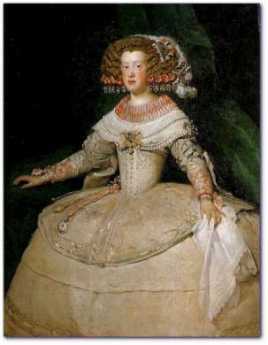
|
| Marie Therese, Austrian Queen of Louis XIV |
One unusual exile from that movement lived for a long time next to the Haddonfield Quaker Meeting, or at least just down a little wooded lane to the rear. The occupant of that house was John Waite, a Quaker who really looked like a Quaker.
Pennyslvania's Boundary: David Rittenhouse, Hero, Lord Baltimore, Villain
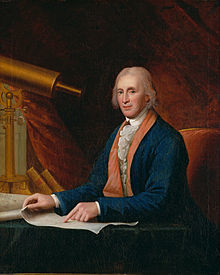
|
| David Rittenhouse |
In the Twenty-first Century, when we know how every American creek and river run, we can see it might have been simple to establish a boundary between the new royal grant to William Penn, and an earlier grant to Lord Baltimore by the then-reigning king's father, Charles I. Essentially: Penn got the Delaware Bay and a lot of wilderness to the west of it. George Calvert, Lord Baltimore, had long held the top half of the Chesapeake Bay and a strip of wilderness to the west of that. Two bays, with two hazy strips of wilderness attached.
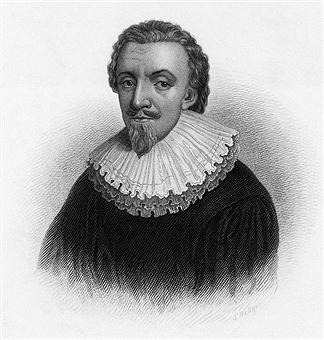
|
| George Calvert, Lord Baltimore |
At what is now Odessa, Delaware, those two bays are only five miles apart; compromise should have settled the issue quickly. Two English gentlemen could have sat down over a pipe and a brew, working something out. However, the English nation was then changing kings, beheading them over matters of religion. A Roman Catholic, Lord Baltimore probably thought an opportunity might emerge from the turmoil if he stalled until matters went his way, since next in line of succession was James, Duke of York, who was a Catholic. But matters fall into the hands of the lawyers when principals of an argument are unable to speak. As we noted elsewhere, in the legal system of the day the last word from the last king was what counted in law courts, accepting any uncertainty about future latest words from future latest kings in order to maintain immediate peace. To lawyers of the time, all this talk about justice, fairness, and geometry was idleness when the nation needed order and stability. So the Calvert family lawyers over the course of eighty years, introduced one specious proposition after another that turned other lawyers purple with rage. Penn's lawyer, Benjamin Chew, beat them at this game, and his mansions in Delaware and Germantown attest to the value attached to this achievement. In other circumstances, posturing might have led to war, as it did in similar disputes with Connecticut. Penn probably knew better, but it takes two to compromise.
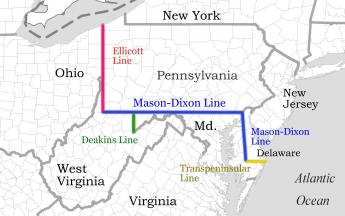
|
| Mason-Dixon Line |
It must be admitted that honest confusion was possible. Sometimes, a line of latitude was a line in the sense Euclid intended: all length and no width. At other times, lawyers and kings were talking about "parallels" as if they were strips, roughly sixty miles wide. If a sixty-mile strip was intended, it was important for a grant to specify whether it extended to the southern edge of the strip, or to the northern edge. But in fact, the state of science in the Seventeenth Century contained uncertainty about both where the strips were, and how wide. And if the grant's language didn't even make it clear whether the parties were talking about strips or width-less lines, eighty years could be a comparatively short time for a court to decide the case. To be fair to Lord Baltimore, many people at the time didn't think these matters were capable of fair solution, so the traditional way of dealing with land disputes was either by force or by craftiness.
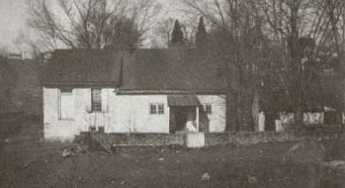
|
| David Rittenhouse Birth Place |
In William Penn the folks from Maryland were, unfortunately, dealing with a friend of the King, who had one of the most brilliant mathematicians in Western civilization as his adviser. David Rittenhouse may have been born in that little farmhouse you can still visit on the Wissahickon Creek, and made his living as a clockmaker, but his native talents in mathematics, astronomy surveying, and instrument construction were so deep and so varied that later biographers are reduced to describing him merely as a "scientist" and letting it go at that. If you want to sample his talents, spend an hour or two learning what a vernier is, and then see if you could apply that insight, as he did, to a compass. So, as it turned out, Rittenhouse was able to describe a twelve-mile circle around New Castle, Delaware, construct a tangent that divides the Delmarva's Peninsula in half, and match it up with an east-west line we now call the Mason Dixon Line. When they finally got around to laying these lines on the ground, Mason and Dixon cut a twenty-four-foot swath through the forest, using astronomical adjustments every night, and laying carved marker stones every fifth of a mile for hundreds of miles. The variation from the line devised by Rittenhouse was at most a fifth of a mile off the mark; the intersection with the north-south line between Maryland and Delaware was less successful. The survey by Mason and Dixon was not quite completed to the Ohio line because the Indians, curious at first, eventually became wild with suspicion at such behavior, particularly the part about going out and aiming cannons at the sky every night. It seems likely that George Calvert, Lord Baltimore, had no more confidence in this madness than the Indians did.
So, the next time you take the train from Philadelphia to Washington DC, reflect that strict reading of the words in the land grants did admit the possibility that your whole trip could either have been within the State of Maryland, or else in the Commonwealth of Pennsylvania, depending on whether lawyers, or scientists, had triumphed in this dispute. Since the Mason Dixon Line later divided not merely two states, but two violently opposed cultures, Rittenhouse must stand out in the history of one of those people who were so smart that most people couldn't understand how smart he was.
Marian B. Sanders, Quaker Activist, 87

|
| Pre K Group |
Marian Binford Sanders, 87, of Mount Airy, a former principal of Lansdowne Friends School who devoted her life to Quaker service, died following gallbladder surgery April 23 at Chestnut Hill Hospital
Mrs. Sanders headed Lansdowne Friends from 1975 to 1981. During that time, her husband, Edwin, was a director of Pendle Hill, a Quaker study center in Wallingford, where the couple lived and where she taught courses. In the early 1980s, the couple lived at Cambridge Friends Meeting in Massachusetts, where they ministered and supervised the facilities.
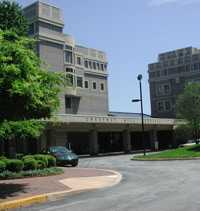
|
| Chestnut Hill |
After retiring to Chestnut Hill in 1985, according to her son, David, Mrs. Sanders lectured on the poet William Blake at Pendle Hill, taught adult literacy, and cared for her husband, who had Alzheimer's disease, until his death in 1995.
She was dedicated to the concept of world citizenship, her son said and opened her home to students and travelers from around the world. In 1997, she received an award from Earlham college in Indiana honoring her and her late husband for the "55 years of the shared struggle for human justice, for an end to war ... and for broad service in the Society of Friends."
Mrs. Sanders grew up in Dayton, Ohio, and Butler, Pa. She earned a bachelor's degree from Earlham College and, in 1939, the year she married, a master's degree in English literature from Pennsylvania State University.
In 1940, her husband, a Quaker pacifist, was sentenced to federal prison for a year for refusing to register for the draft. After he was paroled, the couple taught at Pacific Ackworth Friends School in Temple City, Calif., which they helped found. For more than a year in the 1960s, they trained teachers in Kenya. Later, Mrs. Sanders taught English literature in Russia as an exchange teacher with the American Friends Service Committee.
In addition to her son, David, she is survived by sons Michael, Richard, John, Robert, and Erin; a daughter, Beth Sanders-Blevins; eight grandchildren; and four great-grandchildren.
A memorial service will be at 3 P.M. June 26 at Pendle Hill 338 Plush Mill Rd., Wallingford.
Memorial donations may be made to Lansdowne Friends School, 110 N. Lansdowne Ave. Lansdowne, Pa. 19050.
-Philadelphia Inquirer, May 15, 2004
John Bartram's Garden
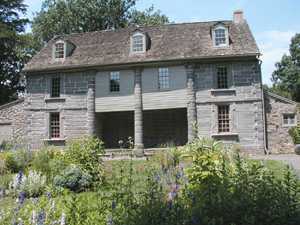
|
| Bartram Gardens |
It's worth a visit to Bartram's Gardens, if only for the astonishment of finding a very large farm and stone Quaker farmhouse within a few blocks of our largest medical center, a stone's throw from the biggest oil refinery on the upper East Coast. And located on the edge of a neighborhood that is, well, past its prime. The trees on the farm are centuries old, so walking around the grounds imparts the feeling of being hundreds of miles from civilization when in fact you are only a hundred yards away from streets that are very urban, indeed. When you turn in certain directions, an occasional skyscraper peeps over treetops, and down the meadows, at the farm's dock on the leafy-banked Schuylkill, you can see oil storage tanks across the river, just a long shot with a 2-iron away. Look upward, to see the upper half of shining towers of Center City.
The farm property as it now stands dates back to 1728, but the site marks the earliest beginnings of the city, nearly a hundred years earlier. The river curves around this hill then snake on down to Delaware through flatlands which were originally swamps ("wetlands", as they say). The hill is as far downriver into malaria territory as the Indians were willing to go, so the Dutch traders had to sail upriver and dock there in order to take thirty or forty thousand fur pelts back to Holland each year. One thing or another has been dumped on the swamps for three hundred years, and the oil companies found it a cheap place to buy enough land for their refineries, close to four or five railroads near Bartram's place, and with access to the high seas. Right now, most of the oil comes from Nigeria, emptying two or so supertankers a week. There has to be enough storage capacity to take care of delays caused by bad weather on the Atlantic, and there has to be access to railroads and highways to carry the finished product away. The rest of a refinery is just thousands of miles of metal pipes, gleaming in the sun.
Sun Oil is trying to be a good neighbor, turning more and more of the area over to nature preserve, as chemical engineers have learned how to work in a smaller space with fewer employees. The banks of the lower Schuylkill are now mostly grown to shrubs and trees, concealing from boat travelers the rather extensive dumps of old auto tires and similar refuse. It's a placid winding trip, increasingly coming to resemble what the Dutch traders once encountered. Especially in May, when the Palomino or Empress trees are in purple bloom. It seems the Chinese packed their porcelains in dried Palomino seed pods, and the discards have grown up to quite a nice display. Logan Square is filled with such trees, quite artfully pruned and maintained; just imagine several miles of the river lined with them, and you can see why the Tourist Bureau is excited about the potential. If you have been to San Antonio you know the potential of an urban river ride, which in this case might go all the way up to the Art Museum. Given enough public response, you can envision two or three-day barge rides from New Castle, Delaware to Pennsbury, with side trips up past Bartram's to the Waterworks. Right now, trips are comparatively limited by the tides, with a few trips a year down from Bartram's to the refineries, and a few more up to the river to the Art Museum. They use floating docks, and permanent docks will need to be built.
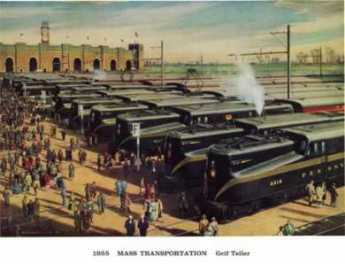
|
| Pennsylvania Railroad |
Originally, the crude oil came from upstate Pennsylvania, near Bradford, and was the main source of the dominance of the Pennsylvania Railroad. Baltimore and New York were also the beginnings of transcontinental railroads, but their freight cars came back empty. The upstate Pennsylvania oil gave the PRR a dominant edge by supplying cargo for two-way revenue.
When George Washington had to retreat from the Battle of Brandywine, the armies had to cross the wetlands, and the river, to get to Philadelphia. Washington got there first and burned the boats after his army got across. He knew, but the British probably did not fully realize, that the first place to ford the Schuylkill was at Norristown. When the British finally got that far, Washington was waiting for them, but a fall hurricane came along and soaked everybody's gunpowder before there could be much of a battle. Unfortunately, Mad Anthony Wayne was unprepared for a nighttime bayonet charge, and there was still quite a slaughter.
You can't wander around John Bartram's house and gardens without getting the impression of considerable wealth. Bartram was interested in botany, becoming the most eminent authority on plants of the Western hemisphere, a very close friend of Benjamin Franklin, and probably the main force behind the creation of the American Philosophical Society. But although Bartram was a hobbyist, he was a shrewd businessman, selling curiosity plants to Europeans, and commercially improved fruits and vegetables to local farmers. There are still some Bartrams around Philadelphia, with a strong Quaker air about them. Around 1850 the place was sold to a zillionaire railroad magnate named Eastwick, who fixed up the place in the high style he learned building the railroads of Russia for the Tsar. The mansion has been torn down, but the stone farmhouse, stone barn, stone sheds, stone outbuildings, stone everything -- endures, like many of the curiosity trees and bushes. Well worth a visit.
Slavery: If This be done well, What is done evil?
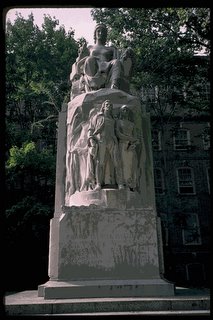
|
| Francis Daniel Pastorius |
The Declaration of the German Friends of Germantown, Against Slavery, in 1688.
These are the reasons why we are against the traffic of men's body, as followeth:
Is there any that would be done or handled in this manner? viz.: to be sold or made a slave for all the time of his life? How fearful and faint-hearted are many at sea, when they see a stranger vessel, being afraid it should be a Turk, and they should be taken, and sold for slaves in Turkey. Now, what is this better done, than Turks do? Yea, rather it is worse for them, which say they are Christians; for we hear that the most part of such negers is brought hither against their will and consent and that many of them are stolen. Now though they are black, we cannot conceive there is more liberty to have them, slaves, as [than] it is to have other white ones. There is a saying , that we shall do to all men like as we will be done [to] ourselves; making no difference of what generation, descent, or color they are. And those who steal or rob men, and those who purchase them, are they not all alike? Here is liberty of conscience, which is right and reasonable; here ought to be likewise liberty of the body, except evil-doers, which is another case. But to bring men hither, or to rob, [steal] and sell them against their will, we stand against. In Europe, there are many oppressed for conscience sake; and here there are those oppressed which are of black color. And we who know others, separating wives from their husbands, and giving them to others: and some sell the children of these poor creatures to other men. Ah! do consider well this thing, you who do it, if you would be done in this manner--and if it is done according to Christianity! You surpass Holland and Germany in this thing. This makes an ill report in all those countries of Europe when they hear of [it,] that the Quakers do here handler men as they handle there the cattle. And for that reason, some have no mind or inclination to come hither. And who shall maintain this your cause, or plead for it? Truly, we cannot do so, except you shall inform us better hereof, viz,: That Christians have liberty to practice these things, Pray, what thing in the world can be done worse, towards us, than if men should rob or steal us away, and sell us for slaves to strange countries; separating husbands from their wives and children. Being now this is not done in the manner we would be done at, [by]; therefore, we contradict [oppose], and are against this traffic of men's body. And we who profess that it is not lawful to steal, must, likewise, avoid purchasing such things as are stolen, but rather help to stop this robbing and stealing, if possible. And such men ought to be delivered out of the hands of the robbers, and set free as in Europe. Then is Pennsylvania to have a good report, instead, it hath now a bad one, for this sake, in other countries. Especially whereas the Europeans are desirous to know in what manner the Quakers do rule in their province; and most of them do look upon us with an envious eye. But if this is done well, what shall we say is done evil?
If once these slaves ( which they say are so wicked and stubborn men,) should join themselves--fight for their freedom, and handle their masters and mistresses, as they did handle them before; will these masters and mistresses take the sword at hand and war against these poor slaves, like, as we are able to believe, some will not refuse to do? Or, have these poor negers not as much right to fight for their freedom, as you have to keep them slaves?
Now consider well this thing, if it is good or bad. And in case you find it to be good to handle these blacks in that manner, we desire and require you hereby lovingly, that may inform us herein, which at this time never was done, viz., that Christians have such a liberty to do so. To this end, we shall be satisfied on this point, and satisfy likewise our good friends and acquaintances in our native country, to whom it is a terror, or fearful thing, that men should be handled so in Pennsylvania.
This is from our meeting at Germantown, held ye 18th of the 2nd month, 1668, to be delivered to the monthly meeting at Richard Worrell's.
Garret Henderich
Derick op de Graeff
Francis Daniel Pastorius
Abram op de Graeff.***
At our Monthly meeting, at Dublin, ye 30th 2d mo., 1688, we have inspected ye matter, above mentioned, and considered of it, we find it so weighty that we think it not expedient for us to meddle with it here, but do rather commit it to ye consideration of ye quarterly meeting; ye tenor of it is related to ye truth.On behalf of ye monthly meeting,
Jo. Hart.
***
This above mentioned was read in our quarterly meeting, at Philadelphia, the 4th of ye 4th mo., '88, and was from thence recommended to the yearly meeting, and the above said Derick, and the other two mentioned therein, to present the same to ye above said meetings, it is a thing of too great a weight for this meeting to determine.Signed by order of ye meeting.
Anthony Morris
Inazo Nitobe, Quaker Samurai
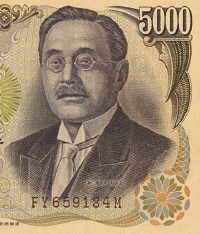
|
| Inazo Nitobe |
The story of Inazo Nitobe (1862-1933) comes in two forms, one from the Philadelphia Quaker community, and the other from his home, in Japan. One day in Philadelphia, a well-known ninety-year-old Quaker gentleman, rumpled black suit, very soft voice -- and all -- happened to remark that his Aunt had married a Samurai. A real one? Topknot, kimono, long curved sword, and all? Yup. Uh-huh.
That would have been Inazo Nitobe, who met and married Moriko, nee Elizabeth Elkinton, while in college in Philadelphia. He became a Quaker, and when the couple returned to Japan, the Emperor then found himself confronted with a warrior nobleman who was a pacifist. You can next perceive the hand of his Quaker wife in the deferential diplomatic suggestion that there were vacancies for Japan at the League of Nations and the Peace Palace in the Hague. Perhaps, well perhaps, there could be service to his Emperor as well as his new religion in such an appointment for her new husband. Good thinking, let it be done. As far as Philadelphia is concerned, Ambassador Nitobe next appeared when Japan was invading Manchuria. The Emperor had sent Nitobe on a tour of America to explain things. At the meetinghouse then on Twelfth Street, Nitobe adopted the line that Japan was only bringing peace and order to a chaotic barbarian situation, actually saving many lives and restoring quiet. After a minute of silence, Rufus Jones rose from his seat on the "facing bench": He was having none of it. And that was that for Nitobe in Philadelphia.
The other side of this story quickly appears if you go to Japan and ask some acquaintances if they happen to have heard the name Inazo Nitobe. That turns out to be equivalent to asking some random American if he has ever heard of Abraham Lincoln. To begin with, Nitobe's picture appears on the 5000 Yen ($50) bills in everybody's pocket. He was the founder of the University of Tokyo, admission to which now is an automatic ticket to Japanese success. He wrote a number of books that are now required reading for any educated Japanese. A number of museums, hospitals, and gardens are named after him; one of them outside Vancouver, at the University of British Columbia.
Nitobe's father, Jujiro Nitobe, had been the best friend of the last Shogun, deposed by the return of the Emperor to effective control after Perry opened up Japan to Western ideas. The Shogun was beheaded, of course, and the tradition was that the victim could ask his best friend to do the job because he would do it swiftly. Jujiro was unable to bring himself to the task, refused, and his family was accordingly reduced to poverty. Subsequently, the Samurai were disbanded by the newly empowered Emperor, given a pension, and told to look for peaceful work. Inazo Nitobe was in law school when the Emperor's emissary came and said that Japan did not need culture, it had plenty of culture. The law students would please go to engineering school, where they could help Japan westernize.
Nitobe later wrote a perfectly charming memoir, called Reminiscences of Childhood in the Early days of Modern Japan , which dramatizes in just a few pages just how wide the cultural gap was. For example, Nitobe's father brought home a spoon one day, and this curious memento of how Westerners eat was placed in a position of high honor. One day, a neighbor ordered a suit of western clothes, and hobbled around it, saying he did not understand how Westerners are able to walk in such clothes. He had the pants on backward.
One of Nitobe's greatest achievements was to struggle with his appointment as Governor of Formosa (Taiwan). Japan acquired this primitive island in 1895, and Nitobe got the uncomfortable role of colonist in Japan's first experience with colonization. He sincerely believed it was possible for Japan to bring the benefits of Westernization to another Asian backwater, but just as the British found in their colonies, there was precious little gratitude for it. Although he was undoubtedly acting dutifully on the Emperor's orders when he later came to Twelfth Street Meeting, he surely knew -- perhaps even better than Rufus Jones -- that there was something to be said on both sides, no matter how conflicted you had to be if you were in a position of responsibility. This most revered man in his whole nation almost surely saw he had been a complete failure in Philadelphia.
Henry Cadbury Dresses Up for the King

|
| Henry Cadbury |
There are a few old Quaker Clothes in the attics of their descendants, and on suitable occasions, an old broad-brimmed hat or two will appear at a Quaker gathering, for amusement. Quakers gave up the old style of "plain dress" when it became generally agreed that such eccentric dress was not plain at all but rather drew attention to itself. On the other hand, there is a distinctly unfashionable quality to almost everything Quakers do wear. When silk and nylon stockings were fashionable for women, Quaker women often wore black stockings. When it became the style for women to sport black stockings, Quaker women usually wore flesh-colored nylons. Among men, thin metal-trimmed spectacles displayed the same counter-fashionable tendency. Nowadays, these little quirks are often public signals among strangers, a way of wig-wagging "I notice you are a Quaker, so am I." And of course, unfashionable clothes are cheaper, and that's always a good thing.
And so it happened in 1947 that the Quakers were awarded the Nobel Peace Prize, with information passed along that white tie and tails were the expected form of dress at the ceremony. Henry Cadbury was selected to receive the award on behalf of the American Friends Service Committee, and you can be sure Henry Cadbury didn't own a set of tails. Henry was also very certain he wasn't going to go out and buy a set, just for a single wearing.
The AFSC collects used clothing, to distribute to the poor. Henry inquired whether there might be a set of white tie and tails to be found in the used-clothing bin, and luckily there was. It had been collected on behalf of the Budapest Symphony Orchestra when that impoverished but distinguished group of musicians was invited to give a concert in London. One of the monkey suits more, or less, fit Henry.
So, after investing in dry cleaning and pressing, Henry packed it up and went off to Oslo, to meet the King.
Germantown Before 1730
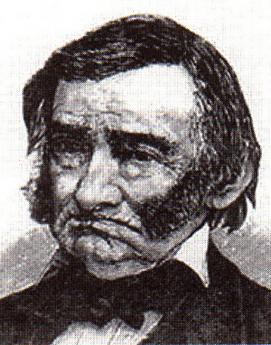
|
| Rev. Wilhelm Rittenhausen |
The flood of German immigrants into Philadelphia after 1730 soon made Germantown, into a German town, indeed. From 1683 to 1730, however, Germantown had been settled by Dutch and Swiss Mennonites, attracted by the many similarities between themselves and the Quakers of England. They spoke German dialects to preserve their separateness from the English-speaking majority but belonged to distinctive cultures which were in fact more than a little anti-German. This curiosity becomes easier to understand in the context of the mountainous Swiss burned at the stake by their Bavarian neighbors, Rhinelanders who sheltered them from various warring neighbors, and Dutchmen at the mouth of the Rhine, all adherents of Menno Simon the Dutch Anabaptist, but harboring many differences of viewpoint about the tribes which surrounded them.
Anabaptism is the doctrine that a child is too young to understand religion, and must be re-baptized later when his testimony will be more binding. In retrospect, it seems strange that such a view could provoke such antagonism. These earlier refugees were often townspeople of the artisan and business class, rapidly establishing Germantown as the intellectual capital of Germans throughout America. This eminence was promoted further through the establishment by the Rittenhouse family (Rittinghuysen, Rittenhausen) of the first paper mill in America. Rittenhousetown is a little collection of houses still readily seen on the north side of the Wissahickon Creek, with Wissahickon Avenue nestled behind it. The road which now runs along the Wissahickon is so narrow and windy, and the traffic goes at such dangerous pace, that many people who travel it daily have never paid adequate attention to the Rittenhousetown museum area. It's well worth a visit, although the entrance is hard to find (try going west on Wissahickon Avenue then turning around, a little beyond the entrance).
Even today, printing businesses usually locate near their source of paper to reduce transportation costs. North Carolina is the present pulp paper source, several decades ago it was Michigan. In the Seventeenth and Eighteenth centuries, paper came from Germantown, so the printing and publishing industry centered here, too. When Pastorius was describing the new German settlement to prospective immigrants, he said, "Es ist nur Wald" -- it's just a forest. A forest near a source of abundant water. Some of the surly remarks of Benjamin Franklin about German immigrants may have grown out of his competition with Christoper Sower (Saur), the largest printer in America, and located of course in Germantown.
Francis Daniel Pastorius was sort of a local European flack for William Penn. He assembled in the Rhineland town of Krefeld a group of Dutch Quaker investors called the Frankford Company. When the time came for the group to emigrate, however, Pastorius alone actually crossed the ocean; so he was obliged to return the 16,000 acres of Germantown, Roxborough and Chestnut Hill he had been ceded. Another group, half Dutch and half Swiss, came from Krisheim (Cresheim) to a 6000-acre land grant in the high ground between the Schuylkill and the Delaware. The time was 1683. The heavily Swiss origins of these original settlers give an additional flavor to the term "Pennsylvania Dutch".
Where the Wissahickon crosses Germantown Avenue, a group of Rosicrucian hermits created a settlement, one of considerable musical and literary attainment. The leader was John Kelpius, and upon his death the group broke up, many going further west to the cloister at Ephrata. From 1683 to 1730 Germantown was small wooden houses and muddy roads, but there was nevertheless to be found the center of Germanic intellectual and religious ferment. Several protestant denominations have their founding mother church on Germantown Avenue, Sower spread bibles and prayer books up and down the Appalachians, and even the hermits put a defining Germantown stamp on the sects which were to arrive after 1730. The hermits apparently invented the hex signs, which were carried westward by a later, more agrarian, German peasant immigration, passing through on the way to the deep topsoil of Lancaster County.
Dr. Cadwalader's Hat
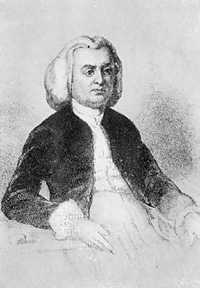
|
| Dr. Thomas Cadwalader |
The early Quakers disapproved of having their pictures painted, even refused to have their names on their tombstones. Consequently, relatively few portraits of early Quakers can be found, and it might, therefore, seem surprising to see a picture of Dr. Thomas Cadwalader hanging on the wall at the Pennsylvania Hospital. A plaque relates that it was donated by a descendant in 1895. Another descendant recently explained that the branch of the family which continued to be Quaker spells the name, Cadwallader. Dr. Cadwalader of the painting, famous for presiding over Philadelphia's uproar about the Tea Act, was then selected to hear out the tea rioters because of his reputation for fairness and remains famous even today for his unvarying courtesy.
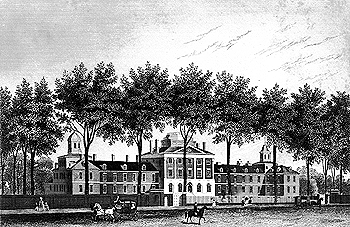
|
| Pennsylvania Hospital |
In one of the editions of Some Account of the Pennsylvania Hospital, I believe the one by Morton, there is a story about him. It seems there was a sailor in a bar on Eighth Street, who announced to the assemblage that he was going to go out the swinging doors of the taproom and shoot the first man he met. So out he went, and the first man he met was Dr. Cadwalader. The kindly old gentleman smiled, took off his hat, and said, "Good Morning, Sir". And so, as the story goes, the sailor proceeded to shoot the second man he met. A more precise rendition of this story comes down in the Cadwalader family that the event in the story really took place in Center Square, where City Hall now stands, but which in colonial times was a favored place for hunting. A man named Brulumann was walking in the park with a gun, which Dr. Cadwalader took as a sign of a hunter. In fact, Brulumann was despondent and had decided to kill himself, but lacking the courage to do so, had decided to kill the next man he met and then be hanged for murder. Dr. Cadwalader's courteous greeting, doffing his hat and all, befuddled Brulumann who went into Center House Tavern and killed someone else; he was indeed hanged for the deed.
I was standing at the foot of the staircase of the Pennsylvania Hospital, chatting to a young woman who from her tailored suit was obviously an administrator. I pointed out the Amity Button, and told her its story, along with the story of Jack Gallagher, whom I knew well, bouncing an empty beer keg all the way down to the Great Court from the top floor in the 1930s, which was then being used as housing for the resident physicians. Since the young woman administrator was obviously beginning to regard me like the Ancient Mariner, I thought one last story about courtesy was in order. So I told her about Dr. Cadwalader and the shooting.
"Well," she said, "The moral of that story obviously is that you should always wear a hat." There then is no point to further conversation, I left.
Contemporary Germantown
The Strittmatter Award is the most prestigious honor given by the Philadelphia County Medical Society and is named after a famous and revered physician who was President of the society in the 1920s. There is usually a dinner given before the award ceremony, where all of the prior recipients of the award show up to welcome to this year's new honoree.
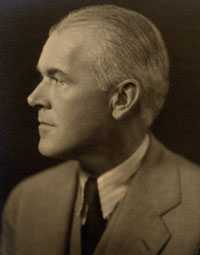
|
| Bockus |
This is the reason that Henry Bockus and Jonathan Rhoads were sitting at the same table, some time around 1975. Bockus had written a famous multi-volume textbook of gastroenterology which had an unusually long run because it was published before World War II and had no competition during the War or for several years afterward; to a generation of physicians, his name was almost synonymous with gastroenterology. In addition, he was a gifted speaker, quite capable of keeping an audience on the edge of their chairs, even though after the speech it might be difficult to recall just what he had said. On this particular evening, the silver-haired oracle might have been just a wee bit tipsy.
Jonathan Rhoads had likewise written a textbook, about Surgery, and had similarly been president of dozens of national and international surgical societies. He devised a technique of feeding patients intravenously which has been the standard for many decades, and in his spare time had been a member of the Philadelphia School Board, a dominant trustee of Bryn Mawr and Haverford Colleges, and the provost of the University of Pennsylvania. Not the medical school, the whole university, and is said to have been one of the best provosts of the University of Pennsylvania ever had. When he was President of the American Philosophical Society, he engineered its endowment from three million to ten times that amount. For all these accomplishments, he was a man of few words, unusual courtesy -- and a huge appetite in keeping with his rather huge farmboy physical stature. On the evening in question, he was busy shoveling food.
"Hey, Rhoads, wherrseriland?". Jonathan's eyes rose to the questioner, but he kept his head bowed over his plate.
"HeyRhoads, Westland?" The surgeon put down his fork and asked, "What are you talking about?"
"Well," said Bockus, "Every famous surgeon I know, has a house on an island, somewhere. Where's your island?
"Germantown," replied Rhoads, and returned attention to his dinner.
John Bogle, A Prophet In Our Valley
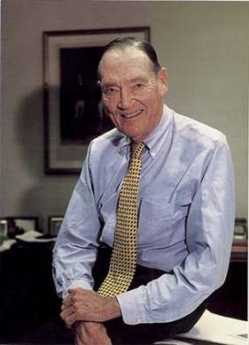
|
| John C Bogle |
Those who never met a living legend would have found in John C. Bogle a good place to begin, 80-plus years old, lively and very charming. The Vanguard Investment Company, which he founded, provides him a little think tank office, out of which have come several books and many articles (somebody else is running the company, now.) The drift of most of what he writes and most of his testimony to Congress, or at awards ceremonies, is that mutual funds charge too much. When the press decides to feature him, the spectacular theme is emphasized that in 1996 this current squash and tennis player was just about dead, and had a transplant of someone else's heart to keep him going. A populist graduate of Pre-Vietnam Princeton, and also the embodiment of a medical miracle, now, those things are newsworthy.
Future students of finance, however, will regard those things as minor footnotes. Bogle's real achievement was the invention of the index fund. Indexing had two purposes and probably stumbled onto a third. It combined diversification, low administrative costs, and outstanding investment performance in a single security. There will be foot-dragging in the boutiques and bucket shops, but this invention is well on its way to converting investment management from an inefficient luxury of the rich into an affordable efficient commodity for everybody. You will know that a fundamental has been established on the day when the U.S. Government starts buying index funds, or at least when it permits them to help finance Medicare or Social Security. Such invested funds of a government qualify for the term Sovereign-wealth funds; in fact, since major problems can be imagined if governments start to vote common shares, Heaven helps us if they don't stick to index funds. The investment community already knows that something basic has arrived, by their own standards. The original index fund will soon have a trillion dollars invested in it. Just do the math on what you would be paid if you realized a fifth of one percent, year after year, on managing a trillion. And then reflect on the impact on transactional costs generally, when many eminent firms still charge five times that much. To make barrels of money and still be a hero for making your product remarkably cheap -- now, there's a Philadelphia dream.
A technical explanation. Five hundred stocks as one lump are cheaper to buy and sell as a "program trade", and perform more smoothly, than any of them individually, because the ups balance out the downs. Transaction costs are less, because there is hardly any switching among the 500 stocks by the committee in charge, and therefore few taxes to pay. Fine, but what might not be easily anticipated is that the lumped investment performs better, unmanaged than the vast majority of funds managed by experts. Large funds, at least, are forced to buy the
stocks of large corporations. Large corporations are inherently subject to immense scrutiny and publicity, so there remains little advantage to being on the inside or acting quickly on general economic news. What everybody knows, in Wall Street parlance, isn't worth knowing. Index funds made up of small companies, or foreign companies, may possibly not work out as well as those limited to large domestic companies. For a while, it was thought index funds would out-perform when everything in the marketplace was going up, but underperform when most things were going down in a bear market. Not so, they seem to work better any way you look at them. They are the standard for performance, not just a measure of the averages. These things are here to stay.
Well, maybe. Reservations remain, although they don't have much to do with investment choices. It may take decades to happen, but it's hard to escape the uneasy feeling that some manager, someday, will figure out a way to divert a hundredth of a percent, or so, into his own pocket. A hundredth of a percent of a trillion dollars is quite a temptation. Perhaps an even more serious concern is that voting control of the corporations in the portfolio inevitably gets diluted by widespread index investing. Management supervision by stockholders is potentially lessened. Whether this will lead to management abuses, a temptation for minority stockholder intrusions, or to the government over-regulation, taking any of these directions would likely create a new power balance in the economy.
Meanwhile, John Bogle, who died on January 16, 2019, is on his way to financier sainthood. He's certainly in a class with Anthony Drexel and Nicholas Biddle, already. And other icons are under review.
Lin
Lindley B. Reagan, M.D.
July 16, 1918 -- September 10, 1995
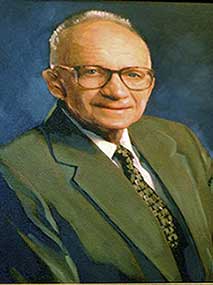
|
| Lindley B. Reagan, M.D |
The first and oldest hospital in America, the Pennsylvania Hospital at 8th and Spruce Streets, always had a strong Quaker flavor but a unique medical tradition as well. Since it was the only American hospital for decades, later becoming the home hospital of the first medical school in the country, it impressed its ideals and traditions on the whole of American medicine. However, it imposed so many difficult demands on its trainees that a century or more of an evolving profession simply moved away from copying it. It was, in 1960, the last hospital in the country to begin paying its resident physicians anything at all, one of the last privately controlled American hospital to adopt a billing and accounting department, and one of the last if not the last to regard a handful of private beds as merely a convenience for the patients of the staff physicians. In 1970 its method of maintaining inventory was to notice that the supplies on the shelf were running low, and ordering some more. It was founded in Benjamin Franklin's words, for the "sick poor, and if there is room, for those who can pay," and could only survive into the late 20th Century through private donations and the freely contributed services of the doctors, student nurses and administration. No amount of money could induce people to work as hard as they worked. You might say this was the only aspect of Medieval monasteries which Philadelphia Quakers thought worthy of imitating.
Somewhere in this set of ideas was the treasured concept of a rotating internship, preferably two years long, prior to entering specialty training through a residency. In 19th Century Vienna, it was a matter of rule that an intern was just that, physically confined within the walls for the term of service, and a resident was just that, someone who lived on the campus. The Pennsylvania Hospital had no such rule, but since it paid the doctors nothing for five or six years of eighty-hour weeks, their poverty forced them to satisfy the Viennese rules by default. Entertainment was bridge or poker in the intern quarters, conversational chit-chat was a description of bizarre cases or peculiar patients, a weekend "off-call" was a good time to catch up on correspondence. There were student nurses around, of course, but the matron was a pretty no-nonsense chaperon. Every class of interns contained one or two millionaires by inheritance, but peer pressure made them nearly indistinguishable in the daily routines. Aristocrats' main value to the resident physician community was their access to the ruling families in the city, and hence to the governance of the hospital, in case governance should occasionally abuse the vulnerability of the trainees.
I find in retirement that most of my colleagues are now willing to tell stories of the "old days" which they were unwilling to tell at the time. Over several glasses of the finest single-malt in a walnut-paneled club, one such story recently surfaced. It concerned Lin.
Lin was a member of an old Quaker family, surprising everybody during the Second World War by volunteering as a junior physician in the Navy. He was assigned to a marine regiment in the Pacific Theater and went through some of the most murderous fightings on Iwo Jima and Guadalcanal. Our grapevine reported that the enlisted Marines in his outfit absolutely worshipped him, and I easily believe there was a lot of quiet heroism behind that gossip. He told me he had decided to become an internist while in the Pacific, but somehow only a surgical residency was available when the War was over, so he took it. He was probably the best internist on the staff, and it showed in his conduct of surgery, where it sometimes matters more what you decide to cut than what you cut. He always looked exhausted, but never hesitated to drive himself another hour when the situation demanded it. One day, he had to excuse himself from an operation, an almost unheard-of event, and testing his own urine, found it loaded with sugar. So, the soft-spoken Quaker internist who was primarily doing surgery had to add the burden of insulin injections to his load. If he ever complained about that or any other thing, no one could remember hearing it.
At about the third glass of single malt, the story came out. My old friend, like the rest of us, had to spend a year as a surgical intern during the two-year rotating internship; he hated surgery and didn't mind telling the world. At the moment in question, he was the assistant at some neck surgery, with Lin performing the actual surgery. He was told to take a long pair of scissors and cut off the excess strands of sutures after Lin tied the knots; that was known as trimming the ligatures. They were working deep in the crevices of the patient's neck. Lin held up the loose ends of the knot and ordered, "Cut". My friend inserted the long scissors into the hole and snipped -- accidentally cutting right through the jugular vein.
As would be expected, a fountain of blood came up out of the hole, and Lin stopped it by putting his thumb on the cut ends of the vein. "Well," said Lin, "I guess we'll have to fix that." And did.
With tears in his eyes, my octogenarian friend cried out to the startled clubroom. "God bless you. God bless you, Lin."
Perhaps the point isn't clear to those who didn't go through the process, so let's be more explicit. Both my friend and I worshipped Lin, as a person, a teacher, and a surgeon. He was the perfect agent for his patients, without the tiniest trace of conflict of interest, income-maximizing or whatnot. He was as technically skillful as it is useful to be, but he was the thinking man's surgeon as well as the utterly faithful servant of the best interests of the humblest patient. He was, in the opinion of his closest professional associates, the best surgeon in the world. In need of surgery ourselves, all of us would have flown the Atlantic to have him operate on us. For reasons of his own, he was to spend the forty years of his professional life in a small country town with a small hospital, scarcely a famous surgeon but a beloved one to his community. Over the past sixty years, I have had a number of opportunities to know many surgeons who would be in contention for the title of the best surgeon in the world. Some have written books, some have struggled successfully upward through vicious competition, some of them would be called "Rainmakers" if the research world followed the pattern of lawyers and architects. One or two have won Nobel Prizes for surgical innovations, but that's different from being the best surgeon around. The best surgeon in the world was Lin, faithfully plying his trade in a little town that could not possibly know how lucky they were.
Pembertons
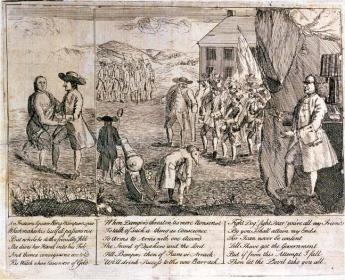
|
| Israel Pemberton, Ben Franklin satire l |
Ralph Pemberton was an English Quaker well before 1650; he may have been a Quaker before William Penn was one. As an old man, he accompanied his son Phineas to Pennsylvania in 1682. They established a farm on the banks of Delaware in Bucks County called Grove Place, and Phineas soon became one of the chief men in the colony. In the next generation, Israel Pemberton became one of the best educated, richest merchants in the colony. But it was Israel's son also called Israel, who earned the title of King of the Quakers. He was one of the founding Managers of the Pennsylvania Hospital along with Benjamin Franklin and one of his brothers, James Pemberton, and was a generous philanthropist and leader of a number of other civic organizations. Just exactly what provoked his famous political disputes with Franklin is not clear, but he was a leading friend of the Indians, whom Franklin never much liked. Israel Pemberton strongly and effectively argued William Penn's policy of friendship with the Indians, particularly insisting that sales of land to colonists should be prevented until there was a clear agreement with the Indians about the ownership. Unfortunately, pressures built up as Europeans immigrated faster than this policy could accommodate smoothly, and Franklin mostly sided with the impatient immigrants -- and squatters. This disagreement came to a head in 1756 when Pemberton negotiated a treaty of peace with the Indians at a conference at Easton. Although this treaty seemed to settle matters, it came against a background of the descendants of William Penn abandoning Quakerism. They, however, remained the proprietary owners of the Province with a more narrow focus on speeding up land sales to maximize their investment. Much of the internal dynamics of these quarrels before the Revolutionary War remain unclear and possibly somewhat misrepresented.
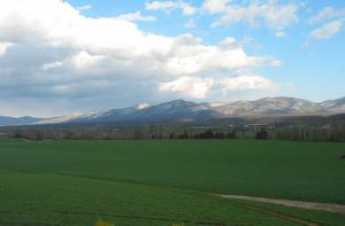
|
| Shenandoah Valley |
When the Revolution came, Pemberton viewed it with disfavor, mostly for pacifist rather than purely Tory reasons. Feelings ran high since the Pembertons were influential citizens with the potential to dissuade wavering neighbors, which made it difficult to tolerate them as invisible bystanders. However that may be, the three Pemberton brothers and twenty other wealthy and influential Quakers were arrested and, without hearing or trial, thrown in the back of an oxcart and sent into exile in Virginia for eight months. Their journey was a curious one, along a trail up the Schuylkill to the ford at Pottstown, and then down the Shenandoah Valley, an area in which they were well known and highly respected, greeted with great sympathy as they traveled. Isaac's brother John, who had spent several years as a missionary, died during this exile.
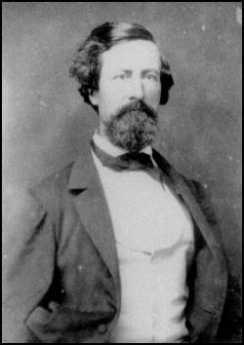
|
| John Clifford Pemberton |
In some ways, the most curiously notable Pemberton was John Clifford Pemberton, who applied to West Point on his own initiative and was appointed by Andrew Jackson who had been a friend of his father. In itself, it is curious that so combative a person and so vigorous an enemy of the Indians -- as Jackson certainly was -- would have Quaker friendships. But he did not misjudge John Clifford, who became a diligent professional warrior for his country in a number of military incidents with the Indians, the Mexicans, and the Canadians, rising to the rank of captain in the regular Army at the opening of the Civil War. In spite of personal efforts by General Winfield Scott to dissuade him, he resigned his commission and volunteered in the Confederate army. He was quickly promoted to major, then a brigadier general and eventually to Lieutenant General. As such, he was the commanding Confederate officer at the fifty-day siege of Vicksburg where he was finally forced to surrender to Grant's army. In a prisoner exchange, he was returned to the Confederate side, which they had no openings for Lieutenant Generals. He resigned and re-enlisted as a common soldier, but was quickly promoted to the rank of Colonel, in charge of the artillery at the final siege of Richmond. After the war, he became a farmer in Warrenton, Virginia, but was visiting at the family home in Penllyn when he died in 1881. John Clifford Pemberton, the highest-ranking general on the grounds, lies buried in Laurel Hill cemetery right next to Israel Pemberton. In some sort of triumph of the South, he here out-ranks George Gordon Meade, the hero of Gettysburg. Just how his pacifist family reconciled itself to his heroism can only be imagined.
Logan, Franklin, Library
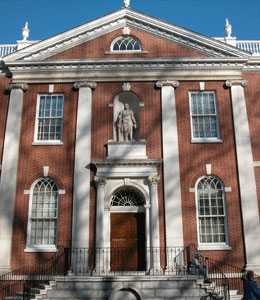
|
| The Library Company of Philadelphia |
Jim Greene is the librarian of the Library Company of Philadelphia, and one of the leading authorities on James Logan, the Penn Proprietors' chief agent in the Colony. Since Logan and Ben Franklin were the main forces in starting the oldest library in America, knowing all about Logan almost comes with the job of Librarian. We are greatly indebted to a speech the other night, given by Greene at the Franklin Inn, a hundred yards away from the Library.
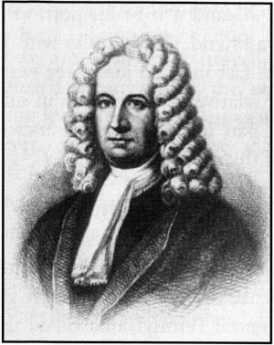
|
| James Logan |
Logan has been described as a crusty old codger, living in his mansion called Stenton and scarcely venturing forth in public. He was known as a fair dealer with the Indians, which was an essential part of William Penn's strategy for selling real estate in a land of peace and prosperity. Unfortunately, Logan was behind the infamous Walking Purchase, which damaged his otherwise considerable reputation. Logan must have been a lonesome person in the frontier days of Philadelphia because he owned the largest private library in North America and was passionate about reading and scholarly matters. When he acquired what was the first edition of Newton's Principia, he read it promptly and wrote a one-page summary. Comparatively few people could do this even today. It's pretty tough reading, and those who have read it would seldom claim to have "devoured" it.
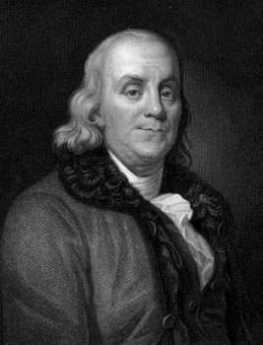
|
| Benjamin Franklin |
Except young Ben Franklin, who never went past second grade in school. The two became fast friends, often engaging in such games as constructing "Magic Squares" of numbers that added up to the same total in various ways. For example, Franklin doodled off a square with the numbers 52,61,4,13,20,29,36,45 (totaling 260) on the top horizontal row, and every vertical row beneath them totaling 260, as for example 52,14,53,11,55,9,50,16, while every horizontal row also totaled 260 as well. The four corner numbers, with the 4 middle numbers, also total 260. Logan constructed his share of similar games, which it is difficult to imagine anyone else in the colonies doing at the time.
Logan and Franklin together conceived the idea of a subscription library, which in time became the Library Company of Philadelphia in 1732. The subscription required of a library member was intended to be forfeited if the borrower failed to return a book. Later on, the public was allowed to borrow books, but only on deposit of enough money to replace the book if unreturned. We are not told whose idea was behind these arrangements, but they certainly sound like Franklin at work. More than a century later, the Philadelphia Free Library was organized under more trusting rules for borrowing which became possible as books became less expensive.
Logan died in 1751, the year Franklin at the age of 42 decided to retire from business -- and devote the remaining 42 years of his life to scholarly and public affairs. He first joined the Assembly at that time, so he and Logan were not forced into direct contention over politics, although they had their differences. How much influence Logan exerted over Franklin's plans and attitudes is not entirely clear; it must have been a great deal.
Two Hotheads May Have Destroyed an Empire

|
| King George III |
Combatants in a war often personalize the enemy in a single person. In 1776 the American colonists blamed it all on King George III. The British might have picked Sam Adams or Thomas Paine. Things are of course always vastly complicated in the affairs of great nations. Economics and national power are strong forces, like our culture, religion, and the accidents of geography and history. But when matters teeter on the edge of a cliff, insignificant pests can occasionally start an avalanche.
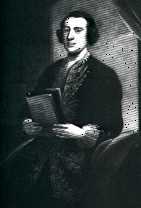
|
| Charles Townshend |
Consider first Charles Townshend, the Chancellor of England's exchequer in 1768. Townshend didn't particularly want the job, hoping instead for the Admiralty. None of the political power brokers particularly wanted to give him the job, but ultimately regarded it as the place he could do the least harm. He might have had no less an advisor than Adam Smith, who was the tutor of his son, but Smith's letters to him are so servile that it seems unlikely he would urge free trade to such a headstrong merchantilist employer. It is intriguing to speculate this strange association might have sharpened Smith's opinions in the Wealth of Nations which first appeared in 1776./p>
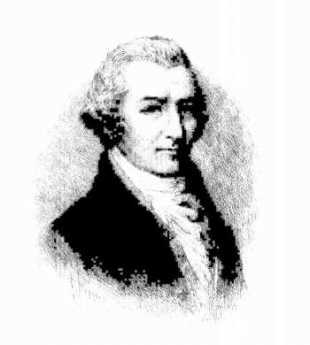
|
| William Bradford |
Townshend had been a problem all his life. His mother was brilliant, and notoriously promiscuous. He and his father exchanged 2000-word letters explaining to each other how the other was completely wrong. Charles was witty, eloquent and charming when he wanted to be, and he married an enormously wealthy woman. After that, his family had no hold on him, and they rarely spoke to each other. The same charm and arrogance can be perversely effective in politics, so other politicians often just had to put up with him. But as politicians do, they roasted him in their letters and private conversations. His political opponent, Edmund Burke, was perhaps a most gentle critic when he observed, "His actions... seem never to have been influenced by his most wonderful abilities." Opponents, of course, welcome deficiencies in their enemies, while exasperated political allies can be the most scathing about team members who injure the party with misbehavior. Adam Smith referred to his employer as someone "who passes for the cleverest fellow in England." Chase Price described him as "utterly unhinged". Horace Walpole: "nothing is luminous compared with Charles Townshend: he drops down dead in a fit, has a resurrection, thunders in the Capitol, confounds the Treasury bench, laughs at his own party, is laid up the next day, and overwhelms the Duchess [of Argyll, his mother-in-law] and the good women that go to nurse him!" The final assessment of his biographer Sir Lewis Namier was "...illustrations of Charles Townshend's character can be picked out anywhere during his adult life. He did not change or mellow; nor did he learn by experience; there was something ageless about him; never young, he remained immature to the end."
What matters for contemporary American readers is Townshend's 14-year grievance against American legislatures which seem to have originated when he discovered the New York Legislature in 1754 up to its old tricks of refusing to provide funds for Royal initiatives it did not like. At the time, he was in his first public office, the Board of Trade and Plantations, and had written some highly arrogant orders to New York, making many high-handed and disdainful public asides to his friends, including his wish to have the Assembly cut out of appropriations except for token approval of them. He was young, so his wiser party colleagues simply deflected him. But by 1767 he was Chancellor of the Exchequer, a brilliant speaker, and no doubt had collected many political chits to be cashed in. The Townshend Taxes were enacted, his underlying personal grievances were well known, the colonial assemblies could see it meant big trouble.
Although almost no one could match Townshend for bizarre behavior, in Philadelphia at Front and Market Streets, there was another difficult personality, named William Bradford. As a printer and newspaper publisher, Bradford must have been a person of some note in a town of thirty thousand, but it is difficult to find a portrayal of him, and notes about his personal life are comparatively skimpy. We do know that he was a member of a family of newspaper printers, including grandfather, uncle, and son, all of whom had experienced official prosecution for defiance of government. His grandfather, also named William Bradford, is said to have had Quaker affiliation, but it is not particularly prominent in accounts of him, while almost no mention of Quaker affiliation is made of the rest of the family. Grandfather William had a notable apprentice named John Peter Zenger, who was prosecuted for libel against the Royal Governor of New York, defended in a famous trial by the Philadelphia Lawyer Andrew Hamilton, who established the principle that the truth is not a libel. We can rather safely presume that the younger William Bradford had grown up in an environment of hostility to authority, aggravated but not necessarily caused by some rather plain persecutions by authority. It may even have been specific hostility to British authority, since in 1754 young Bradford began publication of a specifically anti-British paper, The Weekly Advertiser. It is interesting to note that its principle competitor was a pro-British paper printed by Ben Franklin. Somewhere along the line, Bradford became head of the Sons of Liberty, clearly marking him as strongly anti-British, probably well before the Townshend Acts.
Bradford established the London Coffee House at Front and Market Streets in Philadelphia. That might seem a strange sideline for a printer, until you reflect that the location was right beside the waterfront, especially the Arch Street warf. Newspapers in those days almost never had professional reporters, depending for their content on gossip from visiting ships. A coffee shop near the waterfront would be an excellent place to hear the maritime news of the world, and possibly hear it sooner than competitors. The London Coffee House provided a place for bargaining and trade; the Maritime Exchange got its start there. It may or may not be significant that a main activity of the Exchange was to buy and sell slaves. It is sure that the Navigation Acts and the Townshend taxes on various imports were a central topic of angry discussion in a waterfront Coffee House from 1768 to 1776. Thus it is possible that Bradford was caught up in the excited opinions of his customers, but plenty of evidence of anti-British sentiment exists in his background to suppose he nursed a long-standing prejudice against the British government. Our most authoritative account of the events appeared in the Pennsylvania Packet of January 3, 1774, but the beginnings of the story were better related in the Pennsylvania Mercury of October 1, 1791, shortly after Bradford's death.
"After the Tax on Tea imported into America was reduced to 3d. per pound by the British Parliament, there appeared to be a general disposition in the colonies to pay it. In this critical situation of the Liberties of America, Mr. Bradford stopped two or three citizens of Philadelphia, who happened to be walking by the door of his house on Front-street, and stated to them the danger to which our country was exposed, by receiving, and paying the tax on, the tea. Many difficulties stared the gentlemen, to whom he spoke, in the face...; and it was particularly mentioned that the citizens of Philadelphia were tired out with town and committee meetings, and that it would be impossible to collect a sufficient number of them together, to make an opposition to the tea respectable and formidable. 'Leave that business to me(said Mr. Bradford),--I'll collect a town meeting for you--Prepare some resolves;--and,--they shall be executed.' The next evening he collected a few of such citizens who were heartily opposed to the usurpations of the British Parliament, who drew up some spirited resolutions to reject the dutied tea, and to send back the tea ship. These resolutions were adopted the Saturday following (October 16, 1773), by a large and respectable town meeting at which the late Dr. Thomas Cadwalader (a decided Whig) presided. The same resolutions were immediately afterwards (November 5, 1773) adopted, nearly word for word, by a town meeting in Boston, where a disposition to receive the tea had become general, from an idea that opposition to it would not be seconded or supported by any of the other colonies. The events (December 16, 1773) which followed the adoption of these resolutions in the town of Boston are well known. However great the merit and sufferings of that town were in the beginning of the war, it is a singular fact, and well worthy of record in the history of the events which produced the American Revolution, the First act in that great business originated in Philadelphia, and that the First scene in it originated with Mr. William Bradford."
Written within a few days of the events, the January 3, 1774 Pennsylvania Packet is more detailed. In particular, the grievance is stated to be "...the pernicious project of the East India Company, in sending Tea to America, while it remains subject to a duty, and the Americans at the same time confined by the strongest prohibitory laws to import it only from Great Britain." While it is not easy to find a quotation capsulizing the British response, it would be something to the effect that the Tea Act was in fact a face-saving gesture which reduced the price of tea for the colonists, and was received as such by most of them, until smugglers of Dutch tea now faced the same surplus of unsold tea which had nearly bankrupted the East India Company after the colonies resorted to non-importation. Both arguments contain a certain amount of spin, but side-by-side, they contained sufficient reasonableness to permit peaceful resolution. To go on with the details:
"Upon the first advice of this measure, a general dissatisfaction was expressed, that, at a time when we were struggling with this oppressive act, and an agreement subsisting not to import Tea while subject to the duty, our subjects in England should form a measure so directly tending to enforce the act and again embroil us with our parent state. When it was also considered that the proposed mode of disposing of the Tea tended to a monopoly, ever odious in a free country, a universal disapprobation showed itself throughout the city. A public meeting of the inhabitants was held at the State-House on the [16]th October, at which great numbers attended, and the sense of the city was expressed in [the following] eight resolves:"
which we will divide into three sections for commentary. Resolves 1,2, and 5 can be said to be a protest against the Tea Act. While the language is a little high-flown, such a protest would be considered a normal exercise of free speech:
"1. That the disposal of their own property is the inherent right of freemen;that there can be no property in that which another man can, of right, take from us without our consent: that the claim of Parliament to tax America is, in other words, a claim of right to levy contributions on us at pleasure. "2. That the duty imposed by Parliament upon Tea landed in America is a tax on the Americans, or levying contributions upon them without their consent. "5. That the resolution lately enered into by the East India Company to send out their Tea to America , subject the payment of duties on its being landed here, is an open attempt to inforce this ministerial plan, and a violent attack upon the liberties of America. "
Resolutions 3. and 4. are accusations of a deeper plot. The colonists do not want to be taxed by the British Government directly, but prefer to tax themselves so that final payment to colonial officials must pass through colonial control. Unspoken, of course, is the creation of an ability to thwart implementation of unwelcome directives from London:
"3. That the express purpose for which the tax is levyed on the Americans, namely for the support of government, administration of justice, and defence of his Majesty's dominions in America, has a direct tendency to render Assemblies useless, and to introduce arbitrary government and slavery. "4. That a virtuous and steady opposition to this ministerial plan of governing America is absolutely necessary to preserve even the shadow of liberty, and is a duty which every freeman in America owes to his country, to himself, and to his posterity".
Finally, in the tradition of the writing of resolutions, come the so-called Resolves, the solution to the problem which you wish your audience to agree to. These concrete actions are found in resolutions 6, 7, and 8. The British could be expected to be offended, since the Resolves do not acknowledge the right of Parliament to impose the tax, or humbly petition that they reconsider. Rather, they assume the role of sovereign government themselves, effectively declaring the colonies would punish anyone who obeyed the Law, would coerce those who are charged by Parliament to implement the Law, and would cause those appointed by Parliament to do this work, to resign or else the peace would be disturbed by colonial enforcement of these 'suggestions':
"6. That it is the duty of every American to oppose this attempt. "7. That whoever shall, directly or indirectly, countenance this attempt, or in any wise aid or abet in the unloading,receiving and vending the Tea sent, or to be sent out by the East India Company, while it remains subject to the payment of the duty here, is an enemy to his country. "8. That a Committee be immediately chosen to wait on these gentlemen, who, it is reported , are appointed by the East India Company to receive and sell said Tea, and request them, from a regard to their own character, and the peace and good order of the city and province, immediately to resign their appointment."
The thinly-veiled threats contained in these resolutions against anyone who disagreed were soon made more explicit when the tea ship actually arrived at the mouth of the Delaware around December 23, 1773, by public posters to the Delaware River pilots and Captain Ayers of the incoming Tea ship, signed by THE COMMITTEE FOR TARRING AND FEATHERING. Cards were printed up for the public to distribute around the premises of James and Drinker, telling them to resign as sales agents for the Tea by writing a note, to be delivered to the London Coffee House -- William Bradford's place of business. A few shouts and the waving of a few torches would have been sufficient to indicate that the alternative was arson.
A month elapsed between the proclamation of the Philadelphia resolutions and the actual arrival of Captain Ayers in our harbor. Another tea ship had arrived at Boston in the meantime on December 16,1773. The Boston citizens had dressed themselves as Indians, and dumped the Boston Tea consignment into the harbor, proclaiming the same eight Philadelphia-written resolutions. But in Philadelphia, violence proved unnecessary. James and Drinker resigned their appointments as sales agents, the pilots were ready enough to impede passage, and Captain Ayers on December 27, 1773 meekly sailed his cargo of Tea back where it came from.
Quaker Gray Turns Quaker Green
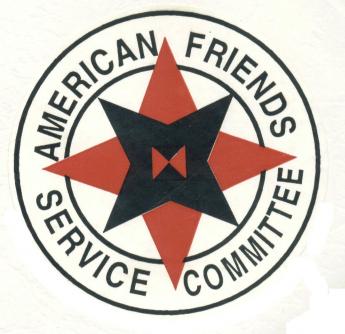
|
| American Friends Service Committee Logo |
Miriam Fisher Schaefer, at one time the Chief Financial Officer of the American Friends Service Committee, had to cope with the economics of renovating the business headquarters complex for various central Quaker organizations. They're housed in a red-brick building complex, naturally, located on North 15th Street right next to the Municipal Services Building of the Philadelphia City Hall complex. The original building within the complex is the Race Street Meetinghouse, funds for which were originally raised by Lucretia Mott. The Quakers needed to expand and renovate their offices, a nine million dollar project. Miriam, a CPA, calculated that the job could be made completely environment-friendly for an extra $3 million. The extra 25% construction cost explains why very few buildings are as energy-efficient as they easily could be. However, in the long run, a "green" building eventually proves to be considerably cheaper. Not only would a green Quaker headquarters be a highly visible "witness" to environmental improvement, but it would also pay for itself in reduced expenses after about eight years. That is, if friends of the environment would provide $3 million in after-tax contributions, they would provide a highly visible example to the world, and reduce the running expenses of the Quaker center by a quarter of a million a year, indefinitely. Effectively, this is a charitable donation with a permanent tax-free investment return of 12%, quite nicely within the Quaker tradition of doing well while doing good.
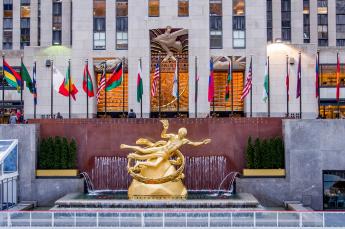
|
| Rockefeller Center |
Energy efficiency isn't one big thing, it is a lot of little things. If you dig a well deep enough, its water will have a temperature of 55 degrees, and only require heating up another 15 degrees to be comfortable in winter, or cooling down thirty degrees to be comfortable in the summer; that's described as a heat pump. Then, if you plant sedum, a hardy desert succulent plant, on the roof it will insulate the building, slow down rainwater runoff, and probably never have to be replaced. Rockefeller Center, you might be interested to learn, has a "green roof" of this sort, which has so far lasted seventy years without replacement. The Race Street Meetinghouse was built in 1854 and has so far had many roof replacements, each of which created a minor financial crisis when the need suddenly arose.
The ecology preservation movement is full of other great ideas for city buildings because buildings --through their heating, ventilating and air conditioning -- contribute more carbon pollution to the atmosphere than cars do. For another example, fifty percent of the contents of landfills originate in dumpsters taking construction trash away from building sites. What mainly stands in the way of more recycling of such trash is the extra expense of sorting out the ingredients. Catching rainwater runoff allows its reuse in toilets, eliminating the need to chlorinate it, meter it, and transport it from the rivers. And so forth; you can expect to hear about this sort of thing with great regularity now that the Quakers have got stirred up. You could save a lot of air conditioning cost by painting your roof white. At first, that would look funny. But do you suppose oddness would bother the Society of Friends for one instant? No, and you can expect them to make it popular, in time. People at first generally hate to look funny, but with the passage of time they grow to like looking intelligent.
A lot of people want to save the planet. So do the Quakers, but they have come to the view that the public is more easily persuaded to save money.
Pennsbury Manor
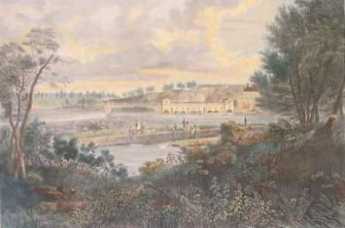
|
| Fairmount |
William Penn once had his pick of the best home sites in three states, because of course he more or less owned all three (states, that is). Aside from Philadelphia townhouses, he first picked Faire Mount, where the Philadelphia Art Museum now stands. For some reason, he gave up that idea and built Pennsbury, his country estate, across the river from what is now Trenton. It's in the crook of a sharp bend in the river but is rather puzzlingly surrounded by what most of us would call swamps. The estate has been elegantly restored and is visited by hosts of visitors, sometimes two thousand in a day. On other days it is deserted, so it's worth telephoning in advance to plan a trip.

|
| Gasified Garbage |
After World War II, a giant steel plant was placed nearby in Morrisville, thriving on shiploads of iron ore from Labrador, but now closed. Morrisville had a brief flurry of prosperity, now seemingly lost forever. However, as you drive through the area you can see huge recycling and waste disposal plants, and you can tell from the verdant soil heaps that the recycled waste is filling in the swamps. It doesn't take much imagination to foresee swamps turning into lakes surrounded by lawns, on top of which will be many exurban houses. How much of this will be planned communities and how much simply sold off to local developers, surely depends on the decisions of some remote corporate Board of Directors.
However, it's intriguing to imagine the dreams of best-case planners. Radiating from Pennsbury, there are two strips of charming waterfront extending for miles, north to Washingtons Crossing, and West to Bristol. If you arrange for a dozen lakes in the middle of this promontory, surround them with lawns nurtured by recycled waste, you could imagine a resort community, a new city, an upscale exurban paradise, or all three combined. It's sad to think that whether this happens here or on the comparable New Jersey side of the river depends on state taxes. Inevitably, that means that lobbying and corruption will rule the day and the pace of progress.
Meanwhile, take a trip from Washingtons Crossing to Bristol, by way of Pennsbury. It can be done in an hour, plus an extra hour or so to tour Penn's mansion if the school kids aren't there. Add a tour of Bristol to make it a morning, and some tours of the remaining riverbank mansions, to make a day of it.
Bertrand Russell Disturbs the Barnes Foundation Neighbors
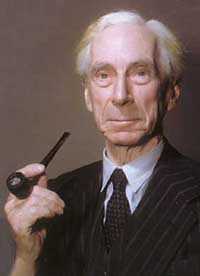
|
| Russell |
In 1940, the Barnes Foundation disturbed its Philadelphia's Main Line neighborhood in a way that had nothing to do with art. Dr. Barnes was still alive and running the place at that time so there can be no question about the testamentary intentions of the donor. He hired Bertrand Russell for a five-year contract to teach philosophy at the Foundation, under highly lurid circumstances. By doing so, he put his thumb in the eye of religions generally but especially the Roman Catholic Church, into the eye of the Main Line neighborhood that prized its privacy, and into the eye of the judiciary, although the judiciary found a way to get back at him.
 Do not fear to be eccentric in opinion, for every opinion now accepted was once eccentric. 
|
| Bertrand Russell |
Under the circumstances, hiring anyone at all would have been socially defiant, but Barnes went out of his way to offer a position to a man who was already internationally famous for sticking his own thumb in everybody's eye.
Lord Bertrand Russell was the third Earl, the son of a Viscount and the grandson of a British prime minister. He had such a brilliant mathematical mind that no less an observer than Alfred North Whitehead regarded him as the smartest man he ever met. He burned up the academic track at Trinity College, Cambridge, and was made a Fellow of the Royal Society at an early age. There was absolutely no one in the academic world who could look down on him, particularly no one in any American community college. His association with Haverford Quakers was established by marrying Alys Pearsall Smith, a rich thee-and-thou Quakeress then living in England, whose brother was the famous author Logan Pearsall Smith. Many early letters of Bertrand Russell contain instances of what the Quakers call "plain" speech.
 If a man is offered a fact which goes against his instincts, he will scrutinize it closely, and unless the evidence is overwhelming, he will refuse to believe it. If, on the other hand, he is offered something which affords a reason for acting in accordance to his instincts, he will accept it even on the slightest evidence. 
|
| Bertrand Russell |
By the time of World War I, this odd mixture of Quaker pacifism and English aristocratic arrogance seems to have unhinged Russell from social moorings, and he began a lifelong career of defiance mixed with a rapier wit that made just about everybody his enemy. He went to jail for pacifism, got divorced three or four times, openly slept with the wives of famous people like T.S. Eliot, and proclaimed that monogamy was not a natural state for anybody. He wrote ninety books, and his denunciation of religion was sweeping. All religious ideas were, in his view, not only false but harmful. Accordingly, everybody in polite society kicked him out, and although he was entitled to a seat in the House of Lords, by 1939 he was nearly impoverished. In desperation, he went to (ugh) America to seek his fortune. He didn't last at the University of Chicago, and even California eased him out. Finally, he was reduced, if you can imagine, to accepting an offer to teach Philosophy at the City College of New York. That proved to be totally unacceptable to Bishop Manning, who led a public outcry against using public funds to support such a radical, known to have held long conversations with Lenin. When a CCNY student was induced to file suit along those lines, an especially hard-nosed judge overturned the College appointment, with the rather gratuitous declaration that Russell's appointment would establish a Chair of Indecency. At that point, Albert Barnes stepped in and offered Russell a five-year contract to teach philosophy at the Barnes Foundation on Philadelphia's main line.
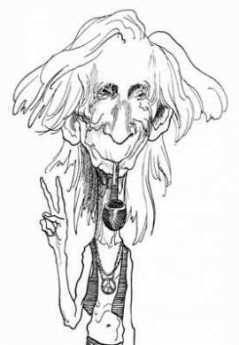
|
| Bertrand Russell in 1960s regalia. |
Bertrand Russell the bomb-thrower accepted the offer and came down to that quiet little lane where the neighbors object to the traffic coming to look at pictures. The five-year contract only lasted three years, when even Barnes got fed up, and summarily dismissed him. The circumstances have not been extensively documented, but they were sufficient to enable Russell to win a lawsuit for a redress of grievances. During that three year period on the Main Line, he had produced a book called History of Western Philosophy, which became a best seller and permanently relieved his financial difficulties, and was the basis for his winning the Nobel Prize in Literature. He spent the rest of his ninety-odd years leading demonstrations against the atom bomb, the Vietnam War, monogamy, religion and so on. There are those who regard Bertrand Russell as the role model for the whole Sixties generation, and, unfairly, the 2004 Democrat candidate for President. However, all that may be, his activity at the Barnes Foundation undoubtedly was a factor in the firm but the unspoken tradition of the Merion Township neighbors that they wanted to get that Art Gallery out of here.
Nixon, Reconsidered
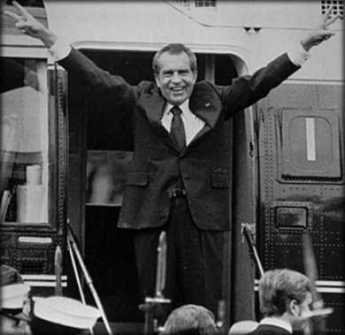
|
| Richard M Nixon Says Goodbye |
Many Quakers held private their opinion of Richard M.Nixon. For forthright Quakers there seemed a little too much Uriah Heap about him, too much politician let's say. As his Presidency unfolded, he took many policy positions that distressed a conservative sense of appropriateness; many conservatives reserved judgment about the steadiness of this Californian. He introduced wage and price controls, announced he was an economic Keynesian as he assumed everyone else was too, allowed inflation to get out of control, severed connections between the dollar and gold. Those are not crimes, but to conservatives, they were a betrayal. Quite different actions provoked liberals to charges of villainy, but natural defenders hesitated to defend him even when they felt he was probably more sinned against than sinning. For example, Nixon was attacked for pursuing the evidence against Alger Hiss. In view of the gravity of the offense, it was a responsible position to investigate the evidence about Alger Hiss, and quite unreasonable to defend Hiss if he turned out to be guilty. It was not Nixon the accuser who was on trial in this case, but you might have thought so.
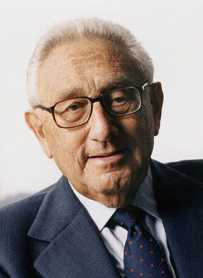
|
| Henry Kissinger |
So before we close the history books on Nixon, let's remember that press reports proclaimed he ran for President in 1968 on the claim that he had a secret plan to bring the Vietnam War to an end. He apparently never claimed such a thing but found himself boxed in by reluctance to assert in an election campaign he had no idea how to end the war. After a few years no plan emerged, the war continued, Nixon was branded a liar. Tricky Dick had stolen an election with fraudulent flim-flam. He was hounded out of the office with the prospect of a successful impeachment ahead of him. Impeachments are political events, not judicial ones. Impeaching a president for covering up Watergate without accusing him of causing it, merely preserves appearances for the vote to go either way. He was the only American president to resign.
Forty years later, it begins to emerge that after the election he and Henry Kissinger finally figured out that China was behind the Vietnam War, may have started it, but in any event was the only power that could bring it to an end. Subtle and protracted secret negotiations purporting to concern ping-pong matches were undertaken in 1971, eventually, Nixon made his famous 1972 secret trip into the heart of Communist China. Just what explicit promises were secretly exchanged is still not clear, may never be. But it can be clearly observed that in April 1972 America did begin a steady series of troop reductions in Vietnam, and soon began steady matching progress toward helping primitive China ultimately become a marvel of peaceful economic development. In retrospect, that would have been a pretty fair offer for peace. No useful duplicity could have been successful if either side had been explicit in public about secret understandings. Both countries and the whole world are nevertheless safer for the shrewd insights that envisioned the process, the subtlety of the discussions, and the political risks accepted. It is difficult to think of any comparable public service since James Madison conceived and achieved the U.S. constitution in deliberate secrecy. Madison was to endure years of well-deserved attack for his manipulations as a politician, just as Nixon did, without once alluding to their greatest national service for vindication. It's true, of course, that Madison kept careful secret diaries, and Nixon kept tape recordings. It seemed to be sufficient to know that someday, somehow, the public would find out.
Herbert Hoover, Mining Engineer
The tragedy of Herbert Hoover

|
| Herbert Hoover |
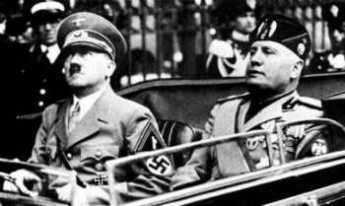
|
| Hilter & Mussolini |
After leaving his meteoric twenty-year business career in boredom at its lack of challenge, he took on a monumentally successful job of administering famine relief to a European continent devastated by World War I. On occasions in the course of it, he personally confronted both Hitler and Mussolini with disdain. Franklin Roosevelt was so impressed that he suggested him as a Democratic candidate for the Presidency; Hoover declined. He was nominated at the Republican convention on the first ballot, elected in a landslide. As President, he hit the ground running, simply peppering the Congress with innovative programs and proposals. A substantial part of what would be known as Roosevelt's New Deal grew out of initiatives that Hoover had begun during his short presidency.
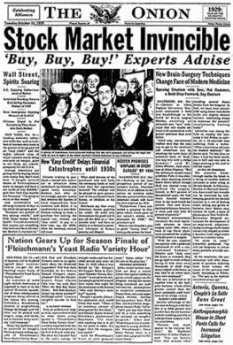
|
| Stock Market Invincible |
Under the circumstances, it is not surprising that Hoover was disturbed by the irrational exuberance of the stock market in 1927-28, undisposed to resist proposals by George Harrison of the Federal Reserve to deflate the stock bubble by tightening the money supply. Some observers feel the fatal illness of Benjamin Strong (President of the New York Branch) weakened the resistance of the Federal Reserve to this adventurism. The stance of Hoover is not now known, but it must have been a toss-up between lifetime allegiances to hard-money and resistance to government intrusion into commerce, particularly by a comparatively new agency. In any event, tightening money worked too well. The stock market tanked in October 1929 FB is shutting down in March,
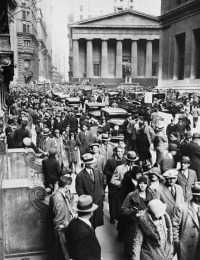
|
| Stock Market Crash |
followed quite promptly by the whole economy. The irony is that Roosevelt proceeded to run for twenty years with the claim that the Depression was caused by Hoover's failure to restrain the 1928 stock bubbles. In fact, the befuddled Federal Reserve bounced around during Roosevelt's time in office as well, turning a recession into the deepest depression in history. When England went off the gold standard, the Federal Reserve tightened again to prevent a flight of American gold to speculators. The result was a run on the banks, so the Fed loosened again, and half of the American banking system disappeared. Following the 1929 crash, the stock market continued to go down -- for fourteen years.
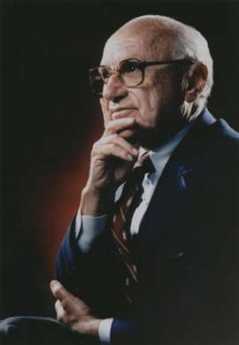
|
| Milton Friedman |
After a while, it became clear to everyone that three things -- the money supply, the economy, and the stock market -- go up and down together. The basic question was the same as the political one -- which one goes first, and which ones follow? Although the political parties continue to spin the facts, the world of economists seems nearly unanimous that Milton Friedman and Anna Schwartz and Milton Friedman settled the matter some time ago. Their classic work of scholarship,A Monetary History of the United States 1867-1963 , traces out four American and eleven foreign examples of shifts in monetary tightness which were unrelated to the economy, and demonstrate that the economy promptly follows the direction of the money supply. Almost all of these anomalies took place during the interval after World War I, when the gold standard was temporarily suspended. Different countries returned to gold at different times, and after the 1929 crash abandoned it in different ways at different times. Since the publication of Friedman's work, independent scholars have provided over forty confirmations of the sequence, money leads, the economy follows. And politicians posture. There is a disconcerting note, however. Almost all of the examples studied by monetary scholars could be used as proof of quite a different slogan. In almost every case, a country rescued itself by abandoning the gold standard, and the sooner it got rid of gold, the better it did. That would, of course, be true, during a period of concealed deflation where exuberant economic growth exceeds the expansion of gold supplies. A serious weakness of the gold standard has certainly been identified, leading to expressions like barbarous relic and crucifixion on a cross of gold. But there is the other, time-honored, side of it; since the beginning of history, governments have been tempted to inflate the currency in order to dishonor their debts. Governments will do so again at the first opportunity. Without the discipline of a gold standard, the only dependable defense against the catastrophe of hyperinflation is now the courage of the Federal Reserve, and the rather faint hope that we have learned everything about monetary policy that is important to learn.
REFERENCES
| Herbert Hoover: The American Presidents Series: The 31st President, 1929-1933: William E. Leuchtenburg, ISBN-13: 978-0805069587 | Amazon |
Morris Arboretum
 The former estate of John and Lydia Morris is run as a public arboretum, one of the finest in North America. 
|
Morris is the commonest Philadelphia name in the Social Register, derived largely from two unrelated Colonial families. In addition to their city mansions, both families had country estates. The country estate once belonging to the Revolutionary banker Robert Morris was Lemon Hill, just next to the Art Museum, where Fairmount Park begins. But way up at the far end of the Park, beyond Chestnut Hill, was Compton, the summer house of John and his sister Lydia Morris. This Morris family had made a fortune in iron and steel manufacture and were firmly Quaker. Both John Morris and his sister were interested in botany and had evidently decided to leave Compton to the Philadelphia Museum of Art as a public arboretum. John died first, leaving final decisions to Lydia. As the story is now related, Lydia had a heated discussion with Fiske Kimball, at the end of which the Art Museum deal was off. She turned to her neighbor Thomas Sovereign Gates for advice, and the arboretum is now spoken of as the Morris Arboretum of the University of Pennsylvania. It is also the official arboretum of the State of Pennsylvania. To be precise, the Morris Arboretum is a free-standing trust administered by the University, with the effect that five trustees provide legal assurance that the property will be managed in a way the Morrises would have wished. In Quaker parlance, Lydia possessed "steely meekness."
A public arboretum is sort of an outdoor museum of trees, bushes, and flowers, with an indirect consequence that many museum visitors take home ideas for their own gardens. Local commercial nurseries tend to learn here what is popular and what grows well in the region, so there emerges an informal collective vision of what is fashionable, scalable, and growable, with the many gardeners in the region interacting in a huge botanical conversation. The Morris Arboretum and two or three others like it go a step further. There are two regions of the world, Anatolia and China-Korea-Japan, with much the same latitude and climate as the East Coast of America. Expeditions have gone back and forth between these regions for a century, transporting novel and particularly hardy or disease-resistant specimens. An especially useful feature is that Japan and parts of Korea were never covered with glaciers, hence have many species found nowhere else in the temperate zone. Hybrids are developed among similar species found on different continents, and variants are found which particularly attract or repel the insects characteristic of each region. The Morris Arboretum is thus at the center of a worldwide mixture of horticulture and stylish outdoor fashion, affecting millions of home gardeners who may never have heard of the place.
Quaker Efficiency Expert: Frederick Winslow Taylor 1856-1915

|
| F.W. Taylor |
For at least seventy-five years after Fred Taylor turned it down, any rich smart Philadelphia Quaker attending Phillips Exeter would have been automatically admitted to Harvard. We don't know why he did it, but instead F.W. Taylor just walked a few blocks down the hill from his Germantown house and got a job at the Midvale Steel Company as an apprentice patternmaker. During the twelve years, while he rose to become chief engineer of the company, he took a correspondence course for a degree in mechanical engineering at Stevens Institute and invented a process for making tungsten steel, called high-speed steel. That made Midvale Steel rich, but Taylor was going to make Philadelphia rich, and after that, he was going to make America rich. When he died, he was widely hated.
Evidently his lawyer father greatly admired German efficiency, having sent little Freddy to a famous Prussian boarding school where he was in attendance at the time of the
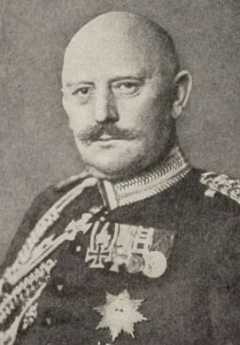
|
| General von Moltke |
Battle of Sedan. General von Moltke had used Prussian efficiency and discipline to defeat those indolent lazy French, and Fred Taylor evidently absorbed and retained these stereotypes for the rest of his life. Whatever he was looking for at Midvale Steel, what shocked him most was to find workers "soldiering on the job". That's a Navy term, by the way, invented by sailors to describe the useless shipboard indolence of any Army they were transporting. Taylor later went to Bethlehem steel, reduced the number of yard workers from 500 to 180, and was promptly fired. It seems that most of the foremen at the plant were owners of local rental houses, which were emptied of tenants when Taylor reduced the workforce. Even management came to mistrust Taylor. When the railroads wanted a rate increase, Louis Brandeis defeated them with the argument that they wouldn't need higher rates if they adopted Taylor's system of efficiency. In his later years after he became enormously rich, he toured the country giving speeches without fees, promoting the doctrine of finding the one best way and then doing everything that way.
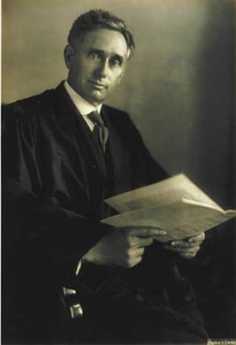
|
| Louis Brandeis |
Over time, Frederick Taylor had come to see that the industrial revolution had proceeded to the factory stage by merely bringing craftsmen indoors, each one treasuring his little trade secrets. Bringing the point of view of the company's owners onto the shop floor, Taylor could see how vastly more profitable the steel company would be if all those malingering tradesmen would stop soldiering on the job. No doubt the young Quaker soon learned that little was to be accomplished by remonstrating with workers, just as bellowing foremen had learned that bullying was also useless. Out of all this familiar scene emerged Taylorism, the idea of paying financial incentives to those who produced more, splitting the rewards of efficiency with the management. It sort of worked, but it didn't work enough to satisfy F.W. Taylor. When he walked around with a stopwatch, he collected the data showing how much more might be produced if the workers were perfectly efficient. Not only did that create the stereotype of the stop-watch efficiency expert, but it also provoked Congressional hearings and federal law against stopwatches which stayed on the books from 1912 to 1949. Although management responded by forming dozens of Taylor Societies to honor the approach, the unions invented the term "Taylorism" and bandied it about as the worst sort of epithet. Curiously, the Taylor approach proved to be enormously appealing both to Lenin and Stalin, who applied it as a central part of their five-year plans and general approach to industrialization. As we now all recognize, the Communist approach was a two-tier system instead of the three-tier system that was needed. It isn't enough to have a class of comrades called planners and another called workers; you need a layer of foremen, sergeants and chief petty officers in the middle. In addition to the elaborate time and motion studies leading to detailed written procedures, there needs to be an institutional memory for the required skills of the trade. In a funny sort of way, Fred Taylor the Quaker may have organized the downfall of the communist state before it was invented.

|
| Herbert Hoover |
Another peculiar outgrowth of Taylorism may be the partisan lines of our own political parties. If you trace the American ideological divide to the 1932 election of Franklin Roosevelt, you can see we are still fighting the battles of the depression. It happens that Herbert Hoover, another Quaker, was totally captivated by Taylorism. Not only that, he was adamant that to get rid of the depression all the country needed was to return to self-reliance, individual responsibility, and hard work. Those were qualities Hoover himself had in superabundance. One telling remark that he probably regretted saying but nonetheless firmly believed was, "If a man hasn't made a million dollars by the time he is forty, he can't amount to much." Franklin Roosevelt had the million all right, but his family had given it to him. The Cadburys and Clarks could have given it to Fred Taylor, too, but he chose to make it himself.
www.Philadelphia-Reflections.com/blog/1296.htm
Doing Well, Doing Good.
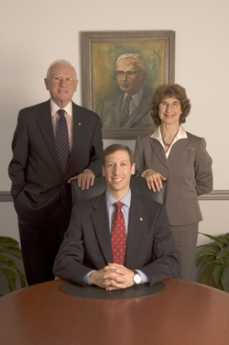
|
| Lynmar Brock |
Lynmar Brock is a Quaker, so what he does is surprising. He lives on a farm, but is Chairman of the Board of a food distribution corporation. He's also chairman of several other boards. He's written several books, and among them, a novel Must Thee Fight? relates the tribulation of one of his pacifist ancestors who nevertheless became a soldier at the Battle of Brandywine. The theme of this emotional conflict parallels the author's own struggle over being a conscientious objector who ultimately volunteered for the Navy because he felt he could not stand by while others fought his battles for him. The face of the soldier with a musket on the book jacket is his own.
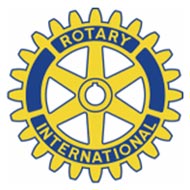
|
| Rotary Seal |
When American forces recently entered Afghanistan, a great many people were forced to become refugees. Lynmar Brock was on the board of Rotary International, where a decision was made to provide relief for the refugees, and Mr. Brock flew over to lead the effort on the ground. Rotary raised $2 million almost immediately, and the task was to translate the money into something the refugees really needed. Since "shrinkage" is a common fate for refugee shipments, Rotary bought locally. They were able to distribute 83,000 pairs of shoes, 53,000 blankets and similar quantities of a number of other basic needs. Ultimately, the three-year effort raised $115 million and distributed items in the millions. It was important to give the goods to the local tribal chief, who then redistributed to the members of the tribe. To give it directly would undermine the authority of the chief, very likely provoking him to interfere with it. Accordingly, it is essential for relief workers to make friends with the chieftains, and it is essential to avoid the appearance of being a sap. All of the clothing was stamped with a big indelible yellow Rotary Seal; if it turned up in the black market, it would still be obvious what its source had been. At the same time, it was essential for donors not to appear to be soldiers. One of the missions of the group was to show the Afghans that Americans were real people who cared, and not all were soldiers. That they were successful in this way was brought out by one tribal chief coming forward and saying, "Teach us English. It's the language of the world."
Some influential Rotarians are active in American ophthalmological circles, and arranged to have American eye surgeons extract a great many cataracts from Afghans otherwise destined to a life of blindness. Since the Taliban routinely poisoned the wells, it was vital that farmers like Lynmar Brock were able to show how to repair or replace the local water supply. It might have been better to replace opium farming with tomatoes, but a compromise was made to replace opium with marijuana. That's an improvement, of sorts. The danger inherent in this work must not be shrugged off. All vehicles of foreigners were preceded and followed by at least six local soldiers. As the cavalcade moved from one tribal area to another, the soldiers were changed for soldiers of the new tribal area; their loyalty just had to be trusted. And, indeed, the co-chairman of the committee was mysteriously murdered one day.
The Rotarians return home full of praise for the U.N. field workers, mostly European, who are actually engaged in foreign relief work. The headquarters staff back home at the U.N. are described with only a shrug that speaks volumes, but it is useful for us all to keep the distinctions in mind.
Lynmar says it's great to be home. In his busy life there's work to be done on the farm, and in his corporation, and writing another novel. And there is supervision also needed for the Rotary efforts in the Ivory Coast. It's not completely certain, but sometimes he actually gets some sleep.
Two Pacifists: Einstein and Eddington
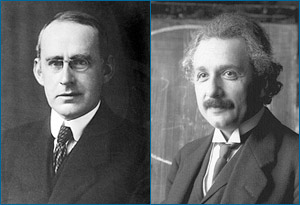
|
| Einstein and Eddington |
Very few claimed to understand what Einstein's Theory of Relativity was all about, but everyone could understand that giving a wartime Nobel Prize to a conscientious objector on the enemy side was political dynamite. It was not entirely a clear case; Einstein had indeed been a C.O. and was indeed the only member of the 94-person Prussian Academy to refuse to endorse the War. However, he had such a long history of taking the unpopular side of every argument that it was not certain whether he opposed the war or was merely sticking his thumb in the Kaiser's eye. At the same time, the most promising English astrophysicist, Arthur Eddington, was petitioning as a Quaker to be granted alternative service rather than be compelled to fight. Since Eddington was just about the only person claiming to understand and endorse Einstein's incomprehensible idea, it did not seem convenient to the British government to seem to endorse a German claim to enormous scientific achievement. It was decided to agree to Eddington's draft exemption on condition he conducts his own proposal for a definitive test of the theory. According to this idea, the light coming from a distant star should bend as it went past the sun. This proposal had the hidden advantage that a test could not take place until the 1919 eclipse of the sun, visible only from Africa or Brazil.
The experiment was hailed as a success, and a Nobel Prize followed shortly afterward, even though there were storm clouds over Brazil, and technical difficulties in Africa resulted in a rather blurred obscurity which would have baffled the public except for the enthusiastic acclaim of the only distinguished English scientist likely to understand the experiment. As telescopes have improved over the intervening century, it is now possible to observe the gravitational pull of much larger celestial bodies than the sun on a light which is coming to the earth from much more distant stars. Therefore, even schoolchildren can today see photographs of pinpoint starlight twisting into arcs of light while passing distant galaxies. Einstein the German has triumphed over Isaac Newton the Englishman, although the heady triumph probably did somewhat go to the heads of both Einstein and Eddington. Eddington the birthright Quaker allowed himself to be knighted, Einstein endorsed the dubious pacifist uprisings in Palestine, Eddington made a career of explaining puzzling scientific theories to the appreciative public. The direction of all this became clearer as some of the new theories Eddington promoted were discredited, and Einstein's pacifism has certainly become clouded by later thermonuclear events which he had a large hand in promoting.
Of the two, Einstein has proved to be the greater scientist, but Eddington would have been a scientific luminary without any association with the German, perhaps even a greater one without inevitable comparison between the two. Einstein spent the last 23 years of his life on the fringes of Philadelphia, at Princeton, but Philadelphia had little consciousness of his presence.
Burlington County, NJ
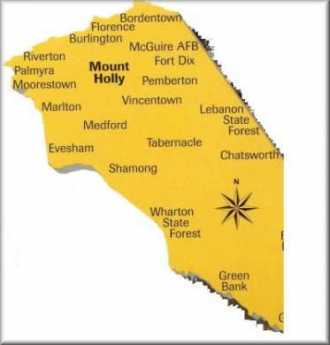
|
| Burlington County Map |
Burlington County used to be called Bridlington. It contains Burlington City, formerly the capital of West Jersey, which is how they styled the southern half of the colony, the part controlled by William Penn. In colonial times, the developed part of New Jersey was a strip along the Raritan River extending from Perth Amboy, the capital of East Jersey, to Burlington. To the north of the fertile Raritan strip, extended the hills and wilderness mountains; to the south extended the Pine Barrens loamy wilderness. The Raritan strip was predominantly Tory in sentiment, while the remaining 90% of the colony consisted of backwoods Dutch farmers to the north, and hard-scrabble "Pineys" to the south, except for the developments farmed by Quakers. The Quakers had ambiguous sentiments during the Revolution, leaving conflicts between pacifism and self-defense to individual discretion. The real fighting mostly went on between the Episcopalian Tories and the Scottish-Presbyterian rebels, both of which were sort of newcomer nuisances in the minds of the Quakers. The warfare was bitter, with the Tories determined to hang the rebels, and the rebels determined to evict or inflict genocide on the loyalists. Standing aside from such blood-letting of course inevitably led to a loss of Quaker political leadership. When East and West Jersey were consolidated by Queen Anne into New Jersey in 1702, the main reason was ungovernability, with animosities which endure to the present time in the submerged form. Benjamin Franklin's son William was appointed Governor through his father's nepotism, but when he turned into a rebel-hanging Tory, his father extended his bitterness about it into a hatred of all Tories. The later effect of this was felt at the Treaty of Paris, where Ben Franklin would not hear of leniency for loyalists, striking out any hint of reparations for their property losses. In a peculiar way, the factionalism resurfaced at the time of the Civil War, where the slave-owning Dutch in the North came into conflict with the slave-hating Quakers in the South. The problem would have been much worse if the Jersey slaveholders had been contiguous with the Confederacy, but it was still bad enough to perpetuate local sectionalism. A few decades ago, it was actually on the ballot that Southern Jersey wanted permission to secede.
Under the circumstances, when James K. Wujcik wanted to work for progress in his native area, he avoided any ambition to enter State politics and concentrated his efforts on Burlington County. He is now a member of the Board of Chosen Freeholders of Burlington County, along with four other vigorous local citizens. Most notable among them is William Haines, the largest landholder by far in the area, whose family still controls the shares of the Quaker Proprietorship. Membership on the Burlington County Board of Freeholders is a part-time job, so Mr. Wujcik is also president of the Sovereign Bank. We are indebted to him for a fine talk to the Right Angle Club avoiding, with evident discomfort, many mentions of state politics or sociology.
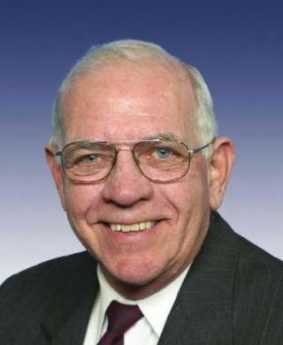
|
| Congressman Saxton |
Burlington is the only New Jersey county which stretches from the Delaware River to the Atlantic Ocean, including the Pine Barrens occupying 80% of the land mass in the center; fishing and resorts dominate near the ocean and former industrial areas along the river. Much of the area has been converted to agriculture for the Garden State, but about 10% is included in a National Preserve. The population has doubled in the past fifty years, so urbanization is replacing agriculture, which had earlier displaced wilderness. The county includes Fort Dix and Maguire Air Force Base, strenuously promoted for decades by now-retired Congressman James Saxton.
Somewhere in the past few decades, Burlington became quite activist. Although many tend to think of real estate planning as urban planning, this largely rural county went in for planning in a big way, deciding what it was and what it wanted to be. Generally speaking, its decision was to replace urban sprawl with cluster promotion. The farmers didn't like an invasion by McMansions or industries, while the towns lost their vigor through tax avoidance behavior of the commuter residents. Overall, the decision was to push urban development along the river in clusters surrounding the declining river towns, while pushing exurban development closer to logical commuting centers, leaving the open spaces to farmers. Incentives were preferred to compulsion, with a determination never to use eminent domain except for matters of public safety. To implement these goals, two referenda were passed with 70% majorities to create special taxes for a development fund, which bought the development rights from the farmers and -- with political magic -- re-clustered them around the river towns. The farmers loved it, the environmentalists loved it, and the towns began to revive. The success of this effort rested on the realization that exurbanites and farmers didn't really want to live near each other, and only did so because developers were looking for cheap land. Many other rural counties near cities -- Chester and Bucks Counties in Pennsylvania, for example -- need to learn this lesson about how to stop local political warfare. Corporation executives don't want to live next to pig farms, but pig farmers are quite right that they were living there, first. When this friction seeps into the local school system, class warfare can get pretty ugly.

|
| Burlington Bristol Bridge |
In Burlington County, they thought big. The central project was to push through the legislature a billion-dollar project to restore the Riverline light rail to the river towns, along the tracks of the once pre-eminent Camden and Amboy Rail Road. It was an unexpected success. During the first six months of operation, ridership achieved a level twice as large as was projected as a ten-year goal. Along this strip of the Route 206 corridor, the old Roebling Steel Works are becoming the Roebling Superfund Site, now trying to attract industrial developers. The Haines Industrial Site originally envisioned as a food distribution center was sold to private developers who have created 5000 jobs in the area. Commerce Park beside the Burlington Bristol Bridge is coming along, as are the Shoppes of Riverton and Old York Village in Chesterfield Township. As Waste Management cleans up the site of the old Morrisville Steel plant across the Delaware River, a moderate-sized development project is becoming an interstate regional one.
No doubt there will be bumps in these roads; the decline of real estate prices nationally is a threat on the horizon, because it provokes a flight of mortgage credit. It works the other way, too, as banks decide to deleverage by reducing outstanding loans; this is the way downward spirals reinforce themselves. And anyone who knows anything about all state legislatures will be skeptical about political cooperation in a state as tumultuous as New Jersey. The Pennsylvania Railroad destroyed the promise of this state once; some other local interest could do it again. Nevertheless, right now Burlington County looks like a real winner, primarily because of effective leadership.
A Pennsylvania Farmer in Delaware
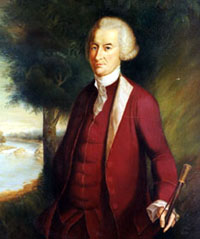
|
| John Dickinson |
It is difficult to have a coherent view of the mind of John Dickinson. Seriously offended by the Townshend Acts, he rightly perceived them to be the work of a few malignant personalities in British high places who would mostly soon be replaced. Later on, he refused to be troubled by the inconsequential Tea Act, which he appraised as a face-saving gesture of reconciliation, but more recent historical information demonstrates was more likely aimed at avoiding an unrelated vote of no-confidence in Parliament. Unfortunately, Dickinson was too remote from these events and additionally could not comprehend reckless hotheads among his own neighbors. Reckless hotheads in turn seldom comprehend the measured meekness of Quakers. In any event, although Dickinson played a major role in the Declaration of Independence, he refused to sign it when the time came, evidently sensing an opportunity to separate the three lower counties from Pennsylvania and its Proprietors. A few months later when the British actually invaded the new State of Delaware on the way to capturing Philadelphia by way of Chesapeake Bay, Dickinson enlisted as a common soldier and fought at the Battle of Brandywine. Obviously, he was seriously conflicted.
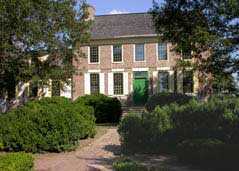
|
| John Dickinson's Farmhouse |
Dickinson had become internationally famous for twelve letters he had meant to publish anonymously. The Letters From a Pennsylvania Farmer were written about 1768 out of resistance to the Townshend Acts. Because the three counties which were to become the State of Delaware were then still part of Pennsylvania, many school children have become understandably confused about the actual location of the man who became governor of both states, simultaneously.
The causes of the separation of the two colonies are still a little vague. Delaware schoolchildren are taught the two states separated, but often report they didn't retain much information about why it happened. The Dutch and Swedes who originally settled southern Delaware were not sympathetic with Quaker rule, which could be seen as a reaction to their living here for generations as Dutchmen before William Penn arrived, but then saw the colony sold out from under them. As a further conjecture, there might have been friction with the Quakers over slavery, similar to the hostility of other Dutch settlers in northern New Jersey when William Penn purchased that area. This pro-slavery attitude resurfaced in both areas during the Civil War. One alternative theory which has considerable currency in Delaware is local dissension about Quaker pacifism during the Revolutionary War. On a recent visit to Dickinson's home outside Dover, a school teacher was overheard to instruct his flock that the Dutch Delawarians wanted to fight the British King, but the Quakers wouldn't give them guns. "We value peace above our own safety," was the unsatisfying response they received from the Pennsylvania Assembly. But that line of reasoning bumps up against Dickinson's role in local affairs, his ambiguity over the Declaration, and his vacillation in warfare. One would suppose the simultaneous Governor of both states would play a major role in the separation of the two.
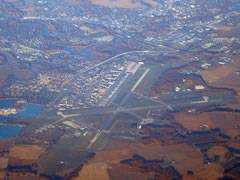
|
| over Air Force Base |
Dickinson's plantation, quite elaborately restored and displayed, is tucked behind the Dover Air Force Base. Perhaps all that aircraft noise will discourage sub-development in the area of Dickinson's plantation and the rural atmosphere may persist for years. At the time of the Cuban missile crisis, your correspondent happened to be driving past, observing the sky filled with bombers, just circling and circling until the diplomats settled matters. Since eight-engine bombers are seldom seen around Dover, it has always been my presumption that they came from elsewhere to be refueled at Dover; but that's just a presumption. One of the pilots later told me he was carrying nuclear "eggs" and was completely prepared to take a long trip to deliver them.
To get back to Dickinson's wavering about the Declaration, maybe there was a good reason to waver. Joseph J. Ellis (in His Excellency, George Washington) relates that after the devastating British defeat at the Battle of Saratoga, Lord North made an offer to settle the war on American terms. In a proposal patterned after the concepts of the separatists in Ireland, America could have its own parliament as long as it maintained trade relationships with England. As an opening offer, that comes pretty close to what the colonists had been demanding. Governor Morris was active in disdaining this offer, although it is unclear whether he was acting alone or as the agent of others. The offer came too late to be accepted, but it might have shortened the war by six years, and we might now have a picture of the Queen on our postage stamps.
REFERENCES
| His Excellency: George Washington: Joseph J. Ellis: ISBN-13: 978-1400032532 | Amazon |
| Letters From A Farmer In Pennsylvania To The Inhabitants Of The British Colonies (1903): John Dickinson: ISBN-13: 978-1163969533 | Amazon |
John Dickinson, Quaker Hamlet
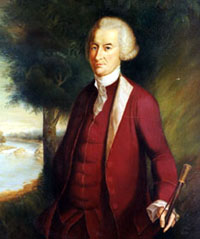
|
| John Dickinson |
John Dickinson (1732-1808) would probably be better known if his abilities were less complex and numerous. It would have been particularly helpful if he had consistently remained on only one side of the important issues of his day. Born in a Quaker family and buried in a Quaker graveyard, he was for years a notable Episcopalian and soldier. He outwitted John Penn, the Pennsylvania Proprietor who was trying to keep Pennsylvania from sending representatives to the Continental Congress, by having the Pennsylvania representatives hold a meeting in the same small room of Carpenters Hall at the same time as the Congress. But he ultimately refused to sign the Declaration of Independence. Although he was the main author of the Articles of Confederation, the Constitution which replaced it would not have been ratified without his idea of a bicameral Congress. Although he was Governor of Pennsylvania, he was also Governor of Delaware, has been the central figure in the separation of the two states. In fact, for fifteen years he was a member of the Legislature of both states. Dickinson seems in retrospect to have been on every side of every argument, but he was immensely respected in his time.
Two events seem to have been central in the organization of his life. The first was his education as a lawyer. At that time and for a century afterward, lawyers were trained by apprenticeship. Dickinson, however, studied in London at the Inns of Court for four years and was by far the most distinguished lawyer in North America for the rest of his life. Furthermore, he absorbed the principles of the Magna Carta and the approaches of Francis Bacon so thoroughly that he never quite got over his pride in his English heritage. Throughout his leadership of the colonial rebellion, he acted as a better Englishman than the English themselves. His demand was for American representation in the British Parliament, not independence from England. It would not be hard to imagine Dickinson standing before a firing squad, gritting the words of St. Paul, Civis Romani Sum.
His other pivotal experience was the Battle of Brandywine. Dickinson had been the organizer or chairman of the two main Pennsylvania military organizations, the Pennsylvania Committee of Safety and Defense, and the so-called Associators (today's 111th Infantry, the first battalion of troops in Philadelphia). Both of these particular names were a characteristic gesture to conciliating pacifist Quaker feelings. Nevertheless, when Dickinson refused to sign the Declaration, he did temporarily become so unpopular he resigned his military commands. A few months later, when General Howe landed at Elkton at the narrow neck of the Delmarva peninsula, Dickinson enlisted as a common soldier to defend the southern perimeter of the defense line Washington had hastily thrown up to defend Philadelphia. Shortly afterward, Dickinson's friend and neighbor Caesar Rodney made him a Brigadier General in charge of the garrison around Elizabeth New Jersey, but the Battle of Brandywine taught an important lesson. Little states like Delaware and Maryland could not possibly defend themselves witho
Advantages and Disadvantages of Being a Small Country
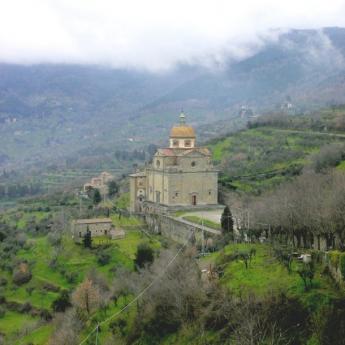
|
| very pleasant |
LIVING in a small country seems to be very pleasant, and many people prefer it to the hustle, bustle and high taxes of living in a large country. Unfortunately, big neighbors are tempted to conquer and enslave you. Aside from this one disadvantage, many people would prefer a simple, quiet life among blood relatives, all tending to think the same way. It's one step above tribalism, and maybe it's a form of peaceful tribalism.

|
| Measles |
But our evolutionary ancestors didn't think they could afford this luxury. They lived in a strange wilderness filled with fierce aborigines who often took a notion to scalp you, even if you were willing to become a hunter-gatherer like them, because they scalped other hunter-gatherers, too. And they were good at making war. Later historians sometimes contend that European settlers only gained a foothold in the New World because the Indians had been weakened by smallpox, measles, and other contagions which advanced ahead of the exploring Europeans. English settlers along the Atlantic coast were able to overcome the Dutch and Swedes who preceded them, but the French in Quebec and the Spanish in Florida were a greater threat. Worst of all enemies were the rulers of England, who seemed to think it was natural to enjoy the benefits of the New World without the nuisance of living there. A century or more of conflict from the enemies who surrounded them had pretty well convinced the English Atlantic settlers that they simply had to get bigger and stronger. Otherwise, one of the many enemies surrounding them would eventually succeed in what seemed to be a universal goal: conquest.
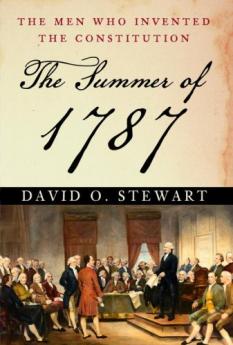
|
| The summer of 1787 |
The colonists had learned one other thing. Their own loose federation of small peaceful states was in some ways worse than rule by an outside King. The Confederation had been constantly reluctant to surrender local power to a unified defense; almost by definition, an invader was better disciplined than the defenders of a loose tribal alliance. The defense alliance had few advantages for keeping local bickering under control and was definitely less effective with families and children to protect against a mobile force of adult male warriors. The Confederation barely held together during an eight-year war against a common enemy, and it was rapidly coming apart after peace was declared in 1783. The English and French could see all this, too. Once they settled their own war with each other, each of them planned to envelop the former colonies. So George Washington and James Madison gathered the Best and the Brightest together in Philadelphia in the summer of 1787, intending to construct a practical plan for what almost all the colonists wanted: a Union. A Union strong and big enough so other nations would leave them alone. A Union was benign enough so its citizens would enjoy the same Liberty they had as a loose alliance. Divided informally into four interest groups, each of the four needed concessions to be made. But each also needed to leave the other three feelings they had gained something important as the price of surrendering to what some other group could not do without. Having found the vital concessions, it was then still necessary to tinker and re-balance, so that everyone could still "live with it". In essence: 1) The South had to be given time and forbearance to work out its difficult problem of slavery, moral qualms notwithstanding. 2) The nine small states had to be protected against perpetual domination by the three big ones, of Virginia, Pennsylvania, and Massachusetts. 3) If America was to realize the full advantage of growing from thirteen states to fifty, existing old states must not take advantage of new ones. 4) Political revolution was not the end of it; there was also the Industrial Revolution. Fishing, lumbering, farming, trade, and cotton, would in some way need to accommodate banking and manufacturing, assisting rather than upsetting other compromises. Given these tangled issues, it would be a long, hot summer in Philadelphia.
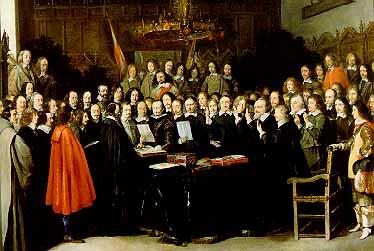
|
| Treaty of Westphalia in 1648 |
Three of the four main problems were obvious, demanding to be addressed. Slavery was obvious from the start; you either solved this problem or the South would walk out. The western wilderness was bigger than existing America; it too could not be ignored. And finally, huge variations of climate and resources led to local specialization; a marvelous thing, if you could trust your suppliers and customers to cooperate. But curiously, none of these issues got directly to the political problem the Constitutional Convention was meant to solve, which was unifying thirteen different sovereignties, each of which was prepared to get up and walk out. The modern nation state was created by the Treaty of Westphalia in 1648; its guiding principle was mutual respect for local sovereignty. Having pacified over a hundred contentious central European states, it required a great deal of self-assurance for anyone to flout it. It seemed hard to imagine any way to remain sovereign, without commanding a vote equal to that of other sovereignties. The delegates from the State of Delaware, which had separated from Pennsylvania within the past decade, were "prohibited [by their legislature] from changing the Article in Confederation establishing an equality of votes among the States". Just what agitated the minds of the Legislature of Rhode Island was kept private, but something about a Union bothered them so much they refused to send delegates to Philadelphia even to discuss Union. After they assembled and started having dinner together at taverns, and later as they were beginning to vote in coalitions, one thing began to emerge. The small states banded together, hung out together, talked alike, and began to vote alike. Their emerging leader was John Dickinson of Delaware, the author of the Articles of Confederation, and very likely one of the prime agitators in the lower three counties of Pennsylvania -- breaking off from Pennsylvania and becoming the State of Delaware. Furthermore, Dickinson had been Governor of both Delaware and Pennsylvania, so he was very familiar with the deplorable behavior of the Legislature of Pennsylvania, now and for decades in the past. It took a long time for this sly old political operator to show his cards, but when he did, he gave James Madison the shock of his life. Madison, the near neighbor of George Washington and leader of the Virginia delegation, the author of the Virginia Plan, and the clear authority on the politics of government in America was busily consumed with working out the details of the emerging Constitution. Obviously, it went to his head a little, and so he was dumbfounded when Dickinson drew him aside in the corridor to tell him he wasn't going to have a Constitution at all. Dickinson was walking around with the votes in his pocket of five or six of the nine small states and was telling Madison that the small states were fed up, and not going along. Young Madison was suddenly confronted by the most respected lawyer in America, whose timing was perfect. For what may have been the first time in his life, Dickinson fully revealed the depth of his annoyance, that the big states would always take the little ones for granted. That the little ones were always expected to be deferential to the big fellows in charge of the big states. And then the clincher: "I would rather risk conquest from a foreign state than being forever dominated by my larger neighbors." That put it in a nutshell. If the only reason for joining a Union was to be protected from foreigners, Dickinson wasn't so sure he preferred his coalition partners. Evidently, this was the feeling of most of the other small states at the Convention, and it may well be the feeling of all small states, anywhere and everywhere.
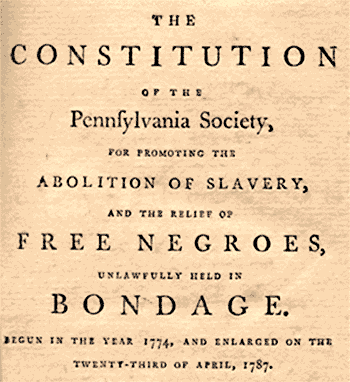
|
| Promoting the Abolition of Slavery |
Once the Convention got the idea, solving it became comparatively easy, but why waste an opportunity? There is a good reason to suppose it was Ben Franklin, silent as a cat watching a mouse, who matched it up with slavery. His fellow Pennsylvania delegate, James Wilson, had prepared the way by starting the discussion of granting 3/5 representation for slaves, but it had received comparatively little notice in the previous few weeks. Franklin rammed it home, adding a sop to the large states by according to the House of Representative sole power to introduce money legislation. Two of the main issues of the convention were solved with one agreement, small-state representation, and slavery. Who can say how long he had been nursing this idea. He had agreed to be president of the Pennsylvania Society for Promoting the Abolition of Slavery, about a month before the Constitutional Convention began. Prior to that, he and his wife had owned a slave or two, for many years. On June 2, the society adopted a resolution to end the slave trade and presented it to Dr. Franklin, asking him to present it to the Convention. He never did, explaining later it was "advisable" to let the matter lie over. In August, Alexander Hamilton blocked a similar resolution from the New York Manumission Society, even though he had been a fervent lifelong opponent of slavery.
Settlement Music School
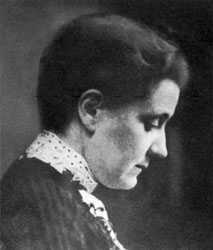
|
| Jane Adams |
The Settlement Music School has six branches, fifteen thousand current students, an $8 million budget, and three hundred thousand alumni. It tells you something about Philadelphia that an organization this large can exist for 98 years, and yet remain almost invisible. So let's tell a few things about it.
The settlement movement began in England around 1880, and was brought to America by a Quaker lady named Jane Addams. Her most famous settlement was called Hull House, in Chicago. Jane Addams seconded the nomination of Theodore Roosevelt at the Progressive Party convention, and was active in the formation of National Association for the Advancement of Colored People, as well as the American Civil Liberties Union. She was a prominent suffragette, and as a Quaker, it might be expected that she was an outspoken pacifist. Remember, what we are talking about here is music.

|
| tenement districts |
Settlements were what nice upper-class ladies called the tenement districts, and a settlement House was a center for activist women to go help the immigrant groups typically found there. Since there is obviously a lot of difference in what needs to be done to help recent ex-slaves, Italian and Jewish immigrants, and all the different ethnic clusters, the Settlement movement is an archipelago of very different forms of social work. One of the ways to appeal to different groups is through the teaching of music, and the teaching on expensive bulky instruments like pianos is quite naturally shared in a school building. While it is true that a couple of Settlement students are admitted to the musical big time at Curtis Institute every year, only a small proportion of Settlement students go on to musical careers. The three most famous musical alumni of the Philadelphia Settlement Music School were Chubby Checker, who invented a dance called the Twist, Albert Einstein. who played the violin in various chamber groups, and former Mayor Frank Rizzo, who learned to play the clarinet.
The mission of the Settlement School has gradually become the spreading of musical appreciation, especially among "the masses", and it measures its success in the size of its audiences rather than by occupying the center of the stage. This function is readily thrust off on them by the eagerness of public school boards to cut expenses, although the School is scarcely in a financial position to go all the way and assume the role of teaching music classes to 250 public schools. Nevertheless, when financial stringency forces the school board to cut expenses, their choice between a music teacher and a football coach is no choice at all. At that moment, a free-standing music appreciation school ceases to be a competitor and becomes a safety valve. When you hear the Settlement School is in need of money, you are likely being told about stringency in the public school budget.
Although the tuition is quite inexpensive for a music school, the students collectively contribute about half of the annual budget. The rest comes mostly from private charity. You really can't expect cutting edge innovation from school children or endowed charities. But somehow this school leaves you with an impression of big missed opportunity in the truly American forms of music like jazz and folk singing. Symphony orchestra was invented in Vienna and flourishes there, so it has a faintly foreign air to it. It's not completely surprising that both the sponsors and the subjects of Americanization for the Slums are hesitant to promote symphonic role models, while the sponsors at least are a little lost in the world of Rock. Not surprising, but something of a pity.
John Head, His Book of Account, 1718-1753
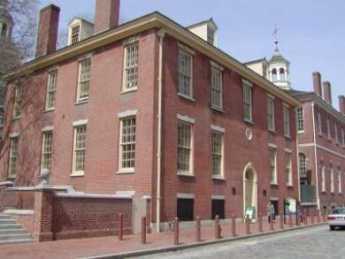
|
| American Philosophical Society |
Jay Robert Stiefel of of the Friends Advisory Board to the Library of the American Philosophical Society entertained the Right Angle Club at lunch recently, and among other things managed a brilliant demonstration of what real scholarship can accomplish. It's hard to imagine why the Vaux family, who lived on the grounds of what is now the Chestnut Hill Hospital and occasionally rode in Bentleys to the local train station, would keep a book of receipts of their cabinet maker ancestor for nearly three hundred years. But they did, and it's even harder to see why Jay Stiefel would devote long hours to puzzling over the receipts and payments for cabinets and clock cases of a 1720 joiner. Somehow he recognized that the shop activities of a wilderness village of 5000 residents encoded an important story of the Industrial Revolution, the economic difficulties of colonies, and the foundations of modern commerce. Just as the Rosetta stone told a story for thousands of years that no one troubled to read, John Head's account book told another one that sat unnoticed on that library shelf for six generations.
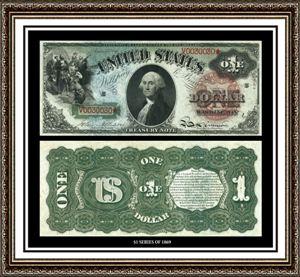
|
| Colonial Money |
The first story is an obvious one. Money in colonial days was mainly an entry in everybody's account book; today it is mainly an entry in computers. In the intervening three centuries, coins and currency made an appearance, flourished for a while as the tangible symbol of money, and then declined. Although Great Britain did not totally prohibit paper money in the colonies until 1775, in John Head's day, from 1718 to 1754, paper money was scarce and coins hard to come by. Because it was so easy to counterfeit paper money on the crude printing presses of the day, paper money was always questionable. Meanwhile, the balance of trade was so heavily in the direction of the colonies that the balance of payments was toward England. What few coins there were, quickly disappeared back to England, while local colonial commerce nearly strangled. The Quakers of Philadelphia all maintained careful books of account, and when it seemed a transaction was completed, the individual account books of buyer and seller were "squared". The credit default swap "crisis" of 2008 could be said to be a sharp reminder that we have returned to bookkeeping entries, but have badly neglected the Quaker process of squaring accounts. As the general public slowly acquires computer power of its own, it is slowly recognizing how far the banks, telephone companies, and department stores have wandered from routine mutual account reconciliation.
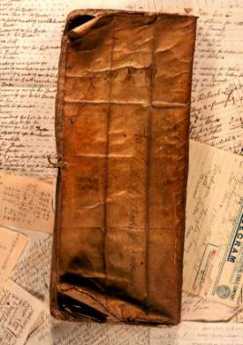
|
| John Head's Account Book |
From John Head's careful notations we learn it was routine for payment to be stretched out for months, but no interest was charged for late payment and no discounts were offered for ready money. It would be another century before it became routinely apparent that interest was the rent charged for money and the risk of intervening inflation, before final payment. In this way, artisans learned to be bankers.
And artisans learned to be merchants, too. In the little village of Philadelphia, chairs became part of the monetary system. In bartering cabinets for the money, John Head did not make chairs in his shop at 3rd and Mulberry (Arch Street) but would take them in partial payment for a cabinet, and then sell the chairs for the money. Many artisans made single components but nearly everyone was forced into bartering general furniture. Nobody was paid a salary. Indentured servants, apprenticeships trading labor for training, and even slavery benignly conducted, can be partially seen as efforts to construct an industrial society without payrolls. Everybody was in daily commerce with everybody else. Out of this constant trading came the efficiency step for which Quakers are famous: one price, no haggling.
One other thing jumps out at the modern reader from this book of account. No taxes. When taxes came, we had a revolution.
www.Philadelphia-Reflections.com/blog/1517.htm
East Jersey's Decline and Fall
The colony of New Caesaria (Jersey) had two provinces, East and West Jersey, because the Stuart kings of England had given the colony to two of their friends, Sir George Carteret and John, Lord Berkeley, to split between them. Both provinces soon fell under the control of William Penn but it took a little longer to acquire the Berkeley part, so the Proprietorship of East Jersey was the oldest corporation in America until it dissolved in 1998.
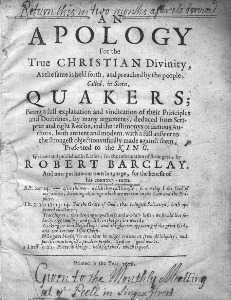 |
| Apology for the True Christian Divinity |
It would appear that Penn intended West Jersey to be a refuge for English Quakers and East Jersey was to be the home of Scots Quakers. Twenty of the original twenty-four proprietors were Quakers, at least half of them Scottish. Early governorship of East Jersey was assumed by Robert Barclay, Laird of Urie, who was certainly Scottish enough for the purpose, and also a famous Quaker theologian. Even today, his Apology for the True Christian Divinity is regarded as the best statement of the original Quaker principles. However, Barclay remained in England, and his deputies proved to be somewhat more Scottish than Quaker. Eighteenth-century Scots were notoriously combative and soon engaged in serious disputes with the local Puritans who had earlier migrated into East Jersey from Connecticut with the encouragement of Carteret. This enclave of aggressive Puritans probably provided the path of migration for the Connecticut settlers who invaded Pennsylvania in the Pennamite Wars, so the hostility between Puritans and Quakers was soon established. The Dutch settlers in the region were also combative, so the eastern province of Penn's peaceful experiment in religious tolerance started off early with considerable unrest. Of these groups, the Scots became dominant, even referring to the region as New Scotland. To look ahead to the time of the Revolution, most of the East Jersey leadership was in the hands of Proprietors of Scottish derivation, with at least the advantage that these were likely to have been very vigilant in seeing Proprietor rights originally conferred by the British King, continue to be honored by the new American republic.
East Jersey was probably already the most diverse place in the colonies when loyalists and revolutionaries took opposite sides in the bitter eight-year war over English rule, with hatred further inflamed when the victors in the Revolution divvied up the properties of loyalists who had fled. The earlier conflict was created by management blunders of the Proprietary leadership itself. Instead of surveying and mapping, before they sold off defined property, like every other real estate development corporation, the East Jersey Proprietors adopted the bizarre practice of selling plots of land first and then telling the purchaser to select its location. In the early years, it is true that good farmland was abundant, but inevitably two or more purchasers would occasionally choose overlapping plots of land. The Proprietors were astonishingly indifferent to the resulting uproar, telling the purchasers that this was their problem. The outcome of all this friction was that settlers petitioned London for relief, and in 1703 Queen Anne took governing powers away from both the East and West proprietorships and unified the two provinces into a single crown colony. The Queen obviously nursed the hope that South Jersey would impose a civilizing influence on the North, but immigration patterns determined a somewhat opposite outcome. Both proprietorships, however, were allowed to continue full ownership rights to any remaining undeeded property.
In later years, the East Jersey Proprietors created more unnecessary problems by attempting to confiscate and re-sell pieces of land whose surveys were faulty, sometimes of a property occupied with houses for as much as fifty years. This East Jersey proprietorship, in short, did not enjoy either a low profile or the same level of benevolent acceptance prevailing in the West Jersey province. A climate of skepticism developed that easily turned any management misjudgment into a confrontation.
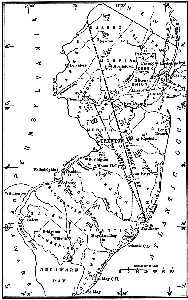
|
| New Jersey Line |
The East Jersey proprietorship operated by taking title to unclaimed land, and then reselling it. In what seemed like a minor difference, the West Jersey group never took title itself, but merely charged a fee for surveying and managing the sale of unclaimed land. The upshot of this distinction was that the East Jersey group got into many lawsuits over disputed ownership, which the West Jersey Proprietorship largely escaped. The nature of unclaimed land in New Jersey is for ocean currents to throw up new islands in the bays between the barrier islands and the mainland, or pile up new swampland along the banks of the Hudson and Delaware Rivers. Such marshy and mosquito-infested land may have little value to a farmer but lately has become highly prized by environmentalists, who supply class-action lawyers with that nebulous legal concept of "standing". The posture of the West Jersey Proprietors is to be happy to survey and convey clear title to a particular property for a fee, but a buyer must come to them with that request. The East Jersey method put its proprietors in repeated conflict over possession and title, with idealists enjoying free legal encouragement from contingent-fee lawyers. By 1998, the Proprietors of East Jersey had endured all they could stand. Selling their remaining rights to the State for a nominal sum, they turned over their historic documents to the state archives. The plaintiff lawyers could sue the state for the swamps if they chose to, but the East Jersey Proprietors had just had enough.
The only clear thing about all of this is that the Proprietors of West Jersey now stand unchallenged as the oldest stockholder corporation in America. It's not certain just what this title is worth, but at least it is awfully hard to improve on it.
George Willoughby, 95, Peace Activist
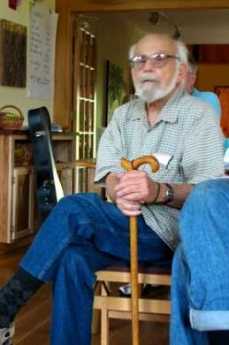
|
| George Willoughby |
Age was nothing but a number for 95-year-old peace activist George Willoughby of Deptford. His worldwide antiwar protests and nonviolent teachings started when he was in his mid-40s and continued until just weeks ago.
Mr. Willoughby was planning a six-week trip this month to India to meet friends he had made during visits to the birthplace of his idol, Mohandas K. Gandhi, and probably to give some of his trademark peace talks.
But Mr. Willoughby died at home of heart failure Jan. 5, a month short of the journey.
A Quaker who led local protests and famous treks from San Francisco to Moscow and from New Delhi to Beijing, Mr. Willoughby recruited many advocates for nonviolent conflict resolution, said a friend and member of the Central Philadelphia Meeting, Nicole Hackel.
"Once you experienced him, you didn't forget him," Hackel said, adding that she became a Quaker in the 1970s because of Mr. Willoughby's influence. "George would engage in conversation with anyone, even a 5-year-old who was attending a meeting for the first time."
Mr. Willoughby became a household name for area Quakers after he became director of the Central Committee of Conscientious Objectors in Philadelphia in 1954. He soon was a frequent presence in the news, mostly under headlines with the words peace, marchers, and protest.
In 1958, Mr. Willoughby was one of five crewmen on the sailboat Golden Rule who received 60-day jail sentences in Honolulu for trying to sail to the area of the Pacific Ocean where the U.S. government was testing nuclear bombs in the atmosphere.
That was Mr. Willoughby's first of many incarcerations, said his son, Alan.
"The Society of Friends in Honolulu brought him a lot of decent food. . . . He always spoke highly" of the Hawaii jail experience, his son said with a slight laugh.
Two years later, Mr. Willoughby organized a dual-continent march to protest nuclear testing. Protesters in groups of about a dozen each covered six countries in 10 months between the United States and the Soviet Union.
Mr. Willoughby joined the group in Poland. Soviet officials stopped them 100 yards short of the Lenin-Stalin tomb in Moscow's main square, according to reports at the time. Instead of delivering speeches, the group was forced to stand in the square in a silent vigil.
In 1963, Mr. Willoughby embarked with about a dozen others on what he intended to be his longest hike - 4,000 miles from New Delhi to Beijing to promote peace between India and China.
Before his journey, a Philadelphia Evening Bulletin reporter asked whether there was a better way than marching to bring about peace.
Mr. Willoughby responded: "Most people of these countries walk; we can reach them. Even if it does no good at all, it is worth it. It's an idea I believe in, and if it produces fruit, so much the better."
After eight months of walking, Mr. Willoughby and company were stopped at the India-China border and barred from crossing into China.
In the next three decades, Mr. Willoughby's projects included the formation of A Quaker Action Group, which opposed the Vietnam War, in 1966; the Life Center Community in West Philadelphia, a training and campaign center for nonviolence, in 1971; and Peace Brigades International, a human-rights group, in 1981.
One of his most memorable contributions to South Jersey, family and friends said, was the creation of the Old Pine Farm Natural Lands Trust, 45 acres of natural conservancy in Deptford.
In his later years, Mr. Willoughby received honors around the world for his peace work, such as the Jamnalal Bajaj Foundation award in 2002 in Mumbai, India, which recognizes those who promote Gandhi's ideas and values.
Born in Cheyenne, Wyo., Mr. Willoughby spent much of his childhood in the Panama Canal Zone, where his father worked in construction.
Mr. Willoughby was part of his high school's JROTC program, but, according to friend and biographer Gregory Barnes, he quickly realized the military was not for him.
A family rift led Mr. Willoughby to live in Des Moines, Iowa, with a family friend, Elinor Robson. In the 1930s, he received three degrees in political science, including a doctorate from the University of Iowa.
In 1940, Mr. Willoughby married Lillian Pemberton, a "birthright Quaker" he met in college. By 1944, he became a Quaker, fully immersed in the Religious Society of Friends' beliefs and ideologies.
In the late 1940s and early 1950s, Mr. Willoughby worked for the Des Moines office of the American Friends Service Committee before moving to Philadelphia with his wife and their four children.
After bypass surgery in 2000, Mr. Willoughby had to slow down. He wasn't able to participate in as many marches and rallies as he would have liked, his son said, but he remained active online.
One of Mr. Willoughby's last protests was in March 2003, an organized obstruction of the entrance of a federal building in Philadelphia to protest the war in Iraq. He took photos of his 89-year-old wife getting her head shaved as part of the demonstration.
"I've never seen her like that, but I like it," he told a reporter. Lillian Willoughby died last year.
One of Mr. Willoughby's last speeches was at Scattergood Friends School in Iowa a few months after his wife's death. He took a road trip with Hackel and one of his daughters to the Scattergood refuge camp's 70th-anniversary reunion, which was held at the school.
Once there, Mr. Willoughby did what he did best: talk. "He just fascinated the young people there," Hackel said.
Some of Mr. Willoughby's last words of advice were: "It is the duty of the opposition to oppose," his son said. "He thought it is your duty to speak up . . . for what you believe is right."
In addition to his son, Mr. Willoughby is survived by daughters Sally, Anita, and Sharon and three grandchildren.
A memorial service will be held at 2 p.m. Saturday at the Friends Center at 15th and Cherry Street
Philadelphia Chromosome
Every Spring for the last 185 years, the Franklin Institute has honored the most distinguished scientists alive; Franklin would certainly be proud of the Institute named after him. In recent years, many awards were combined into two categories, the Bower Awards and the Benjamin Franklin gold medals. Unlike the Nobel Prize, the Franklin Institute Medals are not given for eminence in a designated field of science, but rather are given out by a hard-working committee of scientists who ask themselves What are the really hottest scientific fields at present, and then ask panels of international referees Who is most eminent in that field? The awards thus effectively avoid fields that are temporarily stale and static, by being unrestricted in advance to particular fields. The approach of searching for the greatest minds rather than greatest achievement may well lead to the same award, but the method of choice seems more harmonious with the spirit of Benjamin Franklin, who not only excelled in the field of electricity but actually invented that whole field. The subtle shift in emphasis seems to have been well received; this year's Awards Banquet was over-subscribed before the invitations were printed, and a capacity audience of 800 attended a superb reception, dinner and audio-visualized live ceremony. Actually, the ceremony extends for a whole week, with scientific symposia and in-person meetings with high school students designed to interest them in science.
This year eleven scientists, the most prominent of whom were Bill Gates and Peter Nowell, received the medals. We'll get to Bill Gates in a while; for the present, let's concentrate on Peter Nowell, who invented the Philadelphia Chromosome. What's that?
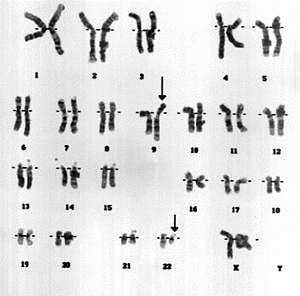
|
| The Philadelphia Chromosome |
Well, from 1921 to 1955, it was generally held that people, members of the human race, contained 48 chromosomes in every cell in their bodies. The chromosomes were thought to contain the genetic code governing our biological construction, explaining the difference between us and fruit flies, which for example only have four chromosomes per cell. After painstakingly examining the appearance of the chromosomes in different people and in cancer cells, it was then generally held that cancers never seemed to have any genetic abnormality. After all, the chromosomes of cancer cells looked exactly like those in normal tissue: Forty-eight chromosomes, never differing in cancers, so go look somewhere else for the cause of cancer. Unfortunately, the state of scientific development fifty years ago can be summarized by noting that about that time it then became established we really only had 46 chromosomes, not 48. As for cancer, the M.D. pathologist Peter Nowell, then noticed in 1956 that a patient with chronic myelogenous leukemia had an extra translocation on one particular chromosome, giving it a funny shape. This translocation was furthermore present in every single other leukemic cell suggesting that one cell had somehow undergone a single mutant change, and all the rest were its descendants. At least in CML (chronic myelogenous leukemia), it suddenly looked as though the cause had been found since the further study revealed the same was true of just about everyone who had CML. At first, it was felt that while maybe the cause of this particular type of cancer had been found, every other cancer might still be caused by something else. Not so. From believing no cancers were genetic in origin, Peter Nowell started us on the path of now being confident all cancers have a genetic cause.
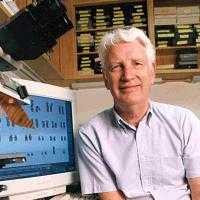
|
| Dr. Peter Nowell |
How could we all have been so wrong; can't scientists even count up to 46? No, as a matter of fact, in 1955 it was pretty hard. If we couldn't even tell how many of them were there, it's obvious the comment they all looked alike wasn't worth very much. As Peter shyly admits, his discovery was a result of being trained as a physician rather than as a life scientist; he knew what leukemia looked like, but at that time he didn't know very much about chromosomes. It happens chromosomes spend most of their lives expanded into tiny filaments too small to examine under the microscope. But as they enter the stage of cell division called metaphase, those filaments shorten and thicken up, becoming a lot easier to examine. As a pathologist, Peter didn't bother to stain his slides in dilute salt solution, but just washed them in tap water. The tap water had caused the cells to swell up and burst; those that happened to be in metaphase dumped their stubby chromosomes out where they could be stained and looked at. Simple. Doesn't everyone wash slides in tap water?
So fifty years ago, the general question of what causes cancer finally narrowed down to the right sort of specific question. Thousands of scientists, spending billions of dollars from the National Institutes of Health, sharpened the focus of their search considerably. It certainly looks as though someone is going to carry the search the final step, pretty soon. However, the fact that fifty years of intensive study still hasn't quite found the answer is an illustration of how fiendishly difficult the search really is. Each year that might have been spent futilely avoiding genetic searches would have added one year more before the answer was finally found. By the way, why is it called the Philadelphia Chromosome? In 1955 it had been decided by the scientific community that every genetic abnormality would be named after the city in which it was discovered. Dr. Peter C. Nowell of the University of Pennsylvania and the late Dr. David Hungerford of the Fox Chase Cancer Center were the joint discoverers, so obviously it was entirely a Philadelphia discovery; at that time it had been made a custom that genetic abnormalities were named after the city where they had been first found.
It would be a mistake to conclude that nothing new has been discovered in half a century of research. It has been established that not only Myelocytic Leukemia but essentially every cancer starts with some genetic abnormality, which triggers the expression of "mini RNA". These abnormalities then apparently express a cancer-producing action by triggering an abnormal factor in the cell signaling system, called tyrosine kinase. Drugs with the effect of paralyzing that enzyme have been found to be curative in 95% of cases of chronic myelogenous leukemia, and some other forms of lymphoma. We're certainly getting closer, step by unexpected step, to the answer. In fact, we may be getting even closer to a point where drug research can jump to seeking cures without precisely defining how the cancer was caused. After all, if cancer is caused by a chain of cellular events, it may not matter where you break the chain. That realization appeared with, first aspirin and then the statin drugs, for treating heart attacks and strokes, even though we are still not completely clear about how atherosclerosis is produced. Meanwhile, the death rate from hardened arteries has dropped by half.
It wouldn't be right to omit mention of Peter Nowell's Quaker heritage. Although he isn't a Quaker, his mother was a Matlack, a direct descendant of Timothy Matlack, the Haddonfield Quaker who was the scribe for the first writing of the Declaration of Independence. Sitting in silent Quaker meeting, polishing and simplifying one's message before delivering it, is very good training for a habit of simple, direct thought. As Dr. Nowell phrases it, he is a chronic "lumper" of ideas, when so many scientists are content to be "splitters". Splitting complexity into its essential components is a useful approach. But somewhere, someone has to get to the heart of the matter.
Zane Grey, Dentist
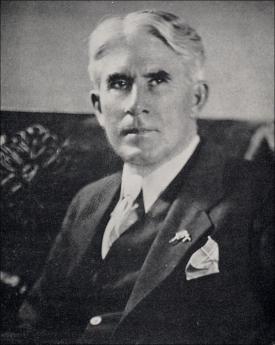
|
| Zane Grey |
The American myth of the cowboy has much more Philadelphia flavor than one would suppose, considering the far-western location of the cows, the New York origins of Teddy Roosevelt, and the implication of southern aristocracy running through the dispossessed gentlemen riding the purple sage. The myth of the noble cowboy is behind much of what elected Ronald Reagan, the Californian.
Nevertheless, the Homer who started this epic Iliad was Owen Wister of Seventh and Spruce, Philadelphia.His book The Virginian might be summarized in a single quotation, "When you say that to me, smile." Behind that, of course, was Wister the lion of the Philadelphia Club rebuking his peers. The real theme was "I searched the drawing rooms of Philadelphia and Boston for the gentleman. And I found him on the frontier."
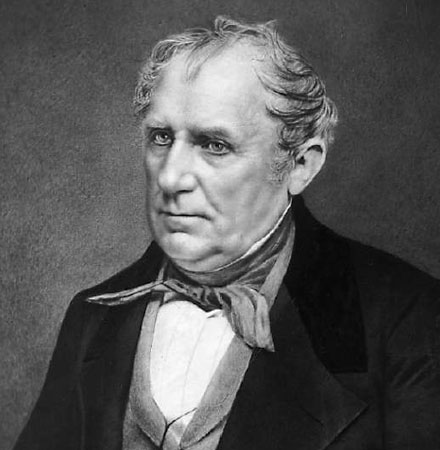
|
| James Fenimore Cooper |
Part of this complex theme is the underlying outdoors fraternity linking cowboys and Indians, tracing back to James Fenimore Cooper of Camden, NJ ennobling the noble savage in the Last of the Mohicans. Fair treatment for the natives has long been a strong Quaker theme, tracing back to William Penn's deep wisdom about colonization, and also personified in Corn planter the thoughtful Chief of the Iroquois, or Joseph Brant the scholarly Indian leader who translated the Bible, charmed the English monarchy, and then returned home to massacre the town of Lackawaxen. There's a theme here of shooting the circling Indians off their ponies, take no prisoners, mixed with the tragic white woman who falls in love with the equally tragic Indian brave, all doomed from the start. There's the sheriff with a shady past, going forth to shoot it out with outlaws while his Quaker wife watches out the window, because he is true to the Code of the West. Grace Kelly was surely no Quaker, but the Philadelphia hint is unmistakable.
It may take a century or more, but some American Homer is surely going to write the definitive epic based on this story. Meanwhile, Zane Grey tried his best. His version has a lot of Philadelphia in it, and not only because he went to the University of Pennsylvania on a baseball scholarship. He graduated from Penn as a dentist, practiced in New York for six years, and hated every minute of it. Writing cowboy stories in his spare time, he gladly quit dentistry after his first publishing success, and moved over to Lackawaxen, PA to write in the woods. Lackawaxen is a great fishing spot, and was once a flourishing resort community at the confluence of the railroad and canal systems, now long since decayed and gone. He lived there for fifteen years, and asked to be buried there. His home is now a museum.
Pearl Grey became Zane Grey by way of P. Zane Grey, DDS. He had been born in Zanesville, Ohio, the son of a Quaker mother who belonged to the founding Zane family, and a preacher-farmer father who had insisted on the dentistry idea. All his life, Zane Grey was a vigorous sportsman, most unlikely to warm to an effeminate name like Pearl. Or gentle Quaker ways, either; but like his cowboy heroes he was obedient to his code. Most of his life he managed to go fishing more than two hundred times a year, and produced two thousand words of writing almost every week. He wrote a hundred thousand words a year, and kept it up for thirty years. He published sixty books in his lifetime, and thirty more of his books have appeared since his death. His material was the basis for forty movies, and many short stories. Six of his books are about fishing, but mostly he wrote sophisticated variations on the theme of the wild West, the cowboy true to his code, and the noble savage. He was the first American author to become a millionaire from his writings. It seems sort of a pity that he was overtaken by the pressures of commercial success, and consumed by his extraordinary drive and diligence to the point where very little time was left for the Great American Epic of the West. He lived in California for many years, but it seems unlikely there were enough hours in his day to shake loose from Quaker origins.
The same is true of Ronald Reagan and his Iowa origins, but somehow that does not capsulize what the American cowboy represents. Somehow there is something in common about the former Confederate cavalrymen who were the early cowboys, the Quakers befriending the Indians, and the Iowa boy who was to negotiate the end of the Cold War with the Evil Empire. It is somehow a matter of remaining true to your roots while dealing fairly with strangers. It lies in Reagan's motto as much as the Virginian's barroom warning. Trust, but verify.
J. Edgar Thomson, Pres. PRR 1852-1874
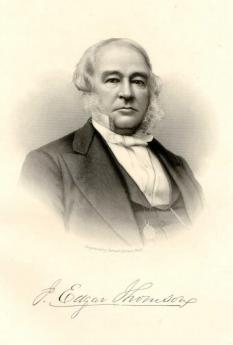
|
| J Edgar Thomson |
The third president of the Pennsylvania RR converted a local Philadelphia line into a national railroad, the largest corporation in the world. Thomson, born in the Quaker country of Springfield, Delaware County, was the son of a chief engineer of the Delaware-Chesapeake Canal and had worked closely with his father. After an introduction to the rail business, he worked on four other railroads before joining the Pennsy at the age of 29. The State of Pennsylvania had by then constructed a series of unsuccessful canals along most of its important waterways during the Whig days of faith in government, but Thomson knew canals very well and recognized that their rights of way were best transformed into rail lines. By acquiring these unprofitable companies, he rapidly changed the PRR into a state-wide rail network, of which the famous Horseshoe Curve at Altoona was the most notable achievement. From there he moved to convert wood-burners into the coal-burning locomotives developed in Philadelphia and shifted from iron rails to steel ones. The probably unexpected effect was to convert all railroads in the nation into customers of steel and coal, Pennsylvania's main resources. Andrew Carnegie was so pleased he renamed his main steel company into the J. Edgar Thomson Works.
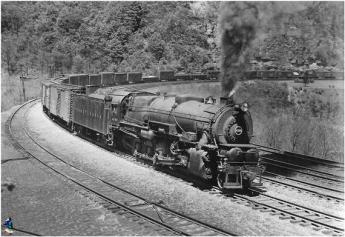
|
| Steam Engine on The Horseshoe Curve |
Thomson was quiet and conservative, never engaging in the high-jinks so characteristic of the rail barons of that day, leasing land rather than buying it whenever possible, expanding steadily but methodically, and never confusing revenue growth with profits. By 1870, Pennsylvania had expanded to a Jersey City terminus at New York harbor, and Chicago and St. Louis at the western ends. Within Pennsylvania, the line had expanded from 250 miles of track to over 6000. It was the largest corporation in the world. Underneath all this expansion was the Thomson system of decentralized management, essentially consisting of giving local control to division superintendents, but standardizing the corporation to superior approaches as they surfaced among the networked superintendents. His was a brilliant synthesis of the precision of an engineer combined with the cooperative sharing of a Quaker meeting. It was easy to describe but difficult to imitate, particularly by executives who boasted lifelong avoidance of the approaches of both the engineering profession and the cooperative diffident Quakers, in favor of swashbuckling, overborrowing, and muscle -- so popular at the time of the Gilded Age.
Thomson's fortune grew to seven or eight million dollars. While that was both comparatively modest by railroad standards and yet extremely affluent for the times, at his death, he had mostly given it to charity.
Tyler Arboretum
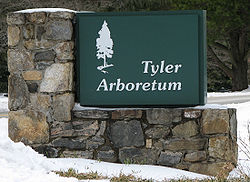
|
| Tyler Arboretum |
There are over thirty arboreta in the Philadelphia region, and one of the oldest and largest is located in Delaware County. The 650 acres of the Tyler Arboretum, adjoining 2500 acres of a state park, create a rather amazing wooded area quite close to heavily settled urban Philadelphia. The Arboretum is located on land directly deeded by William Penn, but it was privately held until 1940 and so is not as well known as several other arboreta of the region. The early Quakers, it may be recalled, often disapproved of music and "artwork", so their diversions tended to concentrate on various forms of natural science. The first director of the Tyler, Dr. John Wister, planted over 1500 azalea bushes as soon as he took office in the 1940s. They are now seventy or eighty years old, quite old and big enough to make an impressive display. Even flowering bushes seemed a little fancy to the original Quakers.
The interests of the earlier owners of the property were more focused on trees, especially conifers. The property contains several varieties of redwoods, including one impressive California redwood, said to be the largest east of the Mississippi. High above the ground, it splits into two main branches, the result of depredation by someone cutting the top off for a Christmas tree. So a large area near Painter Road is enclosed by a high iron fence, containing most of the conifer collection, and warding off the local white-tailed deer. Several colors of paint are to be seen high on many prominent trees, marking out several walking trails of varying levels of difficulty.
And then there are large plantings of milkweed, providing food for migrating butterflies; near a butterfly educational center. There are large wildflower patches and considerable recent flower plantings around the houses at the entrance. Because of the, well, Christmas tree problem, several houses on the property are still occupied.
The only serpentine barren in Delaware County is located on the property; we have described what that is all about in another essay. As you would imagine, there are great plant and flower auctions in the spring, conventions of butterfly and bird-watching groups at other times. The educational center is attracting large numbers of students of horticulture these days, and photographers. Flower gardens and photographers go together like Ike and Mike.
It's a great place for visitors, for members who are more involved, and for those with serious interests. With all that land to cover, some ardent walkers have enough ground to keep them regularly busy. Becoming a volunteer is a sign of serious interest, and that group is steadily growing. For a place that traces back to William Penn, it's slowly getting to be well known.
Quaker Mary Dyer and Algernon Sydney
State in Schuylkill Fishing Club
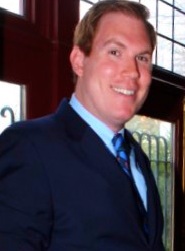
|
| Richard Romm |
Richard Romm, a rising historical scholar with a special interest in early Philadelphia, recently educated the Right Angle Club in the history of the Schuylkill Fishing Club in the State in Schuylkill, and was immediately accepted into membership. Of the Right Angle, that is, which is an old club by some standards, but scarcely a hundred years old in the eyes of the really old, old clubs.
The State in Schuylkill is an eating club, originally a fishing and eating club, apparently organized around the annual shad run up the river. The clubhouse, or Castle, was moved several times, in response to damming of the river, and is now located on the grounds of, or adjoining the edge of, Nicholas Biddle's estate on the Delaware River called Andalusia. One by one, the Atlantic Ocean rivers of America have been dammed and their annual shad migrations brought to an end, except through the city of Richmond, Va, so there was little point in moving The Castle to follow the fish. It remains, overlooking Delaware in spite of its name.
There seems to have been several name changes, the most important of which was to change the Colony of Schuylkill to the State of Schuylkill for obvious reasons. Originally, the Castle was roughly opposite the falls of Fairmount on the West Bank of the Schuylkill at about Girard Avenue; thus, from 1732 to 1822 located on Baron Warner's property called Eaglesfield. In 1822 it moved to Rambo's Rock (the Rambo family is said to be the oldest European settler family in Pennsylvania) opposite Bartram's Gardens, then finally in 1887 to Andalusia, Nicholas Biddle's country estate. The club was founded in 1732, and dates of movings are possibly hazy, possibly somewhat because of the reluctance of club officers to return the calls of inquiring historians. The State in Schuylkill claims to be the oldest organized men's club in the world, an honor contested by White's in London. The roots of this argument are found tangled in the vital issue of whether their age should be based on the formal organization of the clubs, or on the establishment of the coffee houses which housed the original clubs. Four books are said to have been written about club history, but we depend here on Mr. Romm.
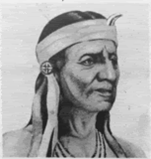
|
| Chief Tammenend |
There is also an unclear relationship with Chief Tammenend, possibly traceable to the shad run, but in any event to the Indian chief depicted with William Penn in the paintings by Benjamin West and Edward Hicks. May 1 is St. Tammany's day, growing into the fancy that he was the "Patron Saint of America", before a branch of the nation-wide Tammany association opened in New York and sort of tarnished up the name. Other traditions of the Fishing club have to do with wearing Mandarin hats, possibly having to do with the export of ginseng which was once abundant in our colonial suburbs, with a return cargo of Chinese dishware. All of the cooking is done by official citizens of the club. The quantities of food are remarkable; one 19th Century menu listed eleven pounds of meat per member. The club drink is a punch, the famous Fishhouse Punch, widely recognized to be rather strong. Its inventor is reputed to be Edward Shippen Willing, on the occasion of the first visit to the clubhouse by women guests. The quantity of alcoholic beverage at these events is especially remarkable in view of the Quaker origins of many original members of the club, but not necessarily of the guests. Among the various guests were Generals Grant, Meade, and McClellan. Dinner begins with two traditional toasts: to George Washington, and to Captain Sam Morris. Washington was appropriate enough, having a history of drinking a bottle of Madeira every day at lunch. But Sam? Captain Sam the Quaker?
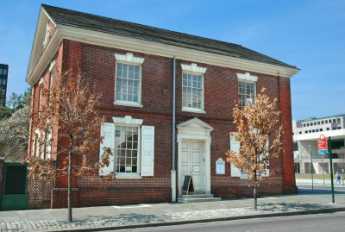
|
| Free Quaker Meetinghouse, Fifth and Arch Streets |
Somewhere in this tradition are allusions to the Free Quakers, Quakers who abandoned the peace testimony to fight the British. There is also the tradition of hostility to British rule which antedates the Revolution and may have some connection to the fanciful contention that their little state was not really part of Penn's colony. Captain (of the City Troop) Sam was a stalwart, possibly the sole founder, of the Gloucester (N.J.) Fox-hunting club. The history is passed down that 22 of the original 26 members of the First City Troop were members of the fox-hunting club, and many if not most were Quakers. The first "Governor" of the State in Schuylkill was Thomas Stretch, but the second Governor, from 1766 until his death, was Captain Sam. He was repeatedly referred to as the life of the club and held in the highest esteem by all. He was "read out" of the main Quaker Meeting, not so much for his drinking as for his flouting of Quaker belief in pacifism. He reputedly led a saber charge at the Battle of Trenton and was a leader of the City Troop in that revolution within a revolution at James Wilson's house, which rescued at least four future signers of the Constitution from a mob of militia which momentarily turned Jacobin.
Naturally, descendants of Quakers on both side of this uproar have been reluctant to say much about it. But somewhere within the history of Samuel Morris must be some important clues about the 18th Century splits within the Quaker Church, to say nothing of the revolt of the three Quaker colonies against British rule.
Espionage in the Revolution
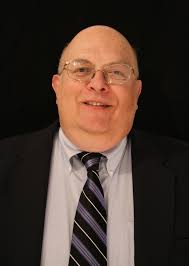
|
| John Nagy |
Both sides fighting the Revolutionary War predominantly spoke English as a native language, so it seemed deceptively simple to pick up a little cash for a tidbit of information or two. John Nagy, who has written several books on spies in the Revolution, recently addressed the Right Angle Club about this interesting topic. According to him, Quakers were favorites as spies because they were widely split in their sympathies, and as pacifists were abundant in the civilian societies of the time. Others have commented that the main difference between Conservatives and Free Quakers was that the Free Quakers were mostly of the artisan class and sympathetic to the Revolution, while the Conservatives were mainly of the merchant class, and Tories. But there were many exceptions, and the plain dress Quakers were hard to tell apart and passed freely through the military lines. No doubt many readers will be incensed by such comments, for which we take absolutely no responsibility.
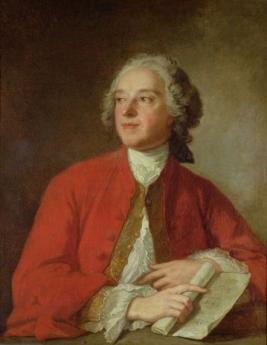
|
| Beaumarchais |
The one main exception to the English-language generalization were the French, who were still smarting from their defeat in the Seven-Years (French and Indian) War. The playwright Beaumarchais was quite active in the French movement to make trouble for the hated English and seems to have stirred up King Louis XVI to be interested in financing rebel trouble-makers, if not to become active combatants. In any event, a wary King thought it was best to send a spy to look over the situation. As detailed in a little pamphlet called The Spy in Carpenter's Hall the Americans were tipped off about the plot. Accordingly, the spy named Bonvoloir was hidden up on the second floor of Carpenter's Hall, while the colonists put on a belligerent falsified performance on the first floor. It is claimed their performance was a convincing one, having the desired effect of creating a report to the King that the colonists were belligerent, warlike, numerous and united. After the Battles of Trenton and Saratoga, the timing was good for using this sort of report to provoke the King into doing what he was mostly of a mind to do, anyway.
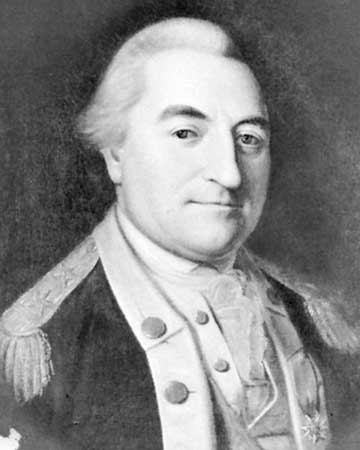
|
| Johann de Kalb |
The French were unusual in favoring aristocrats as spies and Johann de Kalb was anther who snooped around, returning later in the form of General de Kalb of military note. The names of British spies, aside from Major Andre, tended to have a Quaker sound to them, like Dunwoody, Cadwalader Jones and the like. It would take deep research to know whether these were Quaker stalwarts or merely black sheep of some family; there is little doubt that sympathies changed with the changing fortunes of battle. Another feature was the careless lying which took place for propaganda purposes. The famous story of Lydia Darragh, a Quaker who allegedly overheard the British officers plotting the surprise attack on Whitemarsh on December 5, 1777, and walked many miles in the snow to warn Washington -- is apparently a much dressed-up version of what happened. The whole Darragh family was engaged in regular spying, and the evidence is that Lydia's brother William was the one who was the messenger. He apparently carried messages under the cloth covering of the buttons on his coat.
.jpg)
|
| Joseph Galloway |
Two types of spying have a greater ring of authenticity. The British needed pilots to guide their ships up the Delaware past fortifications and obstacles. Maps were nice, but it seemed simpler to enlist the efforts of two ladies of easy virtue, Ms. O'Brien and Ms. McCoy, to hang out in taverns and entice local ship pilots to enlist to guide the British ships into Philadelphia. The British spymasters even had the ingenuity to entice a member of the Continental Congress, Joseph Galloway, to turn over the commentary records from which troop strength could be estimated from the food consumed. It is not recorded whether suitable adjustments were made for starving troops, stolen supplies, or fraudulent charges, however.
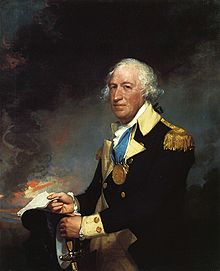
|
| Benedict Arnold |
Two prominent officials were accused of selling out the side, but an accusation of this sort is easily made, hard to prove. When the examples of Benedict Arnold and Peggy Chew can be verified, however, there is always doubt cast on everyone which some will believe. The system of double signatures was used, so there were two co-treasurers of the United States, Joseph Hellegas and George Clymer. Letters have been produced indicating that one or the other sold the commissary records. Hellegas' home is still today the residence outside Pottstown of a prominent Philadelphia surgeon, and his portrait appears on the ten-dollar bill. In so doing, he started a tradition of Secretaries of the Treasury on the ten-dollar bill, presently occupied by Alexander Hamilton. George Clymer, for his part, was a signer of the Constitution and a favorite of George Washington. Are these stories true? Who knows, but in an eight-year war, John Nagy has accumulated evidence that there were over five hundred documented spies. The essential question remains one of whether to believe the documents.
One Big Brewerytown
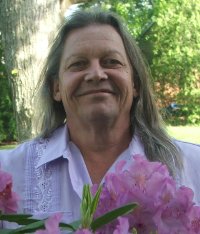
|
| Rich Wagner |
RICH Wagner, the author of Philadelphia Beer, recently visited the Right Angle Club. It's hard to imagine that Philadelphia was once the American center of beer production, with hundreds of breweries and their associated bottlers, beer gardens, brewing equipment, and horse-drawn beer delivery systems, dominating the city scene. Equally hard to imagine that the last Philadelphia brewery closed in 1987, and the biggest American brewer, Budweiser, was sold to the Belgians in the past year. What's this all about?
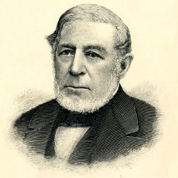
|
| Francis Perot |
In the early wilderness days, water supplies were tainted and unsafe, so most prosperous Quakers had their own little brewery just to avoid typhoid fever. The first American brewery was started by Anthony Morris (the second Philadelphia Mayor) in 1687, in a little brewery on Dock Creek, which became the early Brewerytown of the city, with several dozen brewpubs for sailors and the like. In 1797 there were over a hundred breweries in Philadelphia, and in 1840 there were over three hundred of them. Perot's brewery was prominent for a long time since an early Perot married a daughter of Anthony Morris. Since Philadelphia developed the first and famous city water supply in 1800, beer drinking lost its position as a safe beverage in an unsafe city, and gradually water-drinking became the dominant beverage for the strict and upright. At one time in the early Eighteenth century, gin was cheaper than beer, so even the intemperate multitudes deserted beer for a while, although the effect of the higher alcohol content of gin was apparently fairly dramatic.
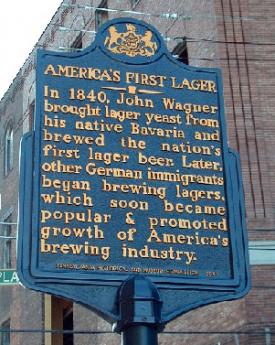
|
| John Wagner Marker |
In 1840 John Wagner imported the yeast for lager beer from Bavaria, at considerable personal risk if he had been caught at it. Prior to 1840, Philadelphia beer was either stout or Porter, a very dark and bitter dose, or else ale, which had the advantage of storing fairly well and thus was popular for sailing vessels and among sailors. The yeast for ale floats to the top and ferments, whereas lager yeast sinks to the bottom of the barrel and requires some refrigeration to slow it down. In all forms of beer, the suds are created by later adding some unfermented beer to the barrel for the purpose of generating carbon dioxide. That's what is going on when you see the bartender in a British pub pulling on a lever to pump it up from the basement. Lager tastes much less beery than other beer and is by far the dominant form of beer in consumption -- a considerable improvement, in the view of most people. But it has to be cooled, and Philadelphia had a system. Brewerytown moved to Kensington, dominating the local scene. It was produced in barrels which were trucked to the east bank of the Schuylkill where ice formed on the surface of the river, stilled by impoundment above the Fairmount Dam. Caves were dug in the banks of the Schuylkill where the barrels full of fermenting beer were hauled to be cooled by the ice for the rest of the process. From there, it was trucked again to bottlers in a general ratio of one brewer for thirty bottlers. More directly, it was trucked to the beer gardens of Spring Garden to Girard Avenue, which gave that area a different sort of reputation as a brewery town. By this time, most of the breweries had moved to the region between 30th and 33rd Streets, near Girard, and most of them still survive, made into condominiums by rehabilitation money. One by one, many sections of downtown Philadelphia acquired a beer environment. A dramatic moment in this process was the advent of the 1876 exposition, which caused many of the Schuylkill fermenting vaults to be acquired by eminent domain. A second momentous change was introduced by the invention of refrigeration, apparently invented in Germany near Berlin, but imported and refined by York and Carrier. Philadelphia was particularly suitable for the importation of coal to fuel the heating of the brew, and the chilling of the fermentation. All of this required large numbers of brewers, bottlers, makers of bottles and inventors of brewing equipment. It took many horses to haul all this material around town, and many teamsters to drive the horses. This was a beer town, until Prohibition.
During the long period of beer ascendency, the advantages of big breweries over small ones were gradually making this a major industry, rather than a local craft. Prohibition completed the destruction of the small craft brewers and brew-pubs. Only 17 of the major brewers survived Prohibition, and then even the big ones went out of business, ending with Schmidt's in 1987, almost exactly three hundred years after the first little one started by that famously convivial Anthony Morris on Dock Street. Evidently, the same competitive disadvantages continue as even Budweiser moves to Brussels, where you would ordinarily expect the wine to be the popular drink. Changing tastes have been cited as the reason for this shift, but differential taxes seem more probable as an explanation. In most industries, you are apt to find that most of the competition takes place in Washington and Harrisburg, rather than the saloons of Main Street or the salons of Madison Avenue. But perhaps not. We hear that little Belgium is about to have a civil war because the Flemish can't get along with the Walloons. And somebody in Portland, Oregon got the idea that beer was trendy, and started up the growing phenomenon of craft brewers, usually flourishing in brewpubs. We are apparently going back where we started in 1687.
REFERENCES
| Philadelphia Beer: A Heady History of Brewing in the Cradle of Liberty: Rich A. Wagner: ISBN: 978-1609494544 | Amazon |
American Chestnut Trees
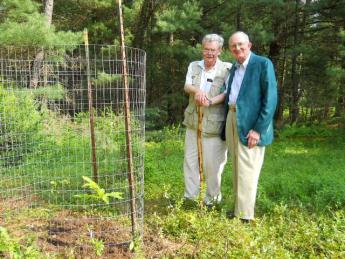
|
| American Chestnut tree |
RECENTLY, John Wenderoth of the Tyler Arboretum visited the Right Angle Club of Philadelphia, bringing an astounding account of the triumph, near-extinction, and revival of the American Chestnut tree. The Tyler Arboretum, and this man, in particular, is at the center of the movement to rescue the tree, although the modern Johnny Appleseeds of the movement seem to be a Central Pennsylvanian named Bob Leffel, and a geneticist named Charles Burnham. Together, they had the vision and drive to enlist a thousand volunteers to plant seedlings in Pennsylvania; and there are many other volunteer groups in other states within Appalachia. About 45,000 Chestnut hybrids have been planted, surrounded by wire fencing to protect the new trees until they grow too tall for deer to reach the leaves. Here's the story.
In 1904 it was estimated that a fourth of all trees in the Eastern United States were American Chestnuts. The tree typically grew to eighty feet before permanent branches took over, so the shading and tall pillars of tree trunks gave the forest a particular cathedral-like distinctiveness, much celebrated by such authors as James Fennimore Cooper. The wood of the American Chestnut tree is rot-resistant, so it was favored by carpenters, log-cabin builders, and furniture makers. It once was a major source of tannin, for leather tanning. The nuts were edible, but it has been a long time since they were available for much eating. The chestnuts you see roasted by sidewalk vendors are primarily Chinese Chestnuts, which actually come to us from South Korea. The Buckeye, or horse chestnut, produces a pretty and abundant nut but is too bitter for most tastes. For whatever reason, a fungus was first discovered to infect the chestnuts of the Bronx Zoo in 1905, attracting the attention of Teddy Roosevelt and his Progressive naturalist friends, but to little avail. The fungus (Cryptomeria parasitic) enters the tree through cracks in the bark, flourishes in the part of the tree which is above ground, leaving the roots undisturbed. Ordinarily, when this sort of thing happens, the roots send up shoots which keep the tree alive and flourishing. Unfortunately, the abundant deer of this area quickly nipped off the shoots as they appeared, and finally, the trees died. It took only a decade or so for this combination of natural enemies to wipe out the species, and today it is unusual to see lumber from this source. The forests of Chestnuts have been replaced by other trees, mostly oaks. The Chinese chestnut, however, proved to be resistant to the fungus, even though it does not grow to the same height.

|
| Chinese Chestnuts |
After many futile but well-meaning efforts to save the trees by foresters, friends of the American Chestnut tree turned to geneticists. The goal was to transfer the fungus resistance gene from the Chinese Chestnut to a few surviving American Chestnuts. It took six or seven generations of cross-breeding to do it (four generations of seedlings, then crossing the crosses, then weeding out the undesirable offspring), but eventually, the Tyler Arboretum was supplying truckloads of seedlings to the volunteers to plant in likely places. It's going to take many years for the seedlings to grow in sufficient numbers to make an impact on our forests, and eventually on our carpenters, but that effort is underway with gusto. If anyone wants to volunteer to join this effort, there appears to be room for plenty more people to help.
The King's Road
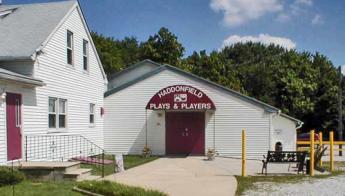
|
| Plays and Players of Haddonfield |
Harry Kaufman may not have started the Plays and Players of Haddonfield, but he certainly sparked it to a near-professional level in a town of 7000 people. The orchestra and the ballet company are particularly outstanding at the moment, the soloists on the stage quite good, although they never made the grand European tour which is thought to be the prerequisite for getting into the big time. Harry was the life of any party, and particularly good at composing little ditties, never quite getting around to stringing them together into a musical comedy until the 250th anniversary of the town. Even then, it is recalled he was shy and reluctant and had to be pushed a little. Since The King's Road appeared shortly after Oklahoma! transformed, even revolutionized, American musical comedy, it was not only the model but the stimulus for a similar comedy celebrating the beginnings of our little state. The plot was a simple one of a conflicted love affair. The striking innovation of Oklahoma! was to crowd most of the show's songs into the first act, repeating snatches of their themes as sort of Wagnerian background commentary throughout the remainder of the play. The other innovation of what was originally called Green Grow the Lilacs was the addition of Agnes DeMille's ballet company to emphasize the real historical theme with light-hearted music. Since I was one of the original reviewers for Oklahoma! in its New Haven tryouts, I can remember the revolutionary impact of that play, very well.
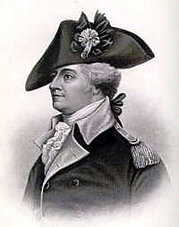
|
| Anthony Wayne |
Harry had to go to the Historical Society for authentic details of the conflict between the attraction for Revolutionary aspirations for Liberty, and loyalty to the earlier sufferings of Quakers for their pacifist leanings. Some Quakers deserted their faith to join the Revolution, and other Quakers tried to convert the Hessian soldiers. And still, others were loyal to the King of England. The Revolution was almost won at this moment, as the British occupants of Philadelphia had abandoned their supplies to attack, and had to get to the British fleet, bottled up in the lower Delaware River by fortifications at Fort Mifflin and Fort Mercer on the Jersey side of the river. The Hessians had been sent to attack Fort Mercer from the rear, passing through Haddonfield and stopping one night before going on to what we now call National Park. While the Hessian officers were being entertained by John Gill with discussions of the futility of war, Jonas Cattell slipped out of town and ran to alert Fort Mercer of its danger. The guns of the Fort were turned around, and the defenders pretended not to notice the approach of the Hessians until they were ambushed and largely destroyed. If Fort Mifflin on the Pennsylvania side of the Delaware River could have held out, the starving British might have had to surrender, but that didn't happen. In any event, the New Jersey Militia did its part, and little Quaker Haddonfield helped them in a sort of characteristic Quaker way. With a ratta-tat-tat and a fiddly dee, the rag-tag swallow-tail Jersey Militia got all the credit.
The play does not emphasize that the State of New Jersey was founded at the Indian King Tavern during these commotions, or that General Washington starving at Valley Forge sent Mad Anthony Wayne to circle up and around Trenton to drive a herd of cattle back from Salem County, two hundred miles back to Valley Forge. The British sent Captain Simcoe down to Salem County to massacre the Quaker farmers who provided the cattle. These later developments are only mentioned in its anthem to "Generals Wayne, LaFayette, and Pulaski", and every good resident of Southern New Jersey is supposed to know what that is all about.
The Quaker historian Rufus Jones established the enduring tradition that this split is what ultimately reduced the Quakers from the dominant religious group to a small religious sect in the three states once owned by William Penn, Delaware, Pennsylvania, and New Jersey. Related to such turmoil was the claim that more battles of the Revolution were fought in New Jersey than in any other state; if you include the large privateer navy going to see from the Jersey Pine Barrens, that is probably true. And every twenty-five years or so, we have to put on a revival of "The King's Road", and just show 'em.
State and Federal Powers: Historical Review

|
| John Dickinson of Delaware |
It was expedient to leave certain phrases in the Constitution intentionally vague, but the overall design is clear enough. Just as twenty-eight sovereign European nations now struggle to form a European Union, thirteen formerly sovereign American colonies once struggled to unify for the stronger defense at a reduced cost. Intentionally or not, that created a new and unique culture, reliant on the constant shifting of power among friendly rivals. Everybody was a recent frontiersman, trusting, but suspicious. It still takes newcomers a while to get used to it.
So the primary reason for uniting thirteen colonies was for a stronger defense. As even the three Quaker colonies of New Jersey, Pennsylvania and Delaware could see, if you are strong, others will leave you alone. In time, the unification of many inconsequential behaviors created a common culture of important ones; and in time that common culture strengthened defense. At first, it seemingly made little practical difference locally whether construction standards, legal standards, language and education standards and the like were unified or not. Except, that in the aggregate, it forged a common culture.Returning to the Constitutional Convention, an additional feature was added to the tentative 1787 document to respond to protests from small component states. They objected that whatever the big-state motives might be, small states would always be dominated by populous ones with more congressmen if a unicameral Legislature is made up of congressmen elected by the population. Pennsylvania had recently had a bad experience with a unicameral legislature. So a compromise bicameral legislature (with differing electoral composition in the two houses) was added to protect small-state freedoms from big domineering neighbors. Even after the Constitution was agreed to and signed, the states in ratifying it still insisted on a Bill of Rights, especially the Tenth Amendment, elevating certain citizen prerogatives above any form of political infringement, by any kind of a majority. These particular points were "rights"; individuals were even to be insulated from their own local state government. The larger the power of government, the less they trusted it. John Dickinson of Delaware, the smallest state, soon made the essential point abundantly clear to a startled James Madison, when he pulled him aside in a corridor of Independence Hall, and uttered words to the effect of, "Do you want a Union, or don't you?", speaking on behalf of a coalition of small states. It was probably galling to Dickinson that Madison had never really considered the matter, and went about the Constitutional Convention airing the opinion that, of course, the big states would run things. Dickinson, who had been Governor of two states at once, had observed the effect of this attitude and wasn't going to have more of it.The practice of Medicine was certainly one of those occupations where it mattered very little whether we were a unified nation. Unification of medical care offered a few benefits, but mostly it didn't matter much, right up to 1920 or so. Even then I would offer the opinion, that unification of the several states (with consequent Free Trade) only made a big difference to health insurance, and still made little difference to the rest of medical care. In fact, there are still about fifteen states with too little population density to provide comfortable actuarial soundness for health insurance, as can readily be observed in the political behavior of their U.S. Senators. Although the number of low-population states gets smaller as the population grows, there are even so perhaps only ten big states where multiple health insurance companies can effectively compete within a single state border. Quite naturally the big-state insurers expect one day to eat up the small ones. By contrast, the nation as a whole, the gigantic population entity which Obamacare seeks to address, has far too many people spread out over far too large an area, to be confident we could unify them into one single program. Dividing the country into six or seven regions would be a much safer bet. That's the real message of the failure of the Computerized Insurance Exchanges -- far too much volume. And the coming failure of the Computerized Medical Record -- with too much complexity. With unlimited money, it can be done, because diseases are disappearing and computers are improving. But why struggle so hard?
It is at least fifteen years too early, and mostly serves the interest of insurance companies, if they can survive the experience. At the same time, we are at least fifteen years away from growing the smallest states to the point where we could decentralize. It's really a situation very similar to the one John Dickinson identified, James Madison briefly acknowledged, and where Benjamin Franklin improvised a solution. In their case, it was a bicameral legislature. In the case of medical care, it could be an administrative division of revenue from the expenditure. It could be the cure of a half-dozen chronic diseases. It could be six regional Obamacare. But creating one big national insurance company during a severe financial recession is something we will be lucky to survive.
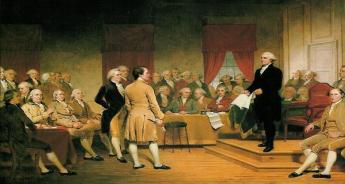
|
| Delegates |
Benjamin Franklin, who for over 40 years had been working on a plan for a union of thirteen colonies (since 1745, long ago producing the first American political cartoon for the Albany Conference), devised the compromise. It was essentially a bicameral legislature -- with undiminished relative power in the Senate for small states. In this backroom negotiation, it was pretty clear Franklin held the support of two powerful but mostly silent big-state delegates, Robert Morris and George Washington. These were the three men of whom it could be said, the Revolution would never have been won without each of them. In 1787 they were still the dominant figures in diplomacy, finance, and the military. All three were deeply committed to a workable Union, each for somewhat different reasons. Now that a workable Union was finally within sight, parochial squabbles about states rights were not going to be allowed to destroy their dream of unity.
And so it comes about, they gave us a Federal government with a few enumerated powers, ruling a collection of state governments with regional power over everything else. And since big-state/small-state squabbles are unending, almost any other solution to some problem repeatedly, seemed preferable to disturbing what holds it all together. On the other hand, the Industrial Revolution was beginning at about the same time, and people who recognized the power of larger markets almost immediately set about attacking state-dominated arrangements, systematically weakening them for a century, and redoubling the attack during the Progressive era at the end of the 19th Century. Attacks on what seemed like an abuse of state power, the power to retain slavery, and later the power to perpetuate white racism, were claimed to justify this attrition of states rights. The ghost of the Civil War hung over all these arguments, restraining those who pushed them too far.
However, the driving force was industrialization, with enlarged businesses pushing back against the confinement of single-state regulation within a market that was larger than that. This restlessness with confining boundaries was in turn driven by railroads and the telegraph, improving communication and enlarging markets, which offered new opportunities to dominate state governments, and when necessary the political power weakens them. One by one, industries found ways to escape state regulation, although the insurance industry was the most resistant, whereas local tradesmen like physicians found it more congenial to side with state and local governments. The 1929 crash and the Franklin Roosevelt New Deal greatly accelerated this dichotomy, as did the two World Wars and the Progressive movement from Teddy Roosevelt to Woodrow Wilson. The Founding Fathers were said to have got what they wanted, which was a continuous tension between two forces, supporting both large and small governments; with neither of them completely winning the battle.
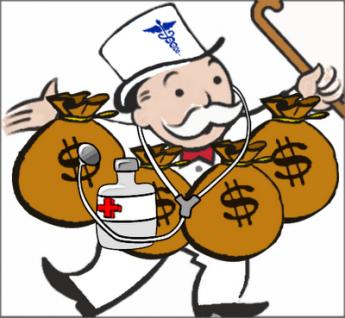
|
| Insurance Monopoly |
The medical profession further evolved from a small town trade into a prosperous profession during the 20th century, but the practice of medicine remained comfortably local. Even junior faculty members who move between medical schools quickly come to realize their national attitudes are somewhat out of touch with local realities. For doctors, state licensure and state regulation remained quite adequate, and state-regulated health insurance companies paid generously. State-limited health insurance companies had a somewhat less comfortable time of it, but the ferocity of state-limited insurance lobbying, as exemplified by the McCarran Ferguson Act, perpetuated it. The medical profession watched uneasily as the growth of employer-paid insurance extended the power of large employers over health insurance companies beyond state boundaries, and thus in turn over what had been medical profession's kingdom, the hospitals. And the medical profession also had to watch increasing congeniality with big government extend through businesses, unions and universities, fueled by overhead allowances of federal research grants and finally in 1965, federal health insurance programs. Nobody likes his regulator, but national organizations inevitably prefer a single regulator to fifty different ones. Furthermore, everybody could see that health care suddenly had lots of money, and naturally, everybody wanted some.
 There is nothing naturally inter-state about medical care -- except health insurance. 
|
To be fair about it, there was not a strong case for state regulation, either. It could have been argued that uniformity and reduced administrative costs favored central regulation over-dispersed control, because of improved efficiency; and few would have argued about it. Until the ACA insurance exchanges crashed of their own weight around the ears of hapless creators, that is, unable to do what Amazon seems to do every day, and raising quite a few embarrassing recollections. Recollections of the mess the Sherman Antitrust Act inflicted on local medical charity in Maricopa County, Arizona. Recollections of the "Spruce Goose" airplane that Howard Hughes made so big it couldn't fly. Recollections of the gigantic traffic jam strangling the District of Columbia every weekend. And, reminders that 2500 pages of legislation remain to be converted into 20,000 pages of regulations which it would take a lifetime to understand. Suddenly, let's face it, retaining state regulation of health care, or not rocking the boat, gets a lot better press. It might even work better than the national kind, especially in an environment where no one expected a perfect solution, and just about everyone had heard of the Curse of Bigness. When we first discovered that use of health insurance added 10% to the cost of health care, it had seemed like an easy place to extract 2% of the Gross Domestic Product for better things, just by streamlining administration. But after the health exchange fiasco, some people begin to wonder if 10% is just what it costs to use insurance to pay for healthcare. If that is the case, perhaps we should look at other ways of paying our bills, not just a different regulator. Nobody would pay 10% just to have his bills paid, if he understood what he was doing.
Millennials: The New Romantics?
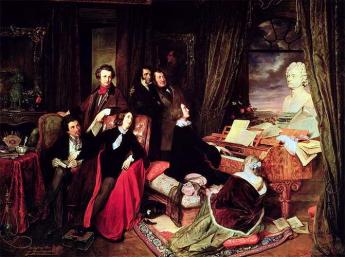
|
| Romantic Era |
It was taught to me as a compliant teenager that the Enlightenment period (Ben Franklin, Voltaire, etc.) was followed by the Romantic period of, say, Shelley and Byron. Somehow, the idea was also conveyed that Romantic was better. Curiously, it took a luxury cruise on the Mediterranean to make me question the whole thing.
It has become the custom for college alumni groups to organize vacation tours of various sorts, with a professor from Old Siwash as the entertainment. In time, two or three colleges got together to share expenses and fill up vacancies, and the joint entertainment was enhanced with the concept of "Our professor is a better lecturer than your professor", which is a light-hearted variation of gladiator duels, analogous to putting two lions in a den of Daniels. In the case I am describing, the Harvard professor was talking about the Romantic era as we sailed past the trysting grounds of Chopin and George Sand. Accompanied by unlimited free cocktails, the scene seemed very pleasant, indeed.
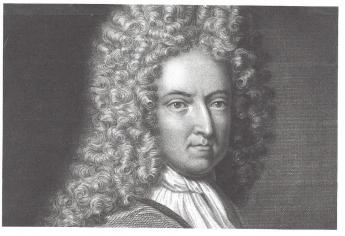
|
| Daniel Defoe |
In the seventy years since I last attended a lecture on such a serious subject, it appears the driving force behind Romanticism is no longer Rousseau, but Daniel Defoe. Robinson Crusoe on the desert island is the role model. Unfortunately for the argument, a quick look at Google assures me Defoe lived from 1660 to 1730, was a spy among other things, and wrote the book which was to help define the modern novel, for religious reasons. His personal history is not terribly attractive, involving debt and questionable business practices, and his prolific writings were sometimes on both sides of an issue. He is said to have died while hiding from creditors. Although his real-life model Alexander Selkirk only spent four years on the island, Defoe has Crusoe totally alone on the island for more than twenty years before the fateful day when he discovers Friday's footprint in the sand.
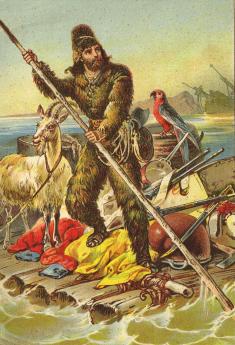
|
| Robinson Crusoe |
But the main point of history was that Defoe was born well before William Penn and died before George Washington was born. The romanticism he did much to promote was created at least as early as the beginning of the Enlightenment and certainly could not have been a retrospective reaction to it. Making allowance for the slow communication of that time, it seems much more plausible to say the Enlightenment and the Romantic Periods were simultaneous reactions to the same scientific upheavals of the time. Some people like Franklin embraced the discoveries of science, and other people were baffled to find their belief systems challenged by science. While some romantics like Campbell's Gertrude of Pennsylvania, who is depicted as lying on the ocean beaches of Pennsylvania watching the flamingos fly overhead, were merely ignorant, the majority seemed to react to the scientific revolution as too baffling to argue with. Their reasoning behind clinging to challenged premises was of the nature of claiming unsullied purity. Avoidance of the incomprehensible reasonings of science leads to the "noble savage" idea, where the untutored innocent, young and unlearned, is justified to contest the credentialed scientist as an equal.
Does that sound like a millennial to anyone else?
The No-Doctrine Doctrine
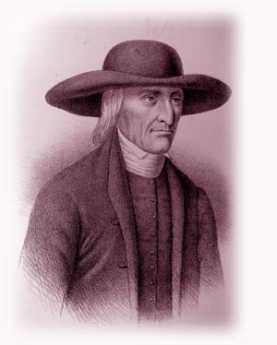
|
| quaker |
Although Quakers have long been famous for good relations with the Indians, both groups strongly prizing simplicity and keeping your word, few Indians converted to Quakerism. Indians would attend the silent meetings and listen respectfully, but in the end, Christian converts were far more likely to convert to the Moravian Church. To resist defining your common beliefs creates automatically a problem for explaining what you believe. It becomes acceptable to believe a wide range of things, but it is also acceptable to believe very little. Not surprisingly, the two great religious schisms of the Quakers have broken their unity on just this point.
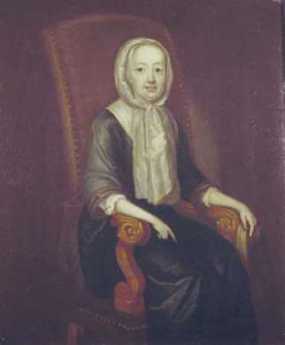
|
| A History |
The first great Quaker schism was created by one George Keith (1638-1716), who was born a Presbyterian and died an ordained Episcopalian. For several decades, however, Keith was one of the foremost leaders of the Pennsylvania Quakers, partly as a result of being just about the best-educated man of the Colony. His leadership, however, led him to crave a more defined set of Quaker doctrines, and when he carried this idea too vigorously, he eventually encountered implacable opposition which in time caused him and his considerable number of followers to be expelled from the Society of Friends. (George Keith should not be confused with Sir William Keith, whom Hannah Penn appointed as governor of Pennsylvania in 1717.)
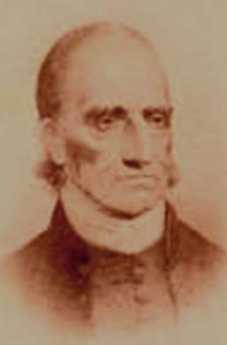
|
| Elias Hicks |
The first great schism was thus about whether there might be too little defined doctrine in Quakerism. The second great schism, by contrast, grew out of the feeling there was too much doctrine. Led by Elias Hicks in 1830, the Hick sites split off from mainstream Quakerism in a quest for more simplicity, less religiosity, more silent contemplation of the Inner Light. In a sense, the outward show of protest in the black hats, plain dress, the plain speech had provoked a reaction that these things were no longer simple, they were ostentatious. Too many people were being "eldered", too many people were being "read out of the meeting" for violating doctrinal rules.
Curiously, both rebels were cast out, but over each following century the church as a whole gradually adopted what was largely their view of things. After Keith, Quakerism became more rigid and formalized. After Hicks, it became more mystical and free-thinking.
By insisting that in spite of turmoil it caused no doctrine was to be defined, Quakers have edged into the negative position of defining what they are not. Unlike the early sects of Christianity, Quakers have discarded the hope of miraculous divine intervention as a reason to behave in a Friendly Christian way. No one is apparently going to revive your bones from the tomb, feed your multitudes with forty loaves, or descend from Heaven and drive your enemies into the sea. Neither a later reward in Heaven nor a forthcoming everlasting punishment in Hell can be regarded as either very likely or much of an incentive to good behavior. Other religions may believe these things and might even turn out to be right, but Quakers feel the unembellished Golden Rule is a sufficiently understandable motive for conduct.
And gentle indirection is often a better way to persuade others than thundering oratory. The story is told of a visitor who found himself in a Quaker gathering and made polite conversation by asking what the Quaker position was on the Trinity. A sweet old gentleman is said to have smiled and said, "We believe in the following Trinity: The brotherhood of man, the fatherhood of God -- and the neighborhood of Philadelphia."
Jury Nullification
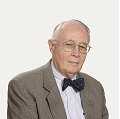 |
| Tom Monteverde |
We must be grateful to the late distinguished litigator, Tom Monteverde, for reminding us of the importance of the jury in American history. Juries seldom realize how much power they can have if they unite on a common purpose. In fact, juries have the implicit right to veto almost anything the rest of government does, by rendering it unenforceable. If the jury opinion is a majority view, nothing but a civil war can legally stop them. So it helped Washington to have jury nullification seem an invincible Quaker idea, while the South trusted a rich slave-owner who had renounced power.
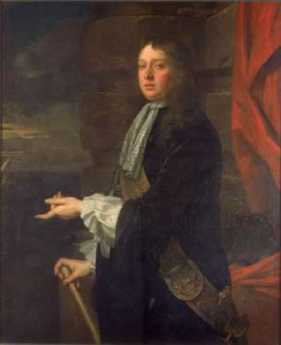 |
| William Penn |
The right to a jury trial originated in the Magna Carta in 1215, but a jury's essentially unlimited power was established four centuries later by Quakers. The legal revolution grew out of the 1670 Hay-market case, where the defendant was William Penn, himself. Penn was accused of the awesome crime of preaching Quakerism to an unlawful assembly, and while he freely admitted his guilt he challenged the righteousness of such a law. The jury refused to convict him. The judge thus faced a defendant who said he was guilty and a jury who said he wasn't. So, the exasperated judge responded -- by putting the jury in jail without food.
The juror Edward Bushell appealed to the Court of Common Pleas, where the problem took on a new dimension. The Justices certainly didn't want juries flouting the law, but nevertheless couldn't condone a jury being punished for its verdict. Chief Justice Vaughn decided that intimidating a jury was worse than extending its powers, so the verdict of Not Guilty was upheld, and Penn was set free. Essentially, Vaughn agreed that any jury that wasn't allowed to acquit was not really a jury. In this way, the legal principle of Jury Nullification of a Law was created. A verdict of not guilty couldn't make William Penn innocent, because he pleaded guilty. A verdict of not guilty, under these circumstances, meant the law had been rejected. Jury nullification thus got to be part of English Common Law, hence ultimately part of the American judicial system.
 |
| Andrew Hamilton |
This piece of common law was a pointed restatement of just who was entitled to make laws in a nation, whether or not nominally it was ruled by a king or a congress. Repeated British evasion of the principles of jury trial became an important reason the American colonists eventually went to war for independence, and probably a better one than some others. The 1735 trial of Peter Zenger was an instance where Andrew Hamilton, the original "Philadelphia Lawyer", convinced a jury that British law, blocking newspapers from criticizing public officials for improper conduct, was too outrageous to deserve enforcement in their court. In that case, jury defiance became even more likely when the judge instructed the annoyed jury that "the truth is no defense". Benjamin Franklin's Pennsylvania Gazette was here quick to come to the side of jury nullification, saying, "If it is not the law, it ought to be law, and will always be law wherever justice prevails." Franklin quickly became allied with Andrew Hamilton, who became Speaker of the Pennsylvania Assembly.
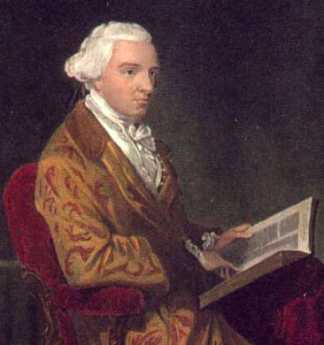 |
| John Hancock |
The Zenger case was often stated to be the origin of the Freedom of the Press in our Constitution fifty years later, but in fact the First Amendment merely provides that Congress shall pass no laws like that. Hamilton had persuaded the Zenger jury they already had the power to stop enforcement of such tyranny, and the First Amendment could be seen as trying to prevent enactment of laws that will foreseeably incite a jury to revolt.
The Navigation Acts of the British government, for example, were predictably offensive to the American colonists, whose randomly chosen representatives on juries were then rendered useless with their wide-spread refusal to convict. This, in turn, provoked the British ministry. John Adams made a particularly famous defense of John Hancock who was being punished with confiscation of his ship and a fine of triple the cargo's value. Adams was later singled out as the only named American rebel the British refused to exempt from hanging if they caught him. As everyone knows, Hancock was the first to step up and sign the Declaration of Independence, because by 1776 there was widespread colonial outrage over the British strategy of transferring cases to the (non-jury) Admiralty Court. Many colonists who privately regarded Hancock as a smuggler were roused to rebellion by the British government thus denying a defendant his right to a jury trial, especially by a jury almost certain not to convict him. To taxation without representation was added the obscenity of enforcement without due process. John Jay, the first Chief Justice of the Supreme Court of the newly created United States, ruled in 1794 that "The Jury has the right to determine the law as well as the facts." And Thomas Jefferson built a whole political party on the right of common people to overturn their government, somewhat softening, it is true, when he grasped where the French Revolution was heading. Jury Nullification then lay fairly dormant for fifty years. But since the founding of the Republic and the reputation of many of the most prominent founders was based on it, there was scarcely need for any emphasis.
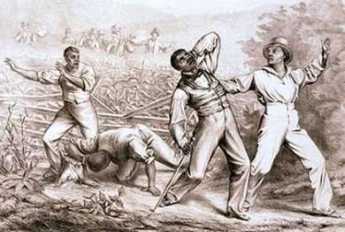 |
| Slave |
And then, the Fugitive Slave Law of 1850 began to sink in. It became evident that juries in the Northern states would routinely refuse to convict anyone under that law, or under the Dred Scott decision, or any other similar mandate of any branch of government. In effect, Northern juries threw down the gauntlet that if you wanted to preserve the right of trial by jury, you had better stop prosecuting those who flouted the Fugitive Slave law. In even broader terms, if you want to preserve a national government, you had better be cautious about strong-arming any impassioned local consensus. A rough translation of that in detail was that no filibuster, no log-rolling, no compromises, no oratory, no threats or other maneuvers in Congress were going to compel Northern juries to enforce slavery within their boundaries of control. All statutes lose some of their majesties when the congressional voting process is intensely examined, and public scrutiny of this law's passage had been particularly searching. Even if Southern congressmen would be successful in passing such laws, it wasn't going to have any effect around here. The leaders of Southern states quickly got a related message, and their own translation of it was, "We have got to declare our independence from this system of government that won't enforce its own laws". If juries can nullify, then states can nullify, and the national union was coming to an end. Both sides disagreed so strongly on this one issue they were willing, for the second time, to risk war for it.
Ku Klux Klan
The idea should be resisted that Jury Nullification is always a good thing. After the Civil War, many of the activities of the Ku Klux Klan were tolerated by sympathetic juries. Many lynch mobs of the Wild, Wild West were encouraged in the name of law and order. Prohibition of alcohol by the Volstead Act was imposed on one part of society by another, and Jury Nullification effectively endorsed rum-running, racketeering, and organized crime. The use of marijuana and abortion are two further examples where disagreement is so strong that compromise eludes us. What is at stake here is protecting the rights of a minority, within a society run by a majority. If minority belief is strong enough, jury nullification issues an unmistakable proclamation: "To proceed farther, means War."
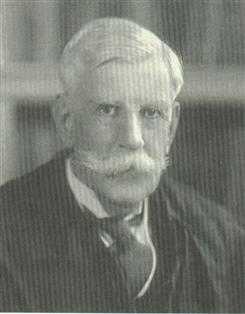 |
| Oliver Wendell Holmes |
That's a somewhat strange outcome for a process started by pacifist Quakers, so the search goes on for a better idea. Distinguished jurists differ on whether to leave things as they are. In a famous exchange, Oliver Wendell Holmes once had dinner with Judge Learned Hand, who on parting extended a lawyer jocularity, "Do justice, Sir, do justice." To which, Holmes then made the somewhat surly response, "That is not my job. My job is to apply the law."
Thus lacking any better approach, it is hard to blame the US Supreme Court for deciding this was something best left unmentioned any more than absolutely necessary. The signal which Justice Harlan gave in the majority opinion on the 1895 Sparf case was the very narrow ruling that a case may not be appealed, solely on the basis that the trial jury was not informed of its right to nullify the law in question. Encouraged by this vague hint, what has evolved has been a growing requirement that incoming jurors take an oath "to uphold the law", officers of the court (ie lawyers)are discouraged from informing a jury of its true power to nullify laws, and Judges are required to inform the jury in their charge that they are to "take the law as the judge lays it down" (ie leave appeals to higher courts). If a jury feels so strongly that it then persists in spite of those restraints, well, you apparently can't stop them. Nobody thinks this is a perfect solution, and aggrieved defendants like the Vietnam War protesters are quite vocal in their belief that the U.S. Supreme Court finally emerged with a visibly asinine principle: a jury does indeed have the right to nullify, but only as long as that jury is unaware it has that right. That's almost an open invitation to perjury if accurate; but while it's not precisely accurate, it comes close to being substantially true.
That's where matters stand, and apparently will stand, until someone finds better arguments than those of Benjamin Franklin, John Jay, Andrew Hamilton -- and William Penn.
North of Market
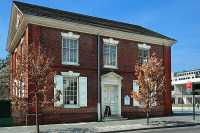
|
| Free Quaker Meeting House |
In their 1956 book "Philadelphia Scapple", Harold Donaldson Eberlein and Mrs. Henry Cadwalader give an interesting description of the evolution of the term "North of Market". In the early days of the city, almost all of the town was South of Market Street. In fact, an early 18th Century visitor once wrote that he always brought a fowling piece when he visited Philadelphia because the duck hunting was so good at the pond located at what is now 5th and Market.
When the Quaker meeting house was built at 4th and Arch Streets, many of the more important Quaker families thought it was important to build their houses nearby. In that way, Arch Street developed the reputation of being a Quaker Street. So the original meaning of the North of Market term was the Quaker ghetto. Quaker families continued to spread West along Arch Street or nearby, and this accounts for the location of the Friends Center at 15th and Cherry and related local activities. When the Free Quaker were evicted from the meeting at 4th and Arch because of their activities during the Revolution, they built their own meeting at -- 5th and Arch.
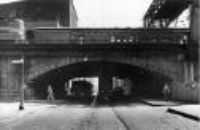
|
| Chinese wall |
During the Civil War, a number of people made fortunes that socially upscale people over in the Rittenhouse Square area considered disreputable, so elaborate but ostracized mansions marched due North up Broad Street, where they can still be observed as stranded whales in the slums, leaders without followers. The show houses of manufacturers of shoddy war goods soon gave the meaning of parvenu to the term North of Market.
And then, the Pennsylvania Railroad ran an elevated brick structure from 30th Street to City Hall Plaza, the so-called Chinese Wall. For nearly a century this ugly looming structure on Pennsylvania Boulevard, now John Kennedy Boulevard, with its smoky engines above, and dark dripping tunnels at street level, sliced the town in half and made it very unattractive to build or to live, North of Market. The Spring Garden area had some pretty large and expensive houses, but it was cut off by the railroad trestle and has only recently started to revive. It helped a lot to tear down the Chinese Wall, but that was fifty years ago, and the area has taken a long time to recover from the earlier diversion of social flow to the South of it. And, psychologically, North of Market will take even longer to recover from the implication of -- industrial slum.
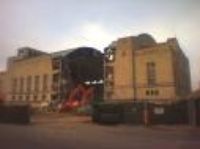
|
| center |
Meanwhile, of course, Oriental immigration settled along Arch Street at 9th to 12th Streets, and we now have our Chinatown there, complete with street signs in oriental lettering. In effect, we have a real Chinese Wall, a social one. Just what will happen to this group is unclear, since it is readily observable that they like to cluster together, unlike the East Indian immigrants, who head for the suburbs as fast as they can. Since the Chinese colony is physically blocked on all sides by the Vine Street Expressway, the Convention Center, and the Ben Franklin Bridge, it is hard to know where they will flow if the group gets much larger. The depressed Vine Street crosstown expressway makes a definitive border for downtown, and the contrast between the two sides of this expressway is striking. On one side is Camelot, and on the other side, almost nothing is being built. The future of North of Market, at the moment, is a little unclear.
Quaker Investment Committee
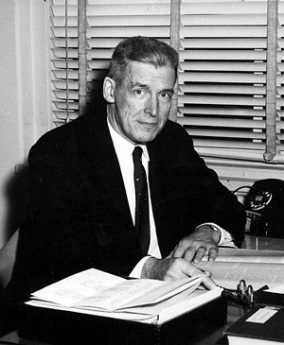
|
| Jonathan Rhoads |
Charitable institutions and other non-profit organizations occasionally assemble an endowment and thus develop a need for an oversight committee to hire (and occasionally fire) an investment manager, to monitor the fund's management, and to assess the manager's fees. The meetings of the oversight committee could, therefore, be pretty brief, related to two numbers. How had the endowment portfolio performed, compared with some acknowledged benchmark? To these two numbers might be added a brief summary of the investment management fees, compared with the usual benchmarks (40 basis points, or .4%, would be a common standard). However, an agenda so mercilessly sparse seems an inadequate reason to convene a group of worthies for an hour, and quite commonly the committee will chat about investments in general, hoping to pick up some personal pointers. A good tip or two makes the whole effort seem worthwhile.
On one such occasion in 1987, the famous Quaker surgeon Jonathan Rhoads, Sr was chairman of the committee. The manager of the endowment was a handsome fellow whose picture had occupied a full page of the New York Times financial pages just a day or two before this particular meeting. The picture had been truly spectacular, the tailoring was remarkable, and he surely had perfect teeth. As this gentleman entered the room, the committee gathered around, slapping his back and congratulating him on his fame with great jollity. Little did the group know that within thirty days, the stock market would have its most severe drop in almost twenty years. Unnoticed at first by the merry-makers, Jonathan Rhoads had sat down at the head of a perfectly empty long mahogany table, and was intoning to the empty seats, "We will now begin by reading the minutes of the last meeting of this committee". Visibly shaken, the group immediately broke up and took their seats.
Rhoads went on. We were now to hear the report of our portfolio by our manager. Proudly, it was noted that in February we had bought XYZ for 20, and in July we had sold it for 44. And in March we had bought ABCs for 60, and it now stands at 100. When he had concluded, the chairman said, "That's fine. That's just fine. But what bothers me is that point of confusion." Why, what confusion, Dr. Rhoads?
"The confusion between investment genius, and just being in a bull market." Later the same month, the stock market suddenly dropped 22% in one day, thus guaranteeing that no one in the room would ever forget the episode.
Quakers From the Indian Point of View
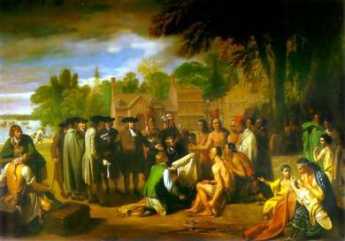
|
| William Penna and Indians |
The following property of the Nicholson family has been presented to the Haddonfield Friends Meeting in replica form. Although signed by John Haines, it is not readily apparent why this member of a very old New Jersey Quaker family was being addressed, just what it means that he signed it, or possibly whether John Haines was a name adopted by Corn Planter. Very likely, however, Haines was acting as public scribe, a common profession in all illiterate societies. As a matter of fact, there have been so many Joseph Nicholsons that it takes some tracing to identify just which one he was, too.
------------- To the Children of the friends of Onas, who first settled in Pennsylvania:
The request of the Corn Planter a Chief of the Seneca Nation --
Brothers, The Seneca Nation see, that the greater Spirit intends that they shall not continue to live by hunting, and they look round on every side and inquire who it is that shall teach them what is best for them to do. Your fathers have dealt fairly and honestly with our fathers, and they have charged us to remember it and we think it right to tell you, that we wish our Children to be taught the same principles by which your Fathers were guided in their Councils.
NicholsonsBrothers, We have too Little wisdom among us, we cannot teach our Children what we perceive their situation requires them to know, and we, therefore, ask you to instruct some of them -- we wish them to be instructed to read and to write and such other things as you teach your own Children, and especially to teach them to love peace.
Brothers, We desire of you to take under your care two Seneca boys and teach them as your own, and in order that they may be satisfied to remain with you and be easy in their minds that you will take with them the son of our interpreter and teach him also according to his desire.
Brothers, You know that it is not in our power to pay you for the education of these three boys, and therefore you must, if you do this thing look up to God for your reward.
Brothers, You will consider this request, and let us know what you determine to do -- If your Hearts are inclined toward us, and you will afford our Nation this great advantage, I will send my son as one of the boys to receive your instruction and at the time which you shall appoint.
Signed February 10. 1791 -- in the presence of Joseph Nicholson
his Corn X Planter Mark
John Haines
The Definition of a Real Philadelphian (1914)
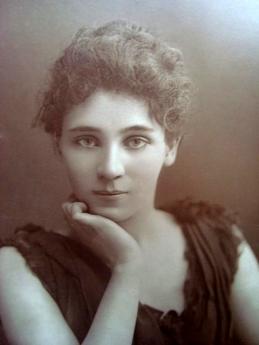
|
| Elizabeth Robbins Pennell |
There are several million people living in Philadelphia, but of course, not all of them are real Philadelphians. >Elizabeth Robbins Pennell, a friend and biographer of James McNeill Whistler, tells us the definition of a real Philadelphian in 1914.
"I think I have a right to call myself a Philadelphian, though I am not sure if Philadelphia is of the same opinion. I was born in Philadelphia, as my father was before me, but my ancestors, having had the sense to emigrate to America in time to make me as American as an American can be, were then so inconsiderate as to waste a couple of centuries in Virginia and Maryland, and my Grandfather was the first of the family to settle in a town where it is important, if you belong at all, to have belonged from the beginning. However, [my husband's] ancestors, with greater wisdom, became at the earliest available moment not only Philadelphians, but Philadelphia Friends, and how much more that means Philadelphians know without my telling them. And so, as he does belong from the beginning, and as I would have belonged had I had my choice, for I would rather be a Philadelphian than any other sort of American, I do not see why I cannot call myself one despite the blunder of my forefathers in so long calling themselves something else."
--Our Philadelphia, 1914
The Naming of Pennsylvania
On January 5, 1681, William Penn wrote a letter to his friend Robert Turner:
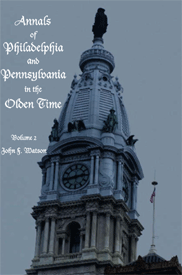
|
| Annals of Pennsylvania |
"This day my country was confirmed to me by the name of Pennsylvania, a name the King would give it, in honor of my father. I chose New Wales, being, as this, a pretty hilly country; but Penn, being Welsh for a head -- as Pennanmoire in Wales, and Penrith in Cumberland, and Penn in Buckinghamshire, the highest land in England, -- they called this Pennsylvania, which is the high or head woodlands, for I proposed (when the Secretary, a Welshman, refused to have it called New Wales), Sylvania, and they added Penn to it; and though I much opposed it and went to the King to have it struck out and altered, he said, 'twas past, and would take it upon him; nor would twenty Guineas move the under Secretaries to vary the name, -- for I feared lest it should be looked on as a vanity in me, and not as a respect in the king, as it truly was, to my father, whom he often mentions with praise."
John F. Watson, the author of what generations have called "Watson's Annuals," goes on to comment:
"If the cause was thus peculiar in its origin, it is not less remarkable in its effect, it being at this day perhaps the only government in existence which possesses the name of its founder."
Watson further makes the footnote: "Penn himself professed to have descended of the house of Tudor, in Wales, one of whom, dwelling on an eminence in Wales, received the name of John Pennunnith. He going afterward to reside in London, took the name of John Penn, i.e. John on the Hill."
The Schools of School House Lane

|
| Union School founded in 1759 |
The region of Philadelphia defined as Germantown is recorded by the last census as having about 50,000 inhabitants today, 40,000 of whom are of the black race. Germantown has always had an unusual concentration of schools of the highest quality, and here on one street alone there are four. School House Lane runs off to the West of Germantown Avenue, and was originally right at the center of town, the center of the action during the Revolutionary War. The most historic of the schools, the Union School founded in 1759, changed its name to Germantown Academy, and more recently picked up and moved to new quarters in Fort Washington. George Washington sent his nephew there, and its building served as a hospital for the wounded in the Battle of Germantown. When Germantown Academy moved out of Germantown, the Pennsylvania School for the Deaf moved into the vacated quarters. This school had been originally founded in 1820, and is one of nearly a hundred special schools for the deaf in the United States, operating as a quasi-public institution for about 170 students. A remarkable thing about all schools for the deaf is the high IQ of their students. Perhaps deaf underachievers are somehow filtered out by the struggle to adapt before they apply for admission, or perhaps there is something about being deaf that makes you smart. In any event, the average SAT scores of students from PSD, like all schools for the deaf, are always in the very highest ranks among secondary schools.
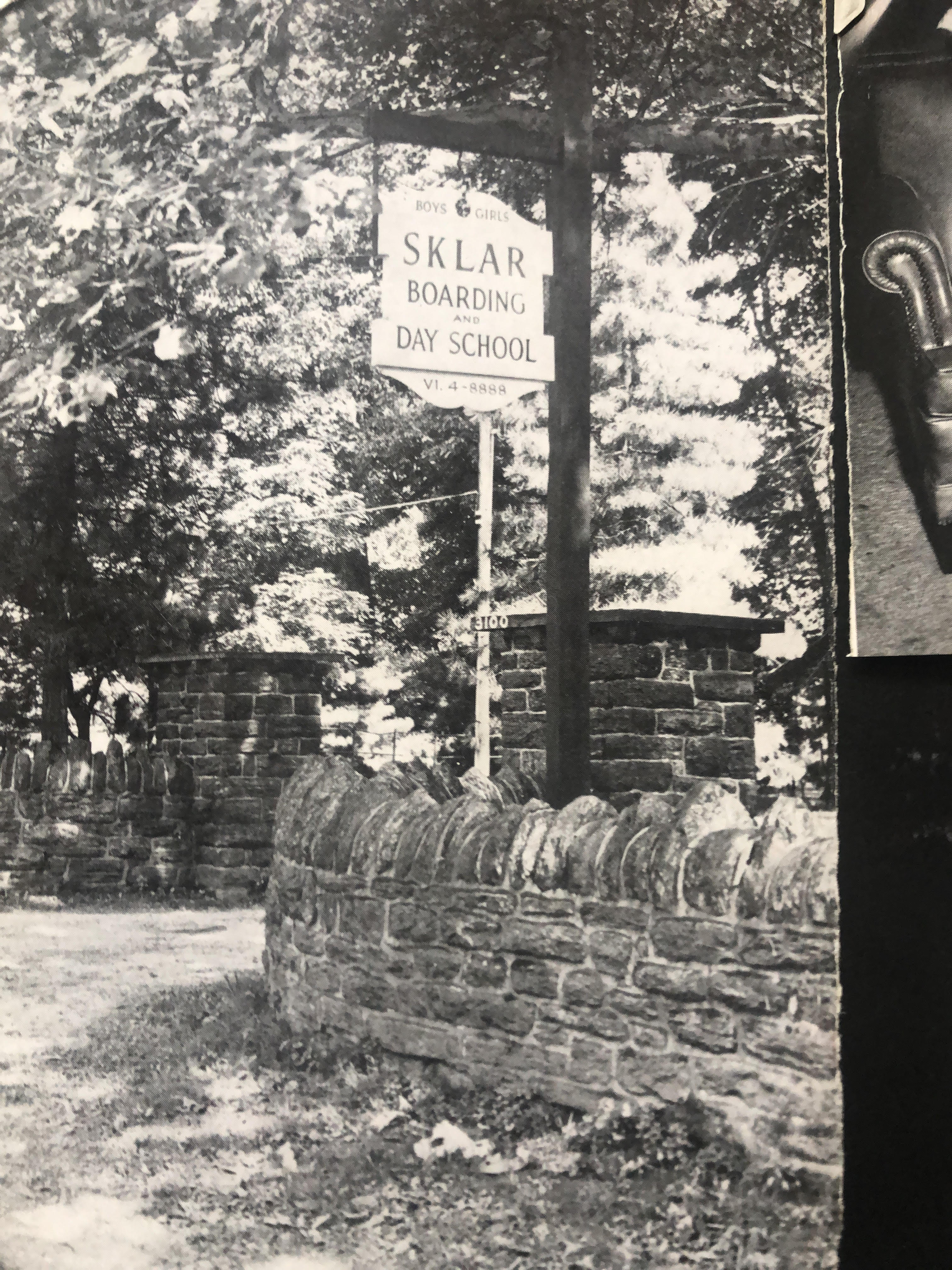
|
| Sklar School Entrance |
More or less next door to it, fronting on Coulter Street, is the Germantown Friends School(GFS), which enjoys and deserves the reputation of the most intellectually rigorous school in the Philadelphia region. There is little question about the Quakers of this school, founded in 1845, but relatively few of the students are now Quaker children. It's pretty expensive and quite uncompromising about its academic standards, but if you want to be accepted by a famous University, this is the place that can boast the most achievement of that variety. By no means all of its graduates become teachers, but alumni of this school do tend to gravitate to the top of academia. That could eventually put them on college admission committees, of course, and perhaps the admission process promotes itself. There can be little doubt that if most of a given college's admission committee happened to play the tuba, that university would soon fill up with tuba players.
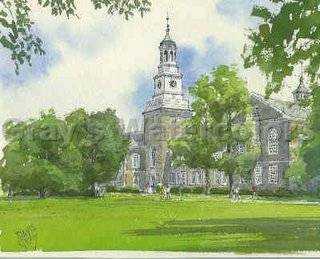
|
| William Penn Charter School |
Further West on School House Lane, is the William Penn Charter School. It's also Quaker, and while it doesn't work quite so hard at it as GFS does, it has plenty of social mission, a great deal more discipline, and plenty of competitive athletics. A minority of its students, also, are Quakers; but as a guess, most of its graduates are headed for disproportionate affluence anyway. The middle school is named for, and was donated by, the former chairman of Morgan Stanley back before Morgan Stanley sold itself to Dean Witter. This school was founded in 1689, and for a long time was located at 12th and Market Streets in Philadelphia, right where the famous PSFS building was built, the one that later converted to Lowe's Hotel .
Finally, near the crossing of Henry Avenue with Schoolhouse Lane, is the Philadelphia University. Since it was founded in 1999 it is the youngest of the schools on School House Lane, specializing in architecture and design, and seems headed for even broader curriculum. The University was formed by the merger of Ravenhill Academy for Girls, and the Philadelphia Textile School. The Textile School was itself formed during the 1876 Philadelphia Centennial, when local industrialists became concerned with how backward America seemed in its quality and design of textiles, compared with other nations which exhibited at that World's Fair. Next door, was once the home of William Weightman, a chemical manufacturer who was reputed to be the richest man in Pennsylvania. After his death, the rather grand estate became the site of the Ravenhill School for Girls, which was the school which could boast Grace Kelly for an alumna. That was natural enough since she lived just around the corner on Henry Avenue and could walk to school. The contrast between the two ends of School House Lane, Henry Avenue on one end, and Germantown Avenue on the other, is just astounding.
So there you have School House Lane. A few short blocks with three distinguished preparatory schools and a university. Plus, the site of three other famous schools which have either moved or merged. You might think Germantown was the home of myriads of school teachers, but that isn't exactly so. It's hard to say just what this complex anomalous situation proves, except to voice the opinion that it is somehow at the heart of what Philadelphia really is.
Note, kind readers have also sent me the names of six more schools on Schoolhouse Lane. Some of them may only be name changes, but the list includes Parkway Day School, Sklar School, Philadelphia Textile and Science, Germantown Stevens Academy, Germantown Lutheran Academy, Greene Street Friends School. (See Comments.)
Quakers Turn Their Backs on Power
There have been a number of excellent books about Ben Franklin lately, but all take his side in the dispute with Quakers. These authors relate Franklin struggled with the Quakers, fought with that political party, heroically overcame them with wisdom and guile. Good thing, too, or we all might still be subjects of the British crown.
Well, within the Quaker community these events are viewed differently. Around the year 1755, the Quakers who owned and ran Pennsylvania abruptly turned away from politics and left the government to their political enemies, rather than compromise religious principles. It is difficult to think of any other instance in history when a ruling party decided to become humble subjects of the opposing party, simply because they refused to do what obviously had to be done.
The background of this perplexing issue goes back to the founding of the Quaker colonies, which had lived in a real Utopia for seventy-five years. Repeatedly it had been true that if they just followed the highest principle, things worked out well for everybody. For example, they didn't need to buy the land a second time from the Indians, but they did, with the gratifying result of peaceful co-existence while other colonies experienced constant Indian wars. Penn negotiated the borders of his states with the neighbors, and although it took decades, brought peace and prosperous trade in return. Strict honesty in mercantile matters led to a reputation for trustworthiness, and that in turn led to prosperous commerce. Using a fixed price rather than haggling over price speeded up transactions, gained respect for fair dealing, led to more prosperity. Just you do the right thing, and all will be well. That includes extending freedom of religion, welcoming strangers to the colony to worship together in peace.
Toward the end of this Utopian period, some questions began to arise. More and more non-Quakers came to the colony, making the colony progressively less Quaker. That was a silent disappointment to William Penn. The founder had been a charismatic evangelist for his religion as a youth but came to grave disappointment about peaceful persuasion by the end of his life. Convincing the adherents of other religions of reasonable Quaker principles had often proved to be as intractably difficult as arguing religion with Henry VIII. The Quakers, a religion without a clergy, were appalled that so many adherents of other religions did not concern themselves with earnest reasoning, preferring to do strictly what their ministers told them to do.
Another disconcerting thought was growing within the Quaker community that success itself might be corrupting them. Worldliness seemed to grow inevitably out of wealth and prominence; all power does tend to corrupt. If you are rich, people always seem to steal from you, and that leads to violent punishments, something regrettable in itself. These were not new arguments, but by 1750 nearly a century of success in paradise had begun to stir Pennsylvania Quakers to wonder why more of their neighbors did not ask to become Members. These were troubling concerns of the day which would probably have worked themselves out, except that far-away France and England declared war on each other. The French responded by stirring up the Indians along the Western frontier. Pennsylvania settlers were soon scalped, kidnapped and burned at the stake. Something had to be done about it since protection was a duty of government, and effective protection now had to be non-peaceful. The Quakers dithered. More Scotch-Irish settlers around Pittsburgh were slaughtered. The Quaker meetings sent minutes to the Quakers in the legislature that they must not compromise their peaceful principles, and the Scotch-Irish exploded with rage. The Meetings told their representatives to resign from office, their members to retreat from politics altogether.
So Ben Franklin rose to the occasion, and General Forbes led an army to Fort Duquesne at the forks of Ohio, and Colonel George Washington was the hero of that day. The French were driven off the frontier, the English were victorious at Quebec. North America became a British continent.
Meanwhile, the Quakers retreated into tight-lipped solitude. And self-doubt, because the episode seemed to demonstrate that rigidly peaceful principles cannot govern a state or a nation if that nation contains others unwilling to be sacrificed for peaceful principles. An unthinkable logic emerged; freedom of religion led to conflict with the duty of a non-violent government to protect its citizens. It began to be clear it was the duty of government to enforce its laws, by force if necessary. Underneath the pile of documents, was a gun.
So, the Quakers proudly walked away from power and dominance, for all time. Sadly, too, because the significance was clear. Peaceful utopia may be not possible, within a dangerous world.
Keeping Lunaticks Off the Streets
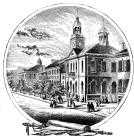
|
| Independence Hall |
Until this year, there was a Beautiful Mall stretching north from the State House (Independence Hall) to the approaches of the Benjamin Franklin Bridge. Concealing an enormous parking garage underneath it, the surface looked like a several-block lawn lined with flowering trees in the spring, framing the beautiful Eighteenth Century building (just as the mall in Washington leads up to the Washington Monument.)
Stretching from Independence Hall east to the Delaware River is another mall filled with historical buildings like Carpenters Hall , the First Bank(Girard's) and Second Bank (Biddle's), the Old and the New Custom houses, the American Philosophical Society, and others. The eastern mall was the property of the State of Pennsylvania when it was created, but it soon seemed more economical to the frugal rural legislature to turn it over to the federally funded National Park Service, joining the mall stretching northward. Well, somebody got another ton of federal money appropriated, and now we are filling the north mall with buildings which largely hide Independence Hall from the passersby. With just a few more Congressional earmarks, the imposing beauty of the mall will be submerged, but it hasn't quite reached that point yet. There is a perfectly enormous New Visitors Center, containing a couple of auditoriums and a big bookstore. Mostly the concept seems to be to provide a place to get out of the rain if you are an out of town visitor, provide public bathrooms, and a place to get a hot dog. At least the visitors center is red brick, and arched, with white woodwork. At the far northern end is an overwhelming stark granite block of a building, which will open July 4, 2003. It is a Constitution Center, claimed to be an interactive museum, and we shall see what we shall see. The looming monolith overwhelms and blocks the view to Independence Hall, and it better be good, when the insides get finished.
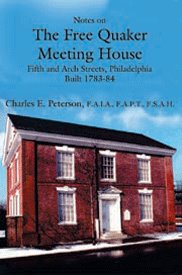
|
| Free Quaker Meeting |
If Independence Hall, which after all is a block long, is overwhelmed by the new constructions, the Free Quaker Meeting is totally hidden. This perfectly charming Eighteenths Century Quaker meetinghouse is just across Fifth Street from Benjamin Franklin's Grave, and just across Arch Street from the Constitution thing, completely in its shadow. Charles E. Peterson designed the restoration of the building, which had been added to and detracted from, over the years, but you can be sure its interior is now both beautiful and authentic. Before you go in, notice the inscription on the plaque under the northern eaves:
By General Subscription for the FREE QUAKERS. Erected in the Year of OUR LORD 1783 and of the EMPIRE 8.
The Quakers who built this building seem to have thought they were part of a new empire, but that implies an emperor, and of course, one was never created. Three years after the dedication of this building the Constitutional Convention met in the same Independence Hall, and our national form of government was somewhat strengthened from the Articles of Confederation also written here. Benjamin Franklin had a hand in both documents, but the first one was mainly composed by John Dickinson, and the second one by James Madison. If you go into the Free Quaker building, it seems to be a single large room with an interior balcony, and a couple of small staircases in the back leading down to what would presumably be restrooms. As a matter of fact, the Park Service extended the basement to include kitchen and dining room, and several offices for themselves which are a surprise if you are allowed to go down to see them.
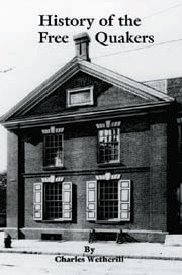
|
| History of Free Quakers |
Charlie Peterson wrote a book about the restoration, but the main book about the spiritual history of this group was written by Charles Wetherill. Quakers, as everyone ought to know, are pacifists. The American Revolution put a number of them in a quandary because they agreed that Great Britain was injuring their rights by denying them a representative in the Parliament which ruled them but resorting to violence was another matter entirely. Eventually, a group did break away from the main Quaker church to fight for independence. They were prompt "readout of the meeting", the equivalent of being excommunicated, not allowed to worship in the regular meeting houses they had helped finance or to be buried in the church graveyards. Samuel Wetherill was one of the leaders of this group, just as his descendants are the most active today in the surviving historical society. Samuel created quite a furor, demanding to use the Orthodox meeting house and burial grounds. He was, in his own view, just as much a Quaker as the others since no doctrine is absolutely fixed in that religion, and was freely entitled to speak his mind to persuade others of the rightness of his sincere positions. The main body of Quakers would have none of it, and the Free Quakers were firmly expelled, forced to hold a public subscription and build their own meeting house. Wetherill of course personally knew every one of the members who expelled him, and there may be some truth to his loud, pointed and unchallenged contention that the true division was not between pacifists and fighters, but between Tories and advocates of Independence. Whatever the truth of these accusations, it does seem in retrospect that the split was fairly divided between wealthy established merchants, and small shopkeepers and artisans. Quite a few now-famous names appear on the rolls of the Free Quakers, like Timothy Matlack the actual Scribe of the Declaration of Independence document, Biddles, Lippincott, John Bartram,Crispins, Kembles, Trippes, and Wetherills. When the meeting had dwindled down in 1830 to two lone parishioners, one was a Wetherill, and the other was Betsy Ross, herself.
A comment is submitted by a reader:
I think your description of the Free Quakers oversimplifies their origins. It is true that Samuel Wetherill was disowned by Friends for his military activities. However, other Free Quaker leaders were bounced -- often years before the Revolution -- for other reasons. Timothy Matlack, for not paying his debts. Betsy Ross, for an improper marriage. Christopher Marshall, for counterfeiting. I haven't traced everyone listed as a member in the (1907?) Stackhouse history of the Free Quakers. But I did search in Quaker records for perhaps a dozen and found no records that people with those names had ever been Quakers. I think it would be more accurate to say of the Free Quakers that the Revolution drew together people of many different types and that when some of those people had things in common -- such as Quaker background -- they united around those things. (Posted by Mark E. Dixon )
| Posted by: John | Sep 18, 2008 6:35 PM |
64 Blogs
Rufus Jones, Quaker
 Rufus Jones dominated the Quaker religion for two generations, bringing unity out of disunity, and creating some towering institutions in the process
Rufus Jones dominated the Quaker religion for two generations, bringing unity out of disunity, and creating some towering institutions in the process
The Quaker Who Would Be King
Two Americans, Josiah Harlan, and George Bush conquered Afghanistan, and for centuries others who tried it got massacred. Harlan, a Chester County Quaker farm boy with more brazenness than Alexander the Great, died in San Francisco while impersonating a physician.
James A. Michener (1907-1997)
 < James A. Michener was a birthright Quaker from Doylestown, Pennsylvania, where he made his home when he wasn't traveling. He wrote 40 books, most notably "South Pacific", but lived a fairly simple smalltown life, meanwhile giving over $100 million to charity.
< James A. Michener was a birthright Quaker from Doylestown, Pennsylvania, where he made his home when he wasn't traveling. He wrote 40 books, most notably "South Pacific", but lived a fairly simple smalltown life, meanwhile giving over $100 million to charity.
Slaveowning Quaker Steps Up To The Plate
 Slaves were valuable property, but it became a Quaker duty to give them their freedom. John Woolman, who started the idea, suggested freeing them in your will.
Slaves were valuable property, but it became a Quaker duty to give them their freedom. John Woolman, who started the idea, suggested freeing them in your will.
Differences of Quaker Opinion
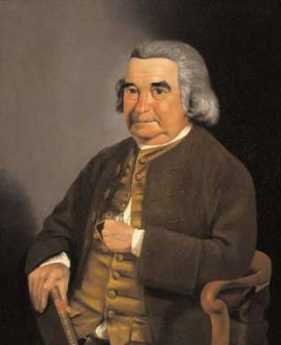 Some Quakers refused to go along with the abolition of slavery. That was particularly true in Newport, RI, the North American point of the triangular slave trade.
Some Quakers refused to go along with the abolition of slavery. That was particularly true in Newport, RI, the North American point of the triangular slave trade.
Edward Hicks: Peaceable Kingdoms
 This uneducated Bucks County farm boy has steadily risen in reputation as a painter of primitive art, just as he and his cousin have become spiritual leaders of non-dogmatic religious thought.
This uneducated Bucks County farm boy has steadily risen in reputation as a painter of primitive art, just as he and his cousin have become spiritual leaders of non-dogmatic religious thought.
Victor Rambo, Indian Eye Surgeon
 A twelfth-generation Philadelphian devoted his life to restoring eyesight to thousands of poor people in India.
A twelfth-generation Philadelphian devoted his life to restoring eyesight to thousands of poor people in India.
Tom Paine: Rabble-Rousing Quaker?
 Tom Paine is the one who mainly set the fires of revolution burning, and Franklin sent him here, got him a job, circulated his pamphlets. In spite of Franklin's sponsorship, Washington would cross the street to avoid Paine, and fellow Quakers would have no part of his violence. His later life showed him to be a rebel without a cause.
Tom Paine is the one who mainly set the fires of revolution burning, and Franklin sent him here, got him a job, circulated his pamphlets. In spite of Franklin's sponsorship, Washington would cross the street to avoid Paine, and fellow Quakers would have no part of his violence. His later life showed him to be a rebel without a cause.
The Origins of Haddonfield
 Haddonfield was founded by a 19-year-old Quaker girl in 1701 when it was still a fairly dangerous place to walk around. She has over 140 direct descendants, and forty of them still live in the town. Some famous scenes from the Revolutionary War took place here.
Haddonfield was founded by a 19-year-old Quaker girl in 1701 when it was still a fairly dangerous place to walk around. She has over 140 direct descendants, and forty of them still live in the town. Some famous scenes from the Revolutionary War took place here.
The Empire Visits Haddonfield, Briefly
 All religions were welcomed and tolerated, but the English government was deathly fearful of French Catholics in Canada, and Spanish Catholics in Florida. The Stuart kings were Catholic, sort of, but the important issue was protecting colonial real estate more than protecting doctrinal purity.
All religions were welcomed and tolerated, but the English government was deathly fearful of French Catholics in Canada, and Spanish Catholics in Florida. The Stuart kings were Catholic, sort of, but the important issue was protecting colonial real estate more than protecting doctrinal purity.
Pennyslvania's Boundary: David Rittenhouse, Hero, Lord Baltimore, Villain
 Because a local genius invented and perfected surveying instruments, America is one of the few nations in the world with straight-line boundaries.
Because a local genius invented and perfected surveying instruments, America is one of the few nations in the world with straight-line boundaries.
Marian B. Sanders, Quaker Activist, 87

John Bartram's Garden
 Bartram's farm dates back to the earliest days of Philadelphia, and it's still much the same farm, right in the midst of urban.
Bartram's farm dates back to the earliest days of Philadelphia, and it's still much the same farm, right in the midst of urban.
Slavery: If This be done well, What is done evil?
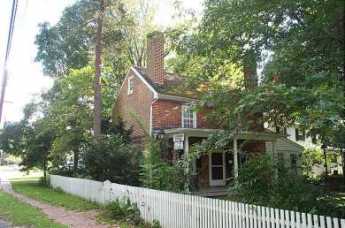 Philadelphia German Quakers were the first to protest the evils of slavery.
Philadelphia German Quakers were the first to protest the evils of slavery.
Inazo Nitobe, Quaker Samurai
 One of the most revered leaders of modern Japan was a converted Samurai, married to a Philadelphia Quaker. His father was an advisor to the Emperor, a family of famous warriors.
One of the most revered leaders of modern Japan was a converted Samurai, married to a Philadelphia Quaker. His father was an advisor to the Emperor, a family of famous warriors.
Henry Cadbury Dresses Up for the King
 What should a plain-speech Quaker wear to the ceremony, if the King of Sweden is giving him the Nobel Prize?
What should a plain-speech Quaker wear to the ceremony, if the King of Sweden is giving him the Nobel Prize?
Germantown Before 1730
 The early German settlers of Germantown were religious intellectuals, with a Swiss background and a history of religious martyrdom.
The early German settlers of Germantown were religious intellectuals, with a Swiss background and a history of religious martyrdom.
Dr. Cadwalader's Hat
 Sometimes it's hard for others to understand what makes Quakers tick.
Sometimes it's hard for others to understand what makes Quakers tick.
Contemporary Germantown
 "Well," said Bockus, "Every famous surgeon I know, has a house on an island, somewhere. Where's your island?".
"Well," said Bockus, "Every famous surgeon I know, has a house on an island, somewhere. Where's your island?".
John Bogle, A Prophet In Our Valley
 John Bogle invented the index fund. Lower cost, better performance.
John Bogle invented the index fund. Lower cost, better performance.
Lin
 Can a town of 5000 residents, with a two hundred-bed hospital, have the services of the best surgeon in the world? It all depends on your definitions.
Can a town of 5000 residents, with a two hundred-bed hospital, have the services of the best surgeon in the world? It all depends on your definitions.
Pembertons
 One of the oldest, most prominent Quaker families contained a multitude of famous, rich, distinguished leaders. Many suffered imprisonment or exile for their pacifism, but one Pemberton is the highest-ranking wartime general buried in Laurel Hill Cemetery. He was a Confederate.
One of the oldest, most prominent Quaker families contained a multitude of famous, rich, distinguished leaders. Many suffered imprisonment or exile for their pacifism, but one Pemberton is the highest-ranking wartime general buried in Laurel Hill Cemetery. He was a Confederate.
Logan, Franklin, Library
 James Logan and Benjamin Franklin were at the opposite ends of the social scale in Colonial Philadelphia and were to adopt strongly differing political views. But each recognized the intellectual power of the other, and they were fast friends.
James Logan and Benjamin Franklin were at the opposite ends of the social scale in Colonial Philadelphia and were to adopt strongly differing political views. But each recognized the intellectual power of the other, and they were fast friends.
Two Hotheads May Have Destroyed an Empire
 Charles Townshend and William Bradford were separated by an ocean, and surely never met. But if any two people can be said to have deliberately provoked the American Revolution, these two must be considered.
Charles Townshend and William Bradford were separated by an ocean, and surely never met. But if any two people can be said to have deliberately provoked the American Revolution, these two must be considered.
Quaker Gray Turns Quaker Green
 Quakers mean to turn their headquarters near Philadelphia City Hall into a glowing example of how to save money while they save their environment.
Quakers mean to turn their headquarters near Philadelphia City Hall into a glowing example of how to save money while they save their environment.
Pennsbury Manor
 The Delaware River takes an abrupt right turn at Trenton, creating extensive wetlands for miles around. Whatever its environmental drawbacks, the river delta is moving toward landfill and "development". Come back in fifteen years and be amazed.
The Delaware River takes an abrupt right turn at Trenton, creating extensive wetlands for miles around. Whatever its environmental drawbacks, the river delta is moving toward landfill and "development". Come back in fifteen years and be amazed.
Bertrand Russell Disturbs the Barnes Foundation Neighbors
 How one of Britain's most notorious philosophers wandered into the city of brotherly love and vaulted out of destitution to wealth.
How one of Britain's most notorious philosophers wandered into the city of brotherly love and vaulted out of destitution to wealth.
Nixon, Reconsidered
 It takes a long time to evaluate a President, even longer to be confident you evaluated correctly.
It takes a long time to evaluate a President, even longer to be confident you evaluated correctly.
Herbert Hoover, Mining Engineer
 Herbert Clark Hoover was a Quaker, an outstanding executive, a hero of famine relief, a loyal Republican, and President of the United States elected by a landslide vote, then defeated by one. But above all, he was a mining engineer.
Herbert Clark Hoover was a Quaker, an outstanding executive, a hero of famine relief, a loyal Republican, and President of the United States elected by a landslide vote, then defeated by one. But above all, he was a mining engineer.
Morris Arboretum
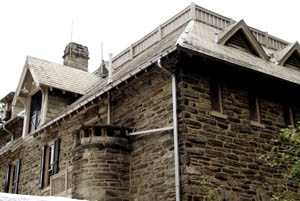 At the furthermost corner of Fairmount Park, the former estate of John and Lydia Morris is run as a public arboretum, one of the two or three finest in North America.
At the furthermost corner of Fairmount Park, the former estate of John and Lydia Morris is run as a public arboretum, one of the two or three finest in North America.
Quaker Efficiency Expert: Frederick Winslow Taylor 1856-1915
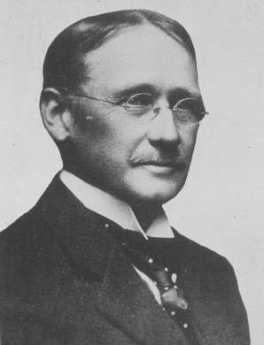 A rich Germantown Quaker boy became the world's symbol of the efficiency expert with a stop-watch, hated by Labor Unions but admired by Lenin and Stalin. He enriched the Midvale Steel Company with his invention of high-speed steel but was fired by Bethlehem Steel for eliminating too many employs. 000..0ees. Peter Drucker placed him in the class of innovators beside Darwin and Freud.
A rich Germantown Quaker boy became the world's symbol of the efficiency expert with a stop-watch, hated by Labor Unions but admired by Lenin and Stalin. He enriched the Midvale Steel Company with his invention of high-speed steel but was fired by Bethlehem Steel for eliminating too many employs. 000..0ees. Peter Drucker placed him in the class of innovators beside Darwin and Freud.
Doing Well, Doing Good.
 A board member of Rotary International recently ran an Afghanistan relief program and wrote a novel about the Battle of Brandywine. He's a Quaker, lives on a farm, and is chairman of the boards of several organizations.
A board member of Rotary International recently ran an Afghanistan relief program and wrote a novel about the Battle of Brandywine. He's a Quaker, lives on a farm, and is chairman of the boards of several organizations.
Two Pacifists: Einstein and Eddington
 The English Quaker Sir Arthur Eddington was granted draft exemption during World War I, on condition that he conduct a test of the Theory of Relativity produced by the German conscientious objector, Albert Einstein. Einstein won.
The English Quaker Sir Arthur Eddington was granted draft exemption during World War I, on condition that he conduct a test of the Theory of Relativity produced by the German conscientious objector, Albert Einstein. Einstein won.
Burlington County, NJ

A Pennsylvania Farmer in Delaware
 John Dickinson achieved national fame in 1773 by publishing twelve letters written earlier denouncing the Townshend Acts. They were published anonymously as Letters From a Pennsylvania Farmer. His farm, curiously, was in Delaware.
John Dickinson achieved national fame in 1773 by publishing twelve letters written earlier denouncing the Townshend Acts. They were published anonymously as Letters From a Pennsylvania Farmer. His farm, curiously, was in Delaware.
John Dickinson, Quaker Hamlet
 John Dickinson was the most respected lawyer and politician of his time. He had a lot to do with writing the Declaration of Independence but refused to sign it.
John Dickinson was the most respected lawyer and politician of his time. He had a lot to do with writing the Declaration of Independence but refused to sign it.
Advantages and Disadvantages of Being a Small Country
 Remaining a small country has many merits, but one big demerit. Your neighbors are tempted to swallow you up.
Remaining a small country has many merits, but one big demerit. Your neighbors are tempted to swallow you up.
Settlement Music School
 Without much notice, fifteen thousand music students attend six branches of a school with connections to the NAACP, ACLU, and the Bull Moose Party.
Without much notice, fifteen thousand music students attend six branches of a school with connections to the NAACP, ACLU, and the Bull Moose Party.
John Head, His Book of Account, 1718-1753
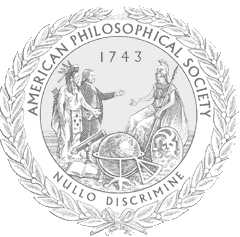 The equivalent of the rosetta stone for colonial commerce had been sitting on George Vaux's shelf for six generations.
The equivalent of the rosetta stone for colonial commerce had been sitting on George Vaux's shelf for six generations.
East Jersey's Decline and Fall
 Some day, a novelist will make East Jersey famous. There's lots of material there.
Some day, a novelist will make East Jersey famous. There's lots of material there.
George Willoughby, 95, Peace Activist
 In The Philadelphia Inquirer for February 4, 2010, By Claudia Vargas Inquirer Writer.
In The Philadelphia Inquirer for February 4, 2010, By Claudia Vargas Inquirer Writer.
Philadelphia Chromosome
 Just about everybody has 46 chromosomes in every cell in the body. Some people have more than that: they have the Philadelphia Chromosome.
Just about everybody has 46 chromosomes in every cell in the body. Some people have more than that: they have the Philadelphia Chromosome.
Zane Grey, Dentist
 Owen Wister may have invented the theme of the noble cowboy, but Zane Grey made it famous.
Owen Wister may have invented the theme of the noble cowboy, but Zane Grey made it famous.
J. Edgar Thomson, Pres. PRR 1852-1874
 J. Edgar Thompson was a quiet Quaker engineer who expanded the Pennsylvania Railroad over the old canal system, shifted from wood to coal, organized the personnel structure to meet modern needs, and converted PRR from a local to a national railroad.
J. Edgar Thompson was a quiet Quaker engineer who expanded the Pennsylvania Railroad over the old canal system, shifted from wood to coal, organized the personnel structure to meet modern needs, and converted PRR from a local to a national railroad.
Tyler Arboretum
 A 650-acre Arboretum next to a 2500-acre state park makes for a lot of nature walks and bird watching, as well as a gazillion azaleas and tree specimens. The only serpentine barren in Delaware County is located there.
A 650-acre Arboretum next to a 2500-acre state park makes for a lot of nature walks and bird watching, as well as a gazillion azaleas and tree specimens. The only serpentine barren in Delaware County is located there.
Quaker Mary Dyer and Algernon Sydney
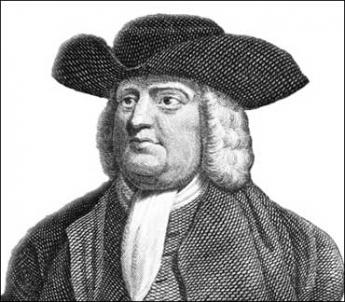 William Penn did not invent Quakerism, but he greatly refined it. Mary Dyer pulled Quakerism toward greater extremism. Algernon Sydney the lawyer pulled it toward a more orderly conservatism.
William Penn did not invent Quakerism, but he greatly refined it. Mary Dyer pulled Quakerism toward greater extremism. Algernon Sydney the lawyer pulled it toward a more orderly conservatism.
State in Schuylkill Fishing Club
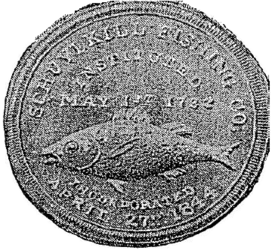 Unless you listen to some quibbles from White's in London, the Schuylkill Fishing Club of the State in Schuylkill is the oldest organized men's club in the world. And even if that exception is admitted, it's the oldest men's club in America. It's no secret, but it's very private.
Unless you listen to some quibbles from White's in London, the Schuylkill Fishing Club of the State in Schuylkill is the oldest organized men's club in the world. And even if that exception is admitted, it's the oldest men's club in America. It's no secret, but it's very private.
Espionage in the Revolution
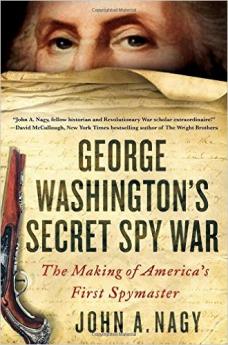 Almost everyone in the American Revolution could speak English, so it is not surprising to hear of many spies.
Almost everyone in the American Revolution could speak English, so it is not surprising to hear of many spies.
One Big Brewerytown
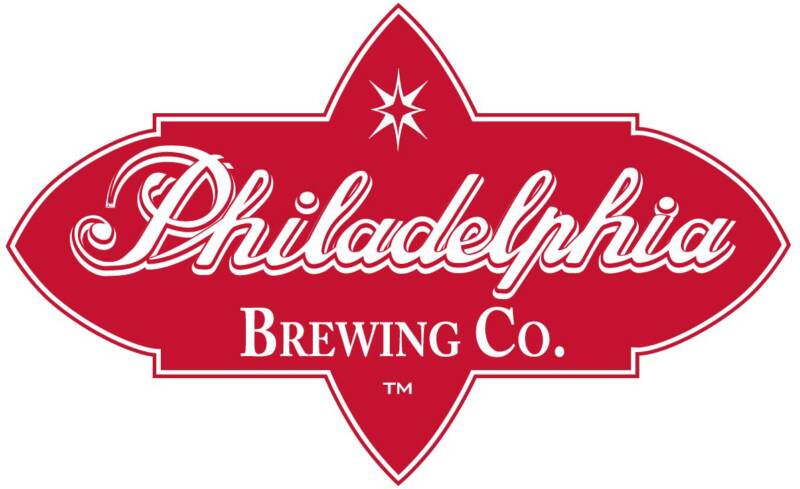 It's hard to realize that Philadelphia was the center of beer production in America until fairly recently. It's been argued it is still the center of consumption.
It's hard to realize that Philadelphia was the center of beer production in America until fairly recently. It's been argued it is still the center of consumption.
American Chestnut Trees
 Scarcely a century ago, American Chestnut trees were a quarter of all trees in America. Now, they are almost all gone, but a thousand volunteers are trying to rescue them.
Scarcely a century ago, American Chestnut trees were a quarter of all trees in America. Now, they are almost all gone, but a thousand volunteers are trying to rescue them.
The King's Road
 It's only been performed fifteen or twenty times, but Hayyr Kaufman's musical comedy captures the real spirit of Olde Haddonfield.
It's only been performed fifteen or twenty times, but Hayyr Kaufman's musical comedy captures the real spirit of Olde Haddonfield.
State and Federal Powers: Historical Review
Millennials: The New Romantics?
 The romantic period of literature is said to have followed the Enlightenment. Maybe they were just different people at the same time.
The romantic period of literature is said to have followed the Enlightenment. Maybe they were just different people at the same time.
The No-Doctrine Doctrine
 The doctrine of Quakerism is to have no doctrine. It has provoked two main schisms in the church; George Keith making a plea for at least some doctrine, Elias Hicks leading a later move back to simplicity.
The doctrine of Quakerism is to have no doctrine. It has provoked two main schisms in the church; George Keith making a plea for at least some doctrine, Elias Hicks leading a later move back to simplicity.
Jury Nullification
 William Penn demonstrated one of the most incisive legal minds in England by trapping the British courts in what remains a central unresolved dilemma for the law. He was the defendant in his own case. By the South's way of looking at things, it was a pacifist effort to restrain mindless abolitionism. Meanwhile, both sides calculated it would win if the South decided to fight.
William Penn demonstrated one of the most incisive legal minds in England by trapping the British courts in what remains a central unresolved dilemma for the law. He was the defendant in his own case. By the South's way of looking at things, it was a pacifist effort to restrain mindless abolitionism. Meanwhile, both sides calculated it would win if the South decided to fight.
North of Market
 This old local expression originally pointed to where the Quakers live on Arch Street, but over the centuries has taken on a lot of less flattering associations.
This old local expression originally pointed to where the Quakers live on Arch Street, but over the centuries has taken on a lot of less flattering associations.
Quaker Investment Committee
 Quakers expect results from their investment managers, not just Wall Street gossip.
Quakers expect results from their investment managers, not just Wall Street gossip.
Quakers From the Indian Point of View
 The Iroquois were fierce warriors, but they could see they would need better education to survive in a new world.
The Iroquois were fierce warriors, but they could see they would need better education to survive in a new world.
The Definition of a Real Philadelphian (1914)

The Naming of Pennsylvania
 King Charles gave Penn as much land as the whole of England, and named it after William Penn
King Charles gave Penn as much land as the whole of England, and named it after William Penn
The Schools of School House Lane
 Exclusive privates schools and colleges are usually to be found in isolated rural settings. But our oldest, best, and most famous schools are clustered together in a neighborhood that is far from exclusive.
Exclusive privates schools and colleges are usually to be found in isolated rural settings. But our oldest, best, and most famous schools are clustered together in a neighborhood that is far from exclusive.
Quakers Turn Their Backs on Power
During the French and Indian War, the Quakers who ruled Pennsylvania were forced to choose between political power and peaceful principles. They withdrew from power.
Keeping Lunaticks Off the Streets
Free Quaker Meetinghouse
 It's only open a few days each year, but the red brick building at 5th and Arch was the meeting house for those few Quakers, including Betsy Ross, who fought for the Revolution. The Park Service has made a beautiful restoration, which deserves to be seen by more people.
It's only open a few days each year, but the red brick building at 5th and Arch was the meeting house for those few Quakers, including Betsy Ross, who fought for the Revolution. The Park Service has made a beautiful restoration, which deserves to be seen by more people.
